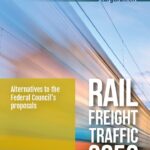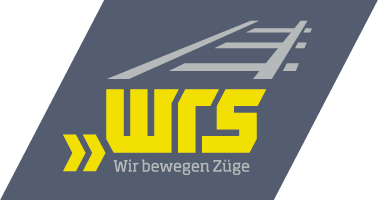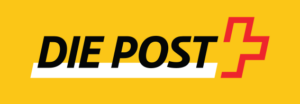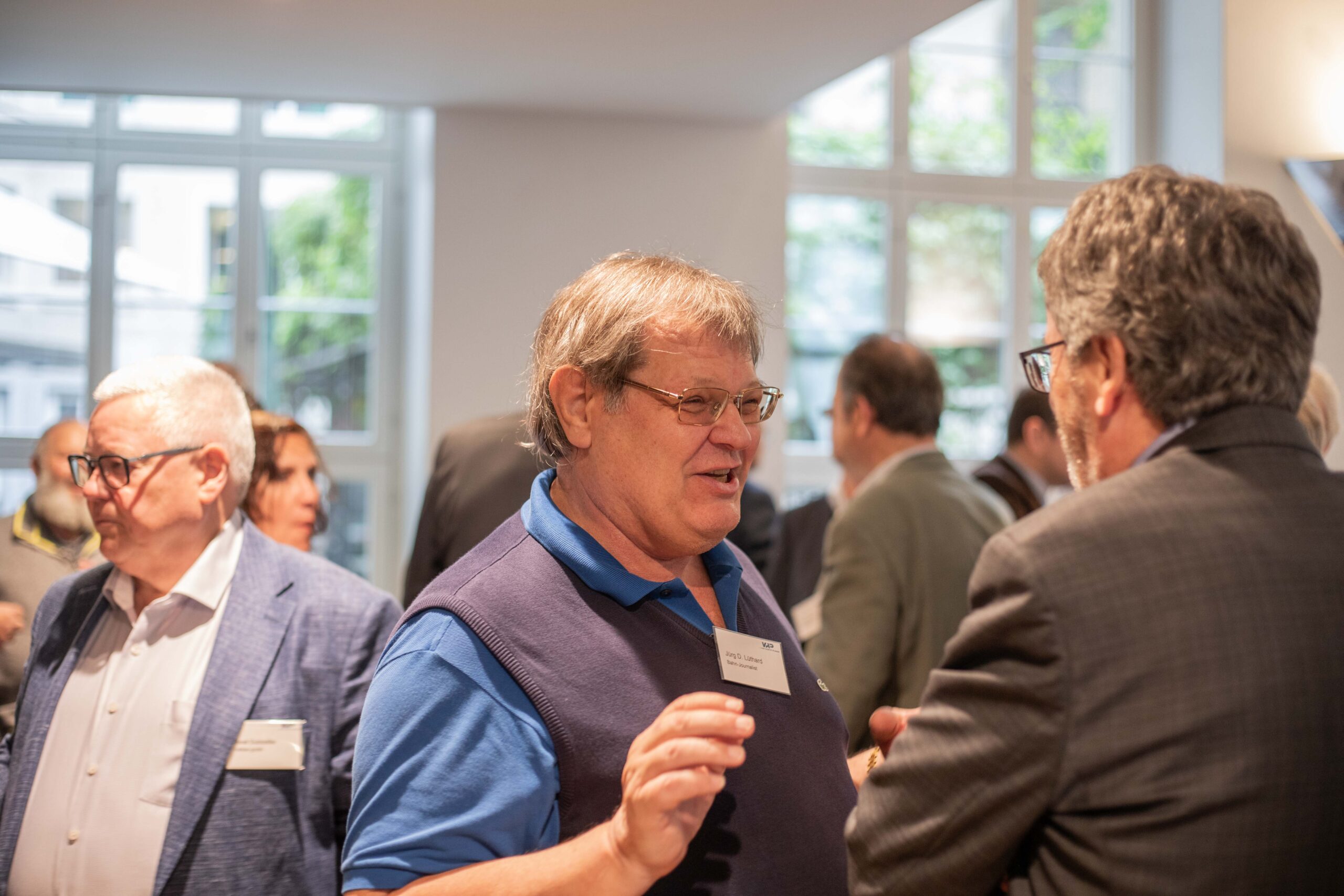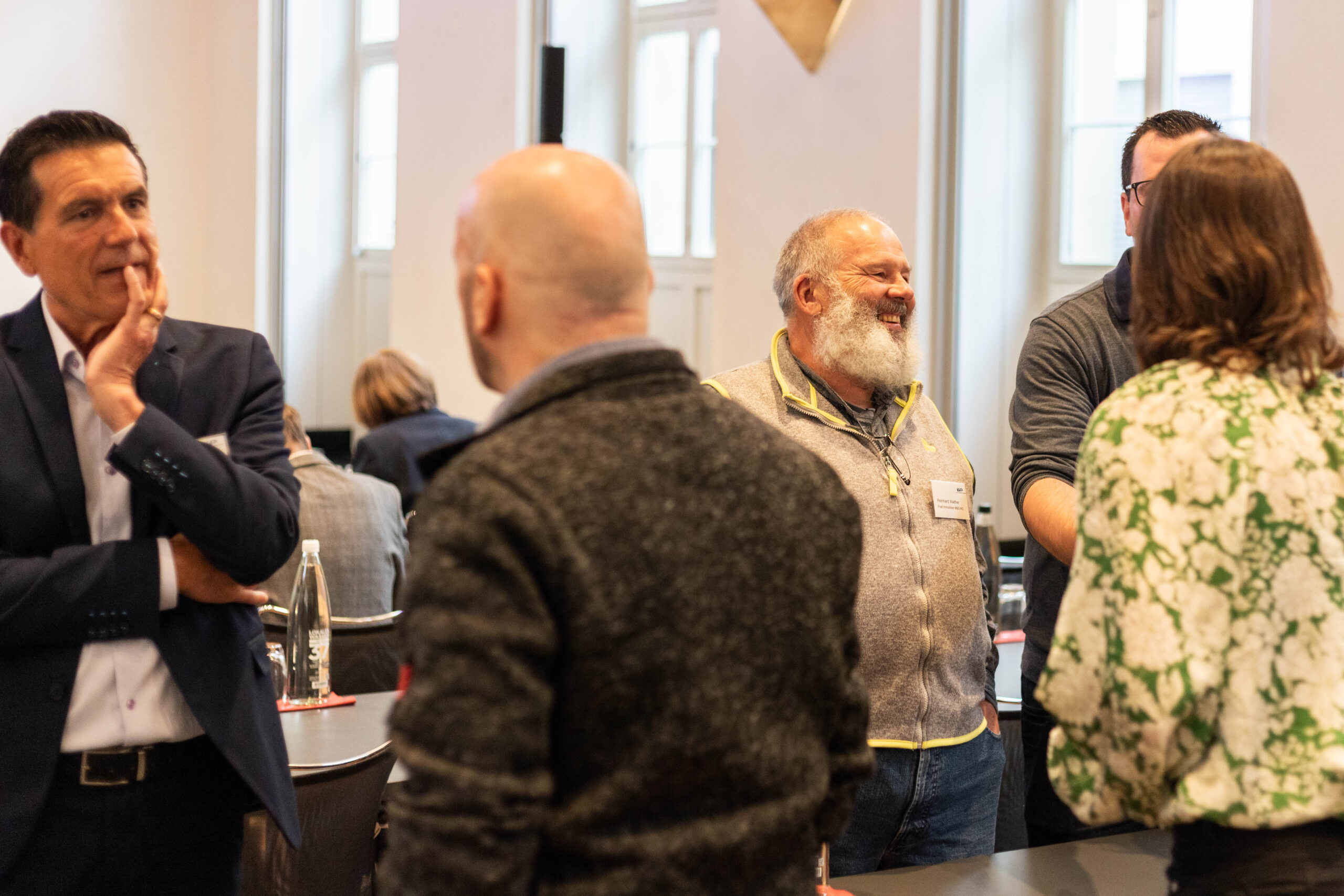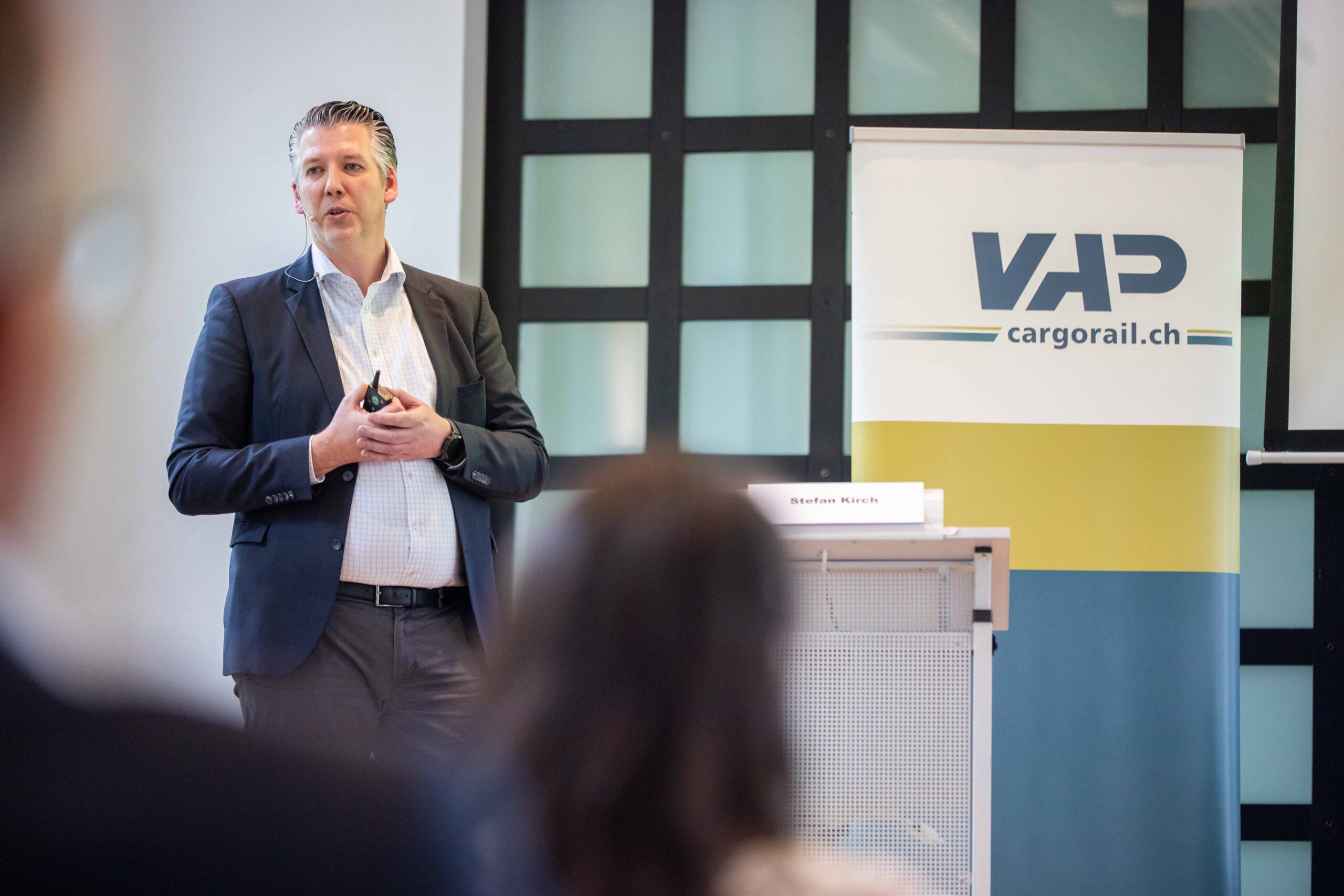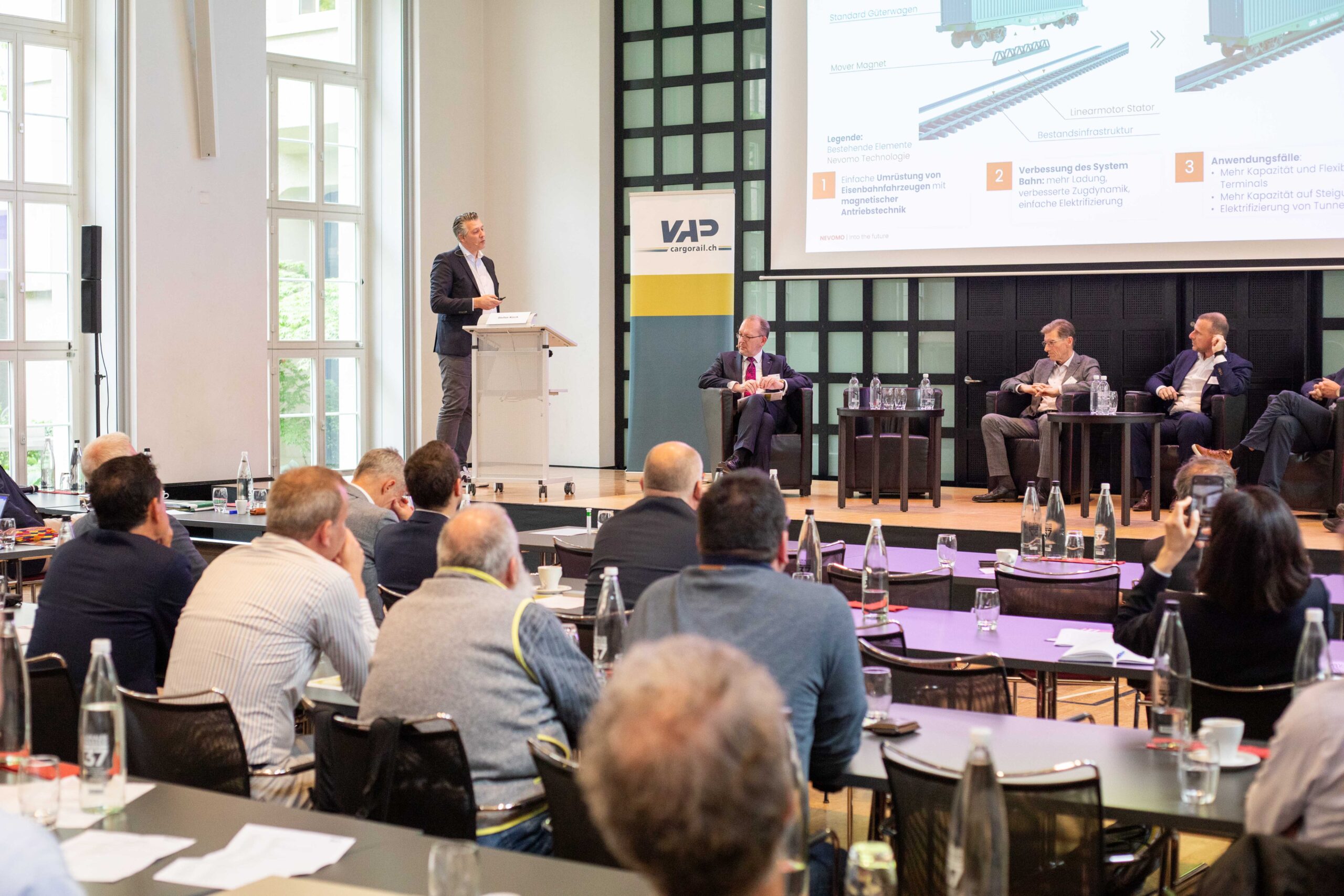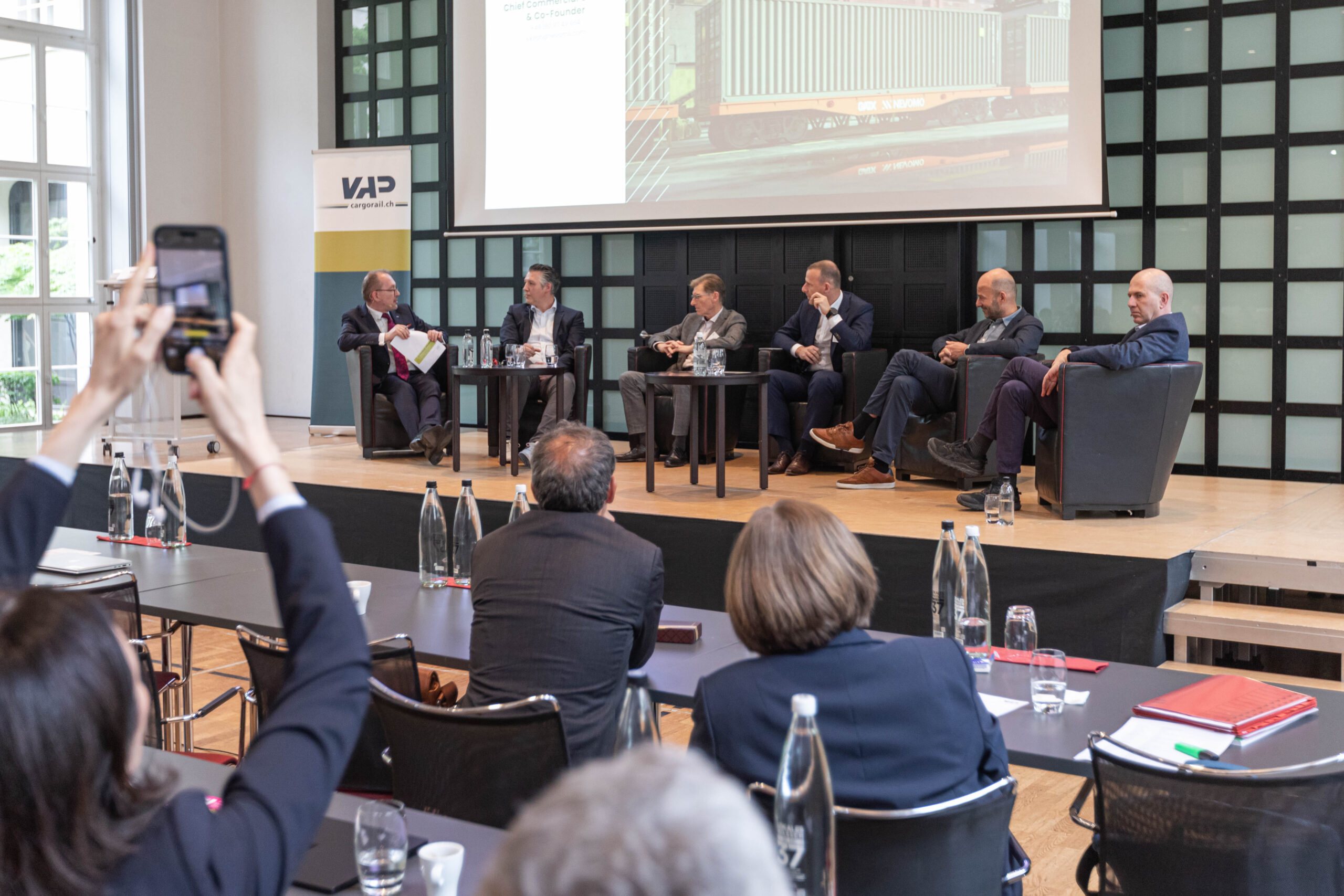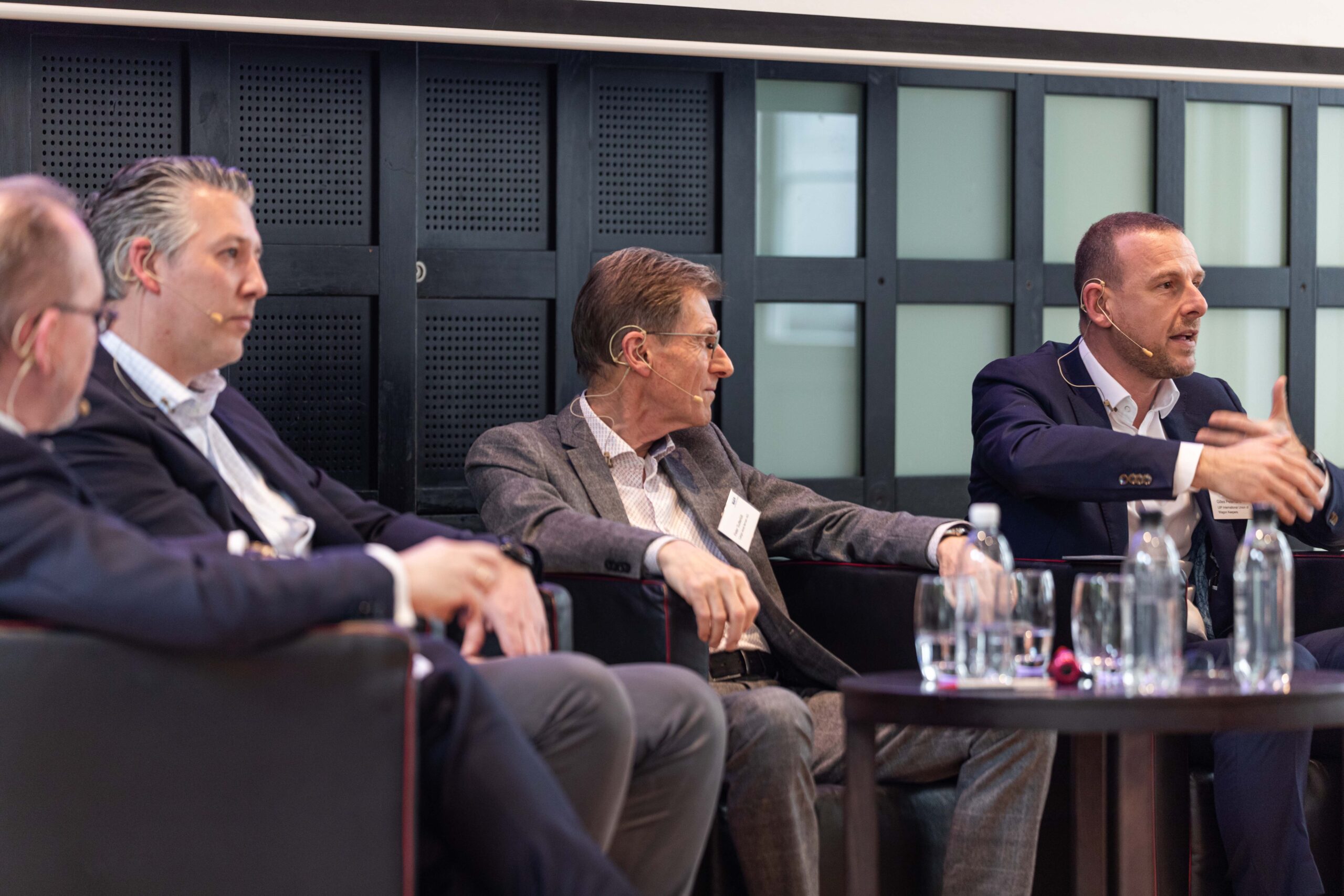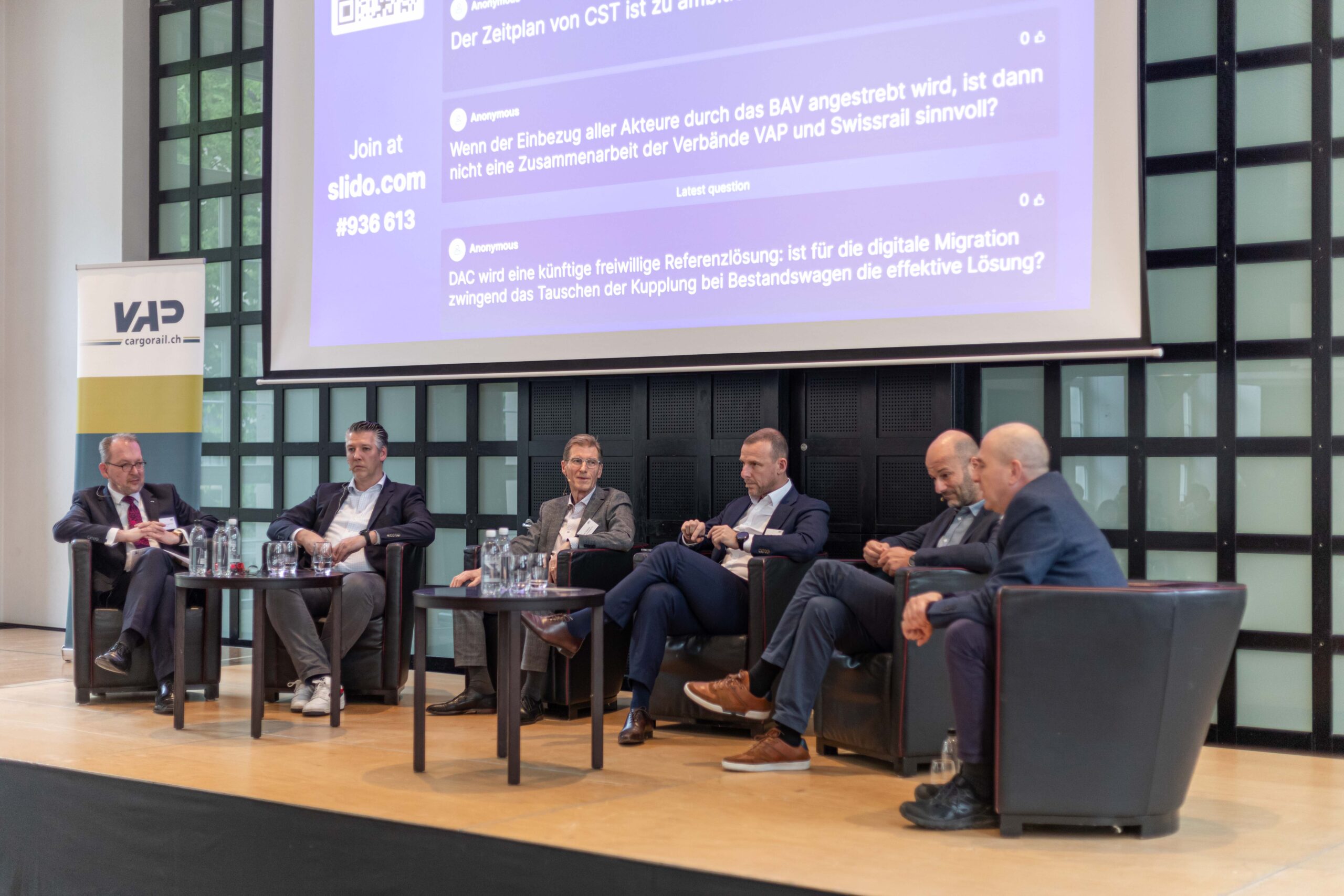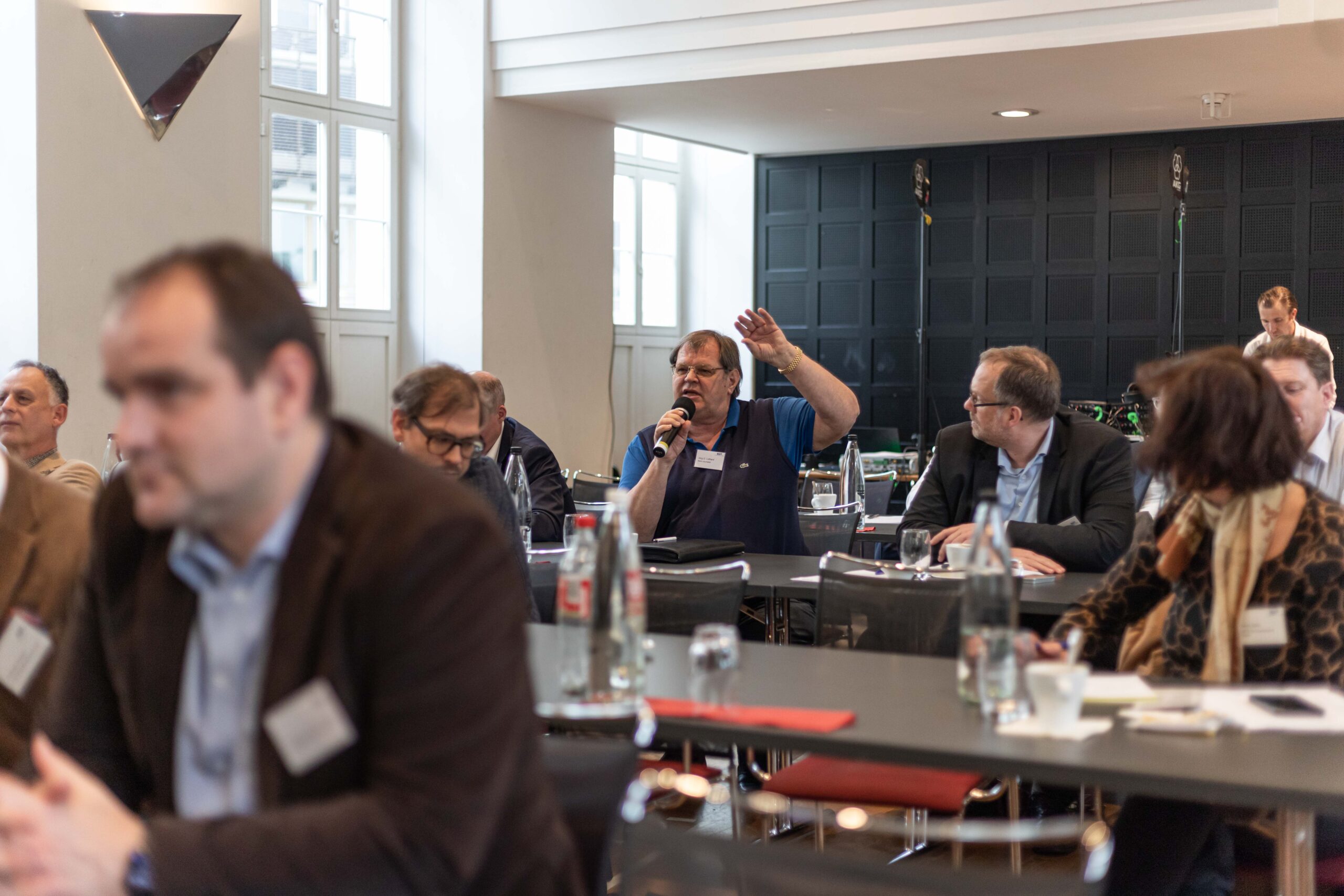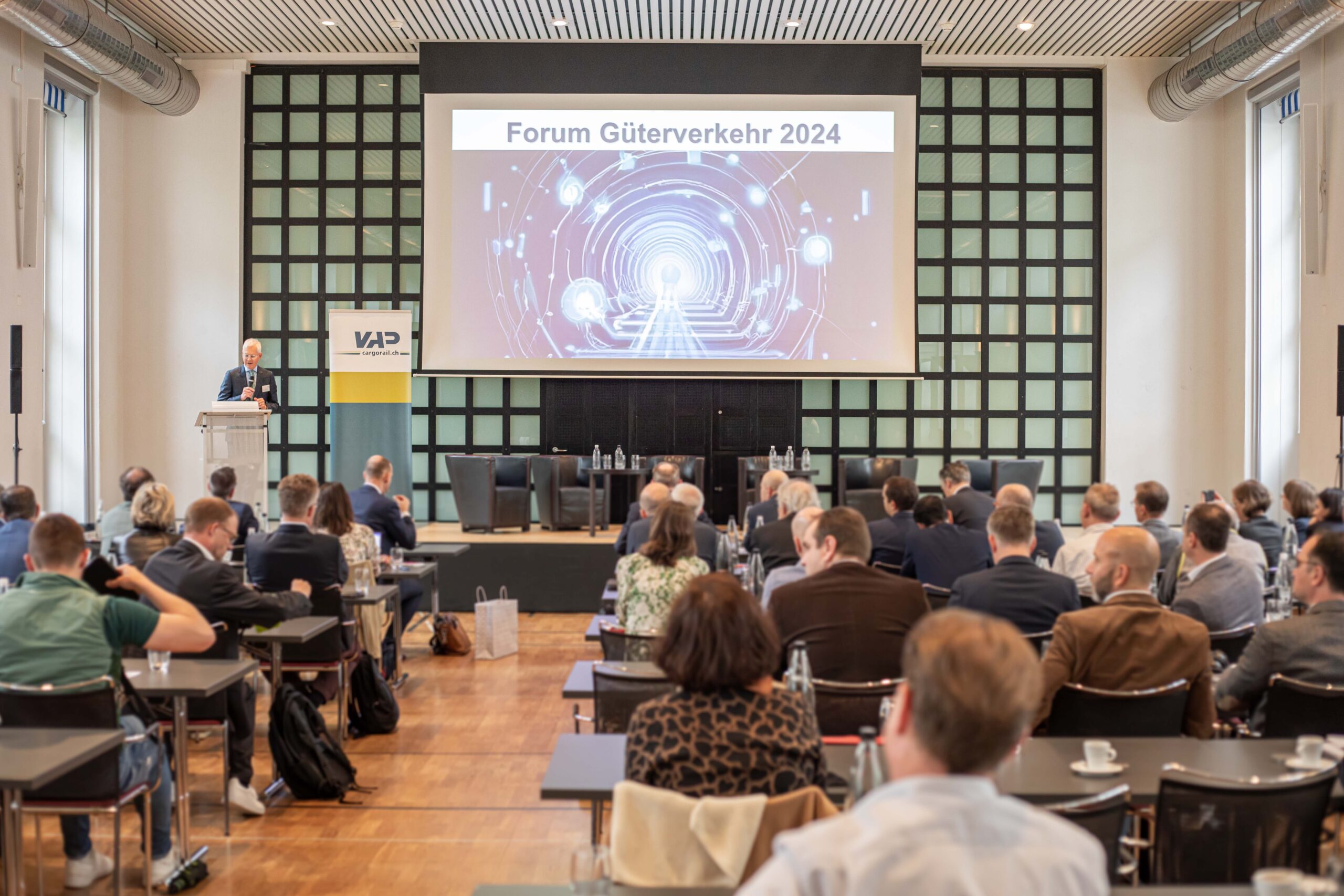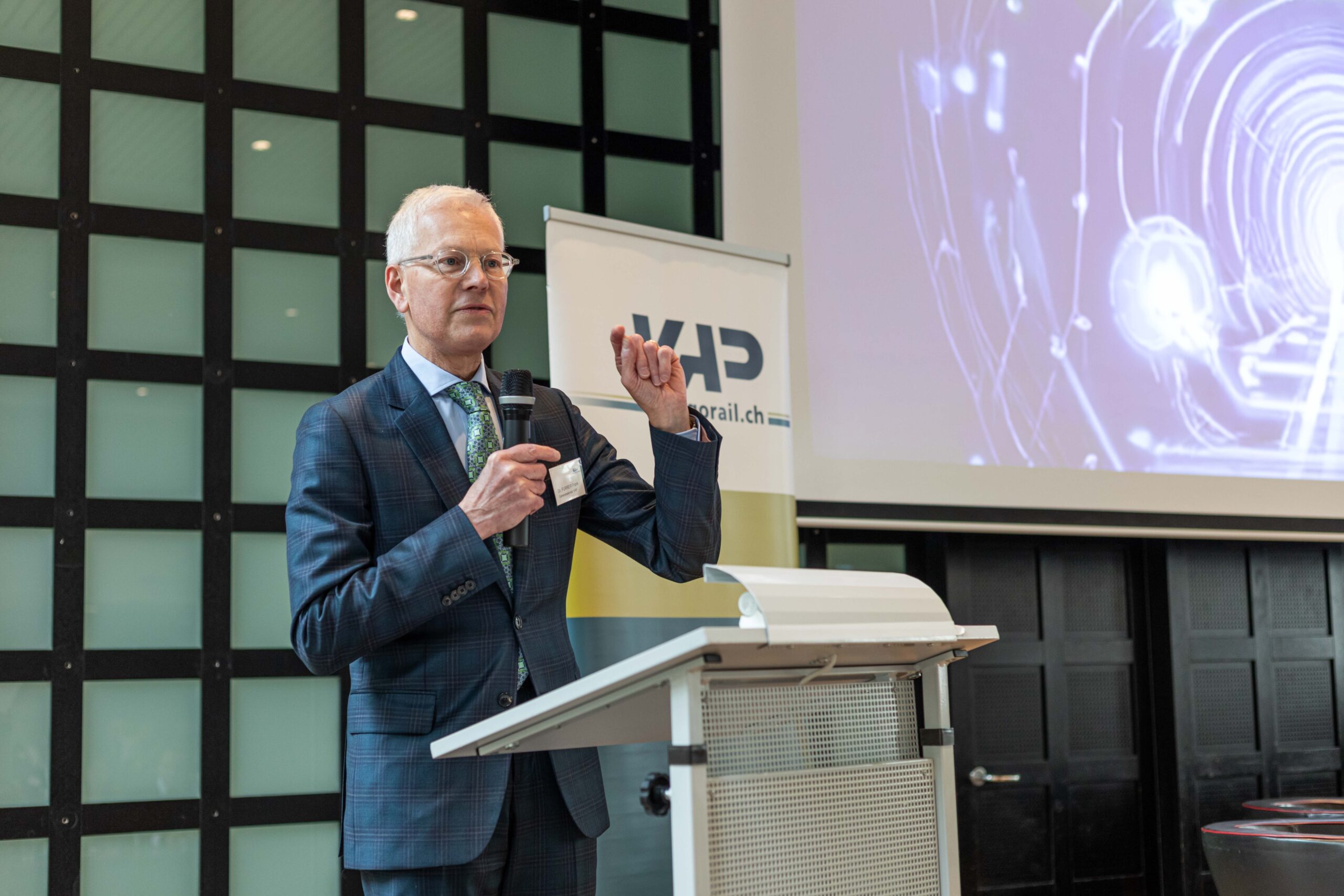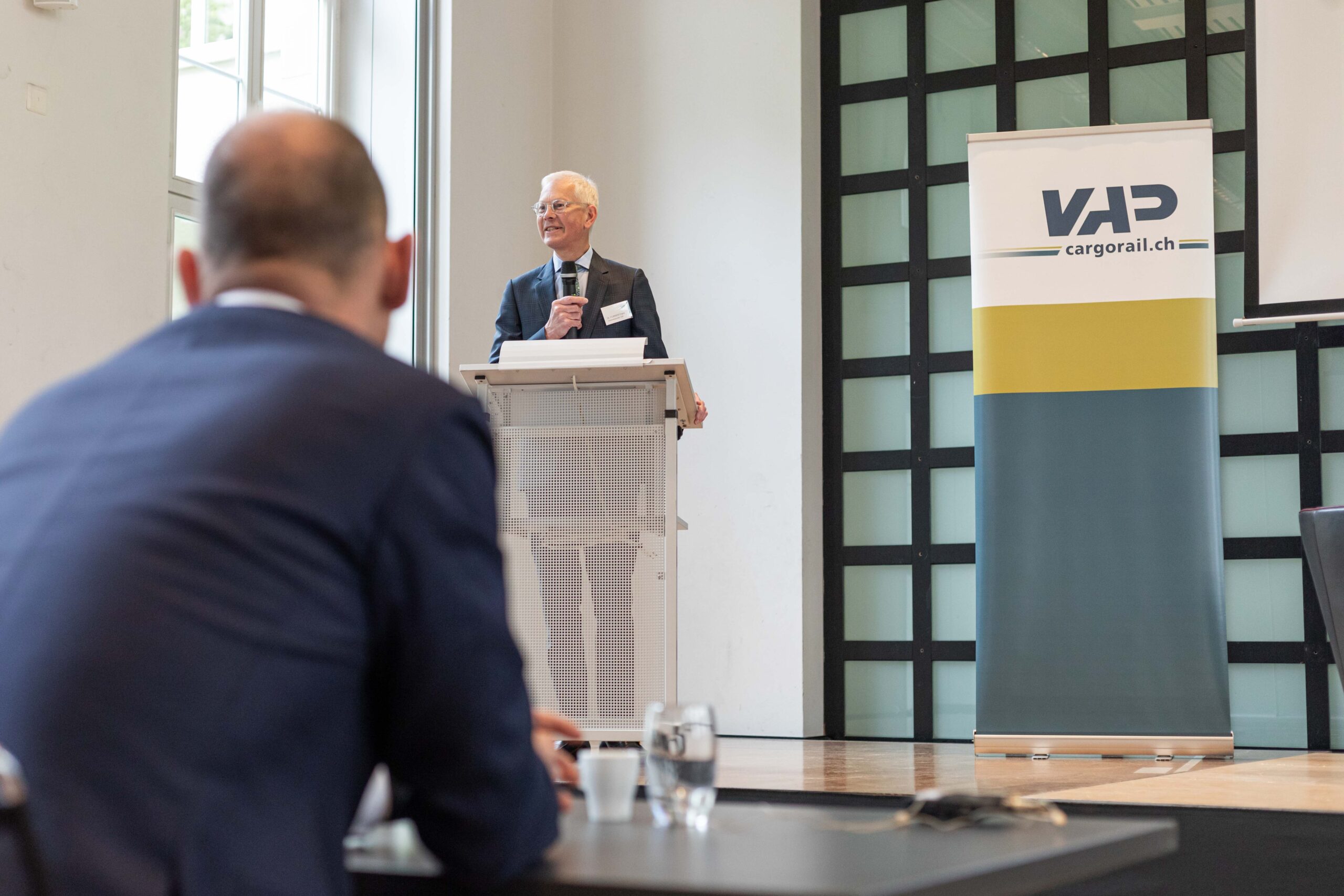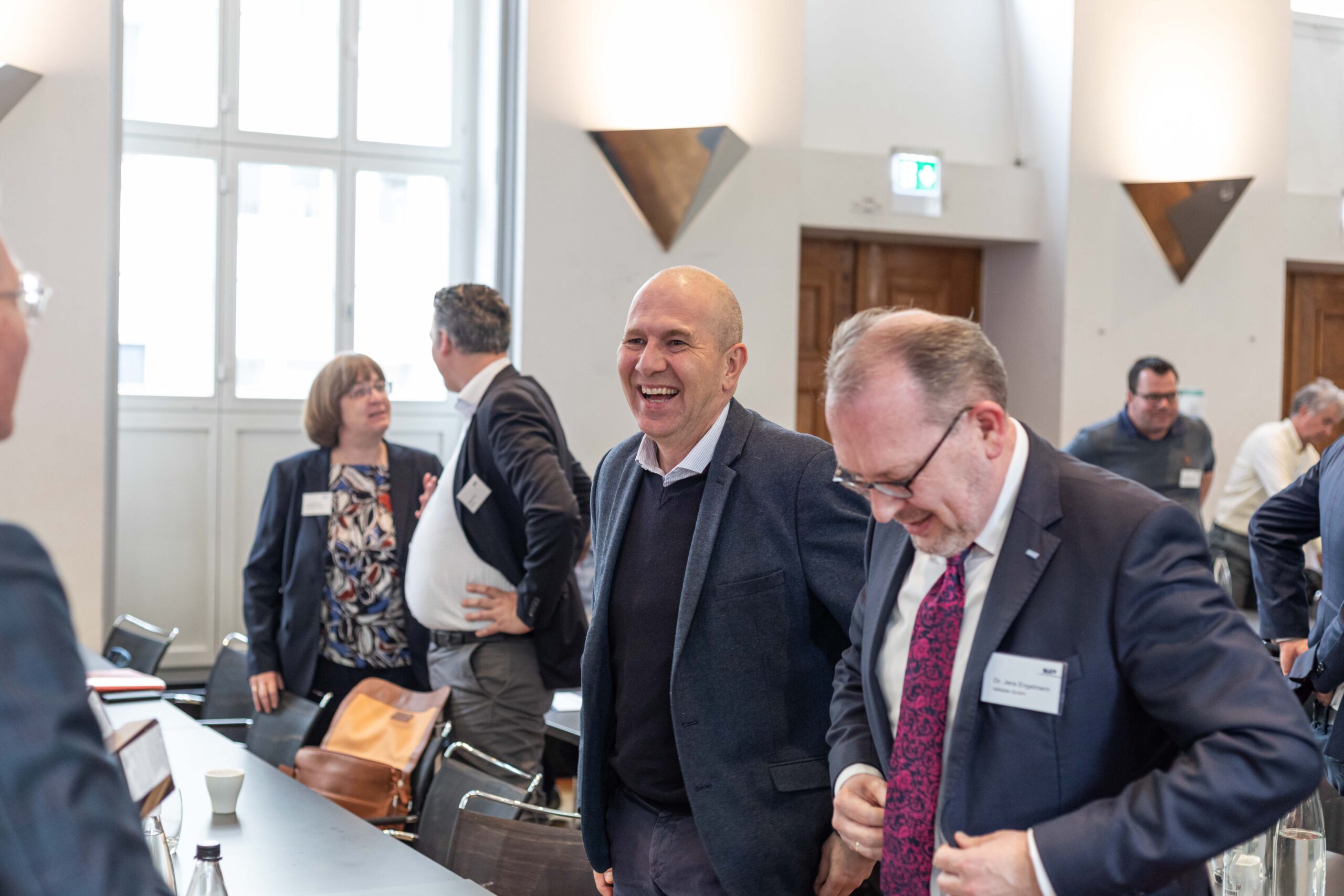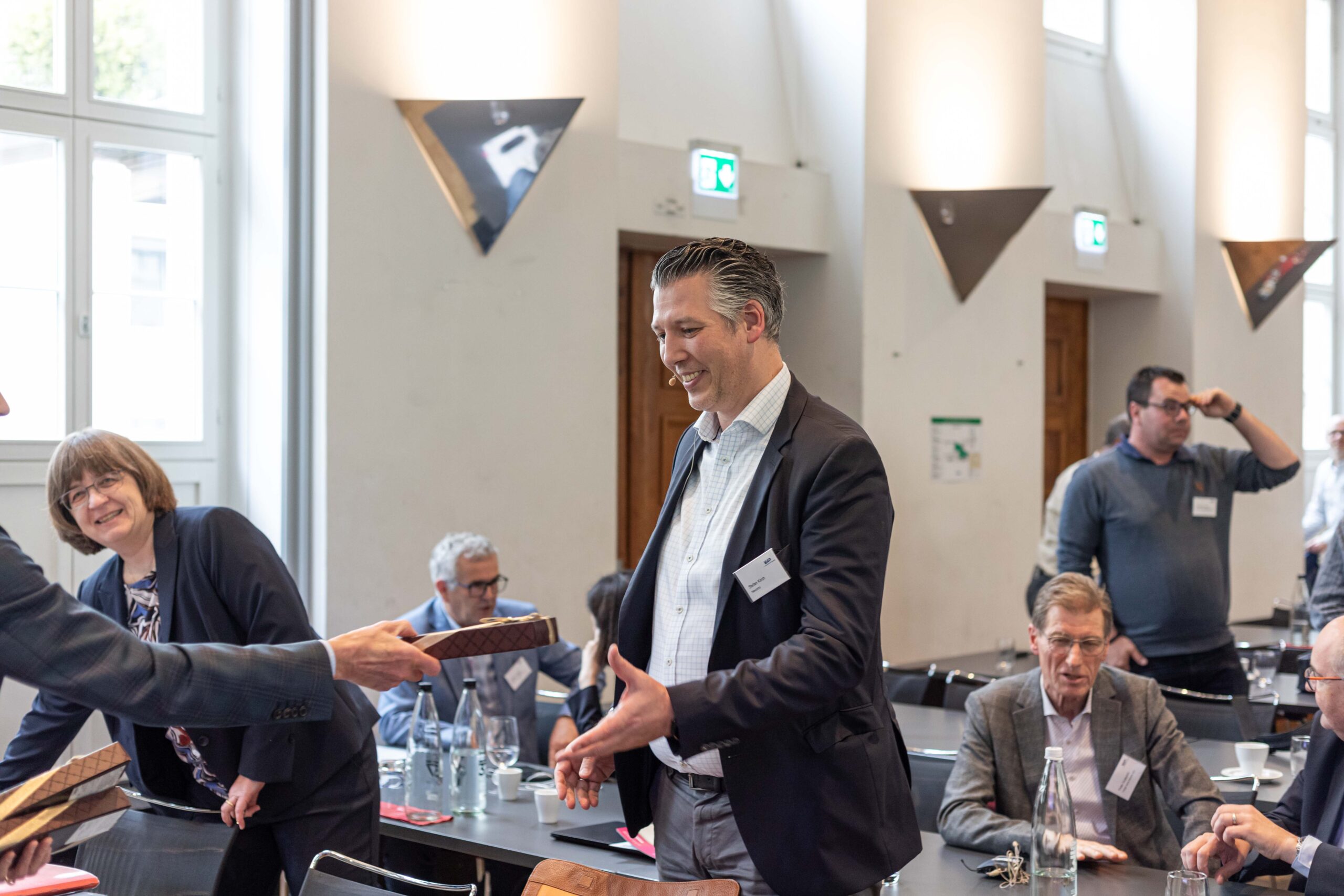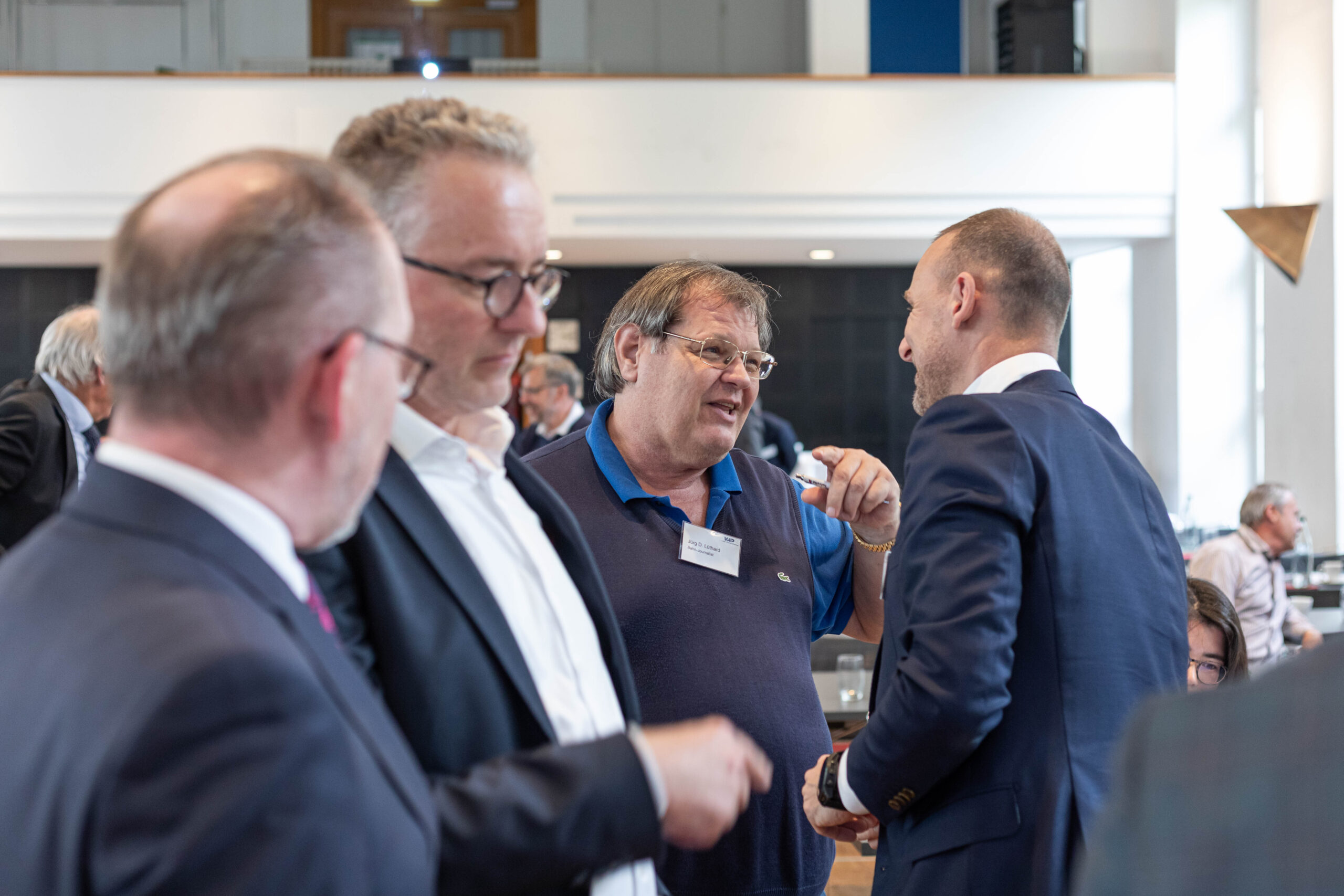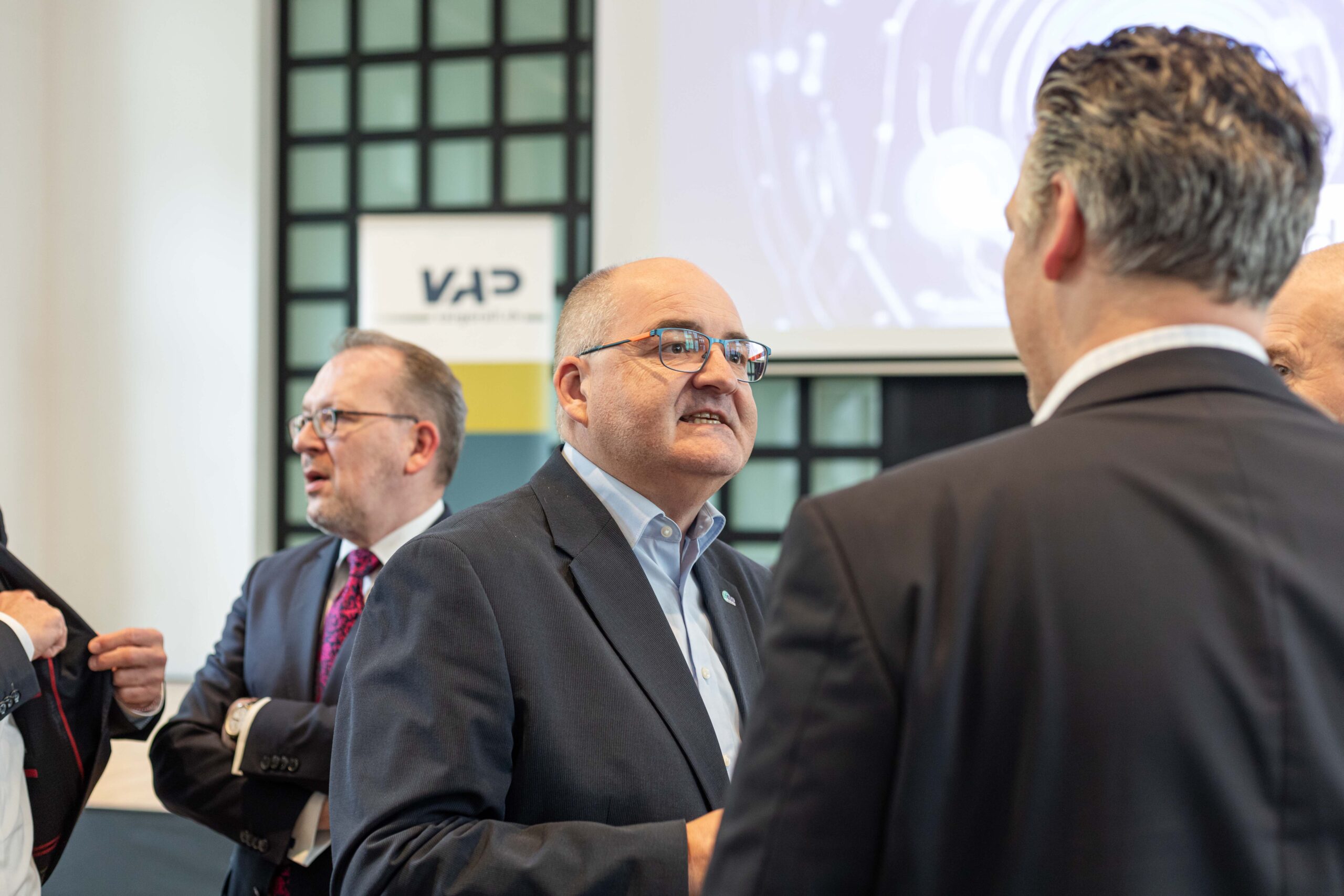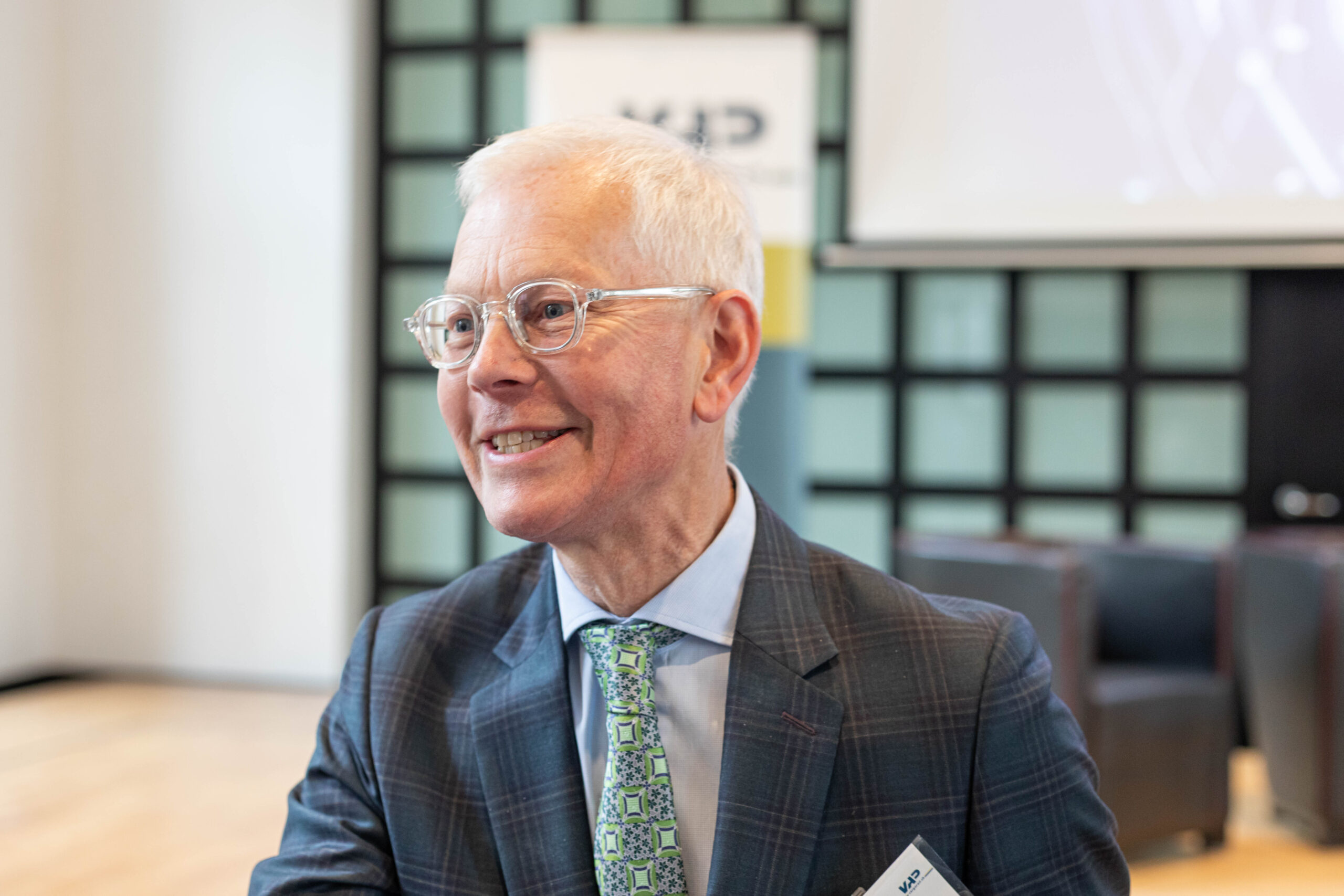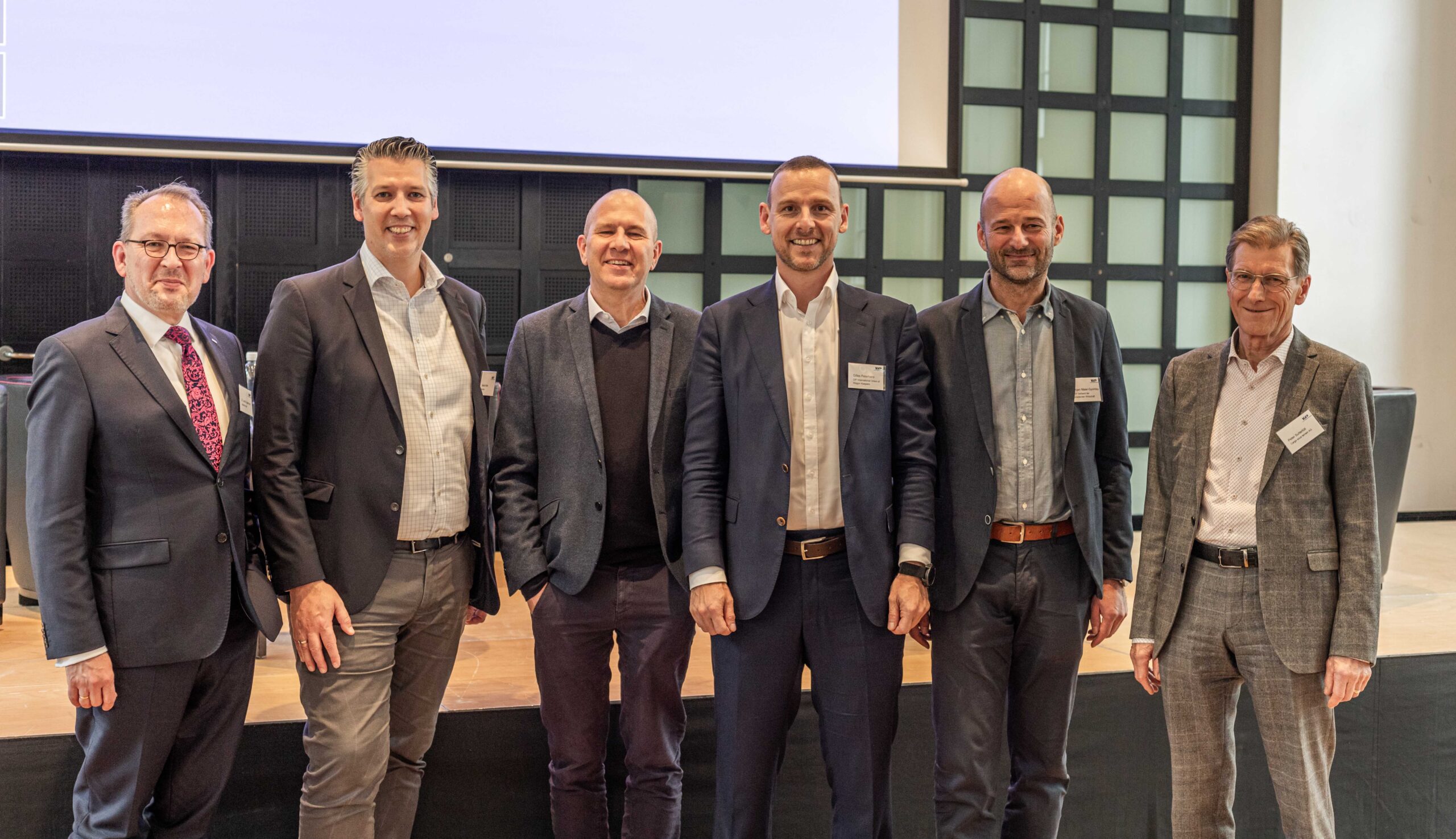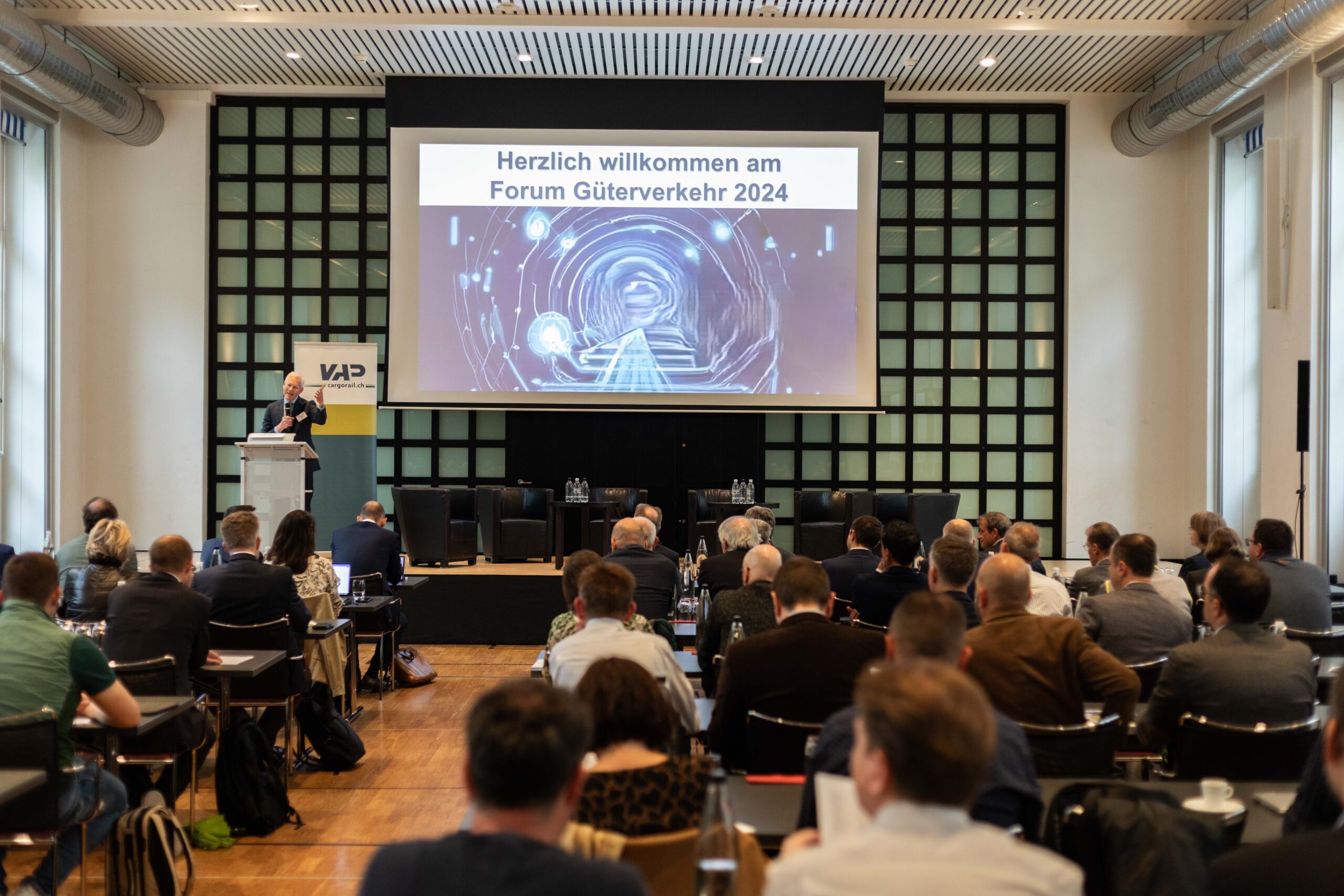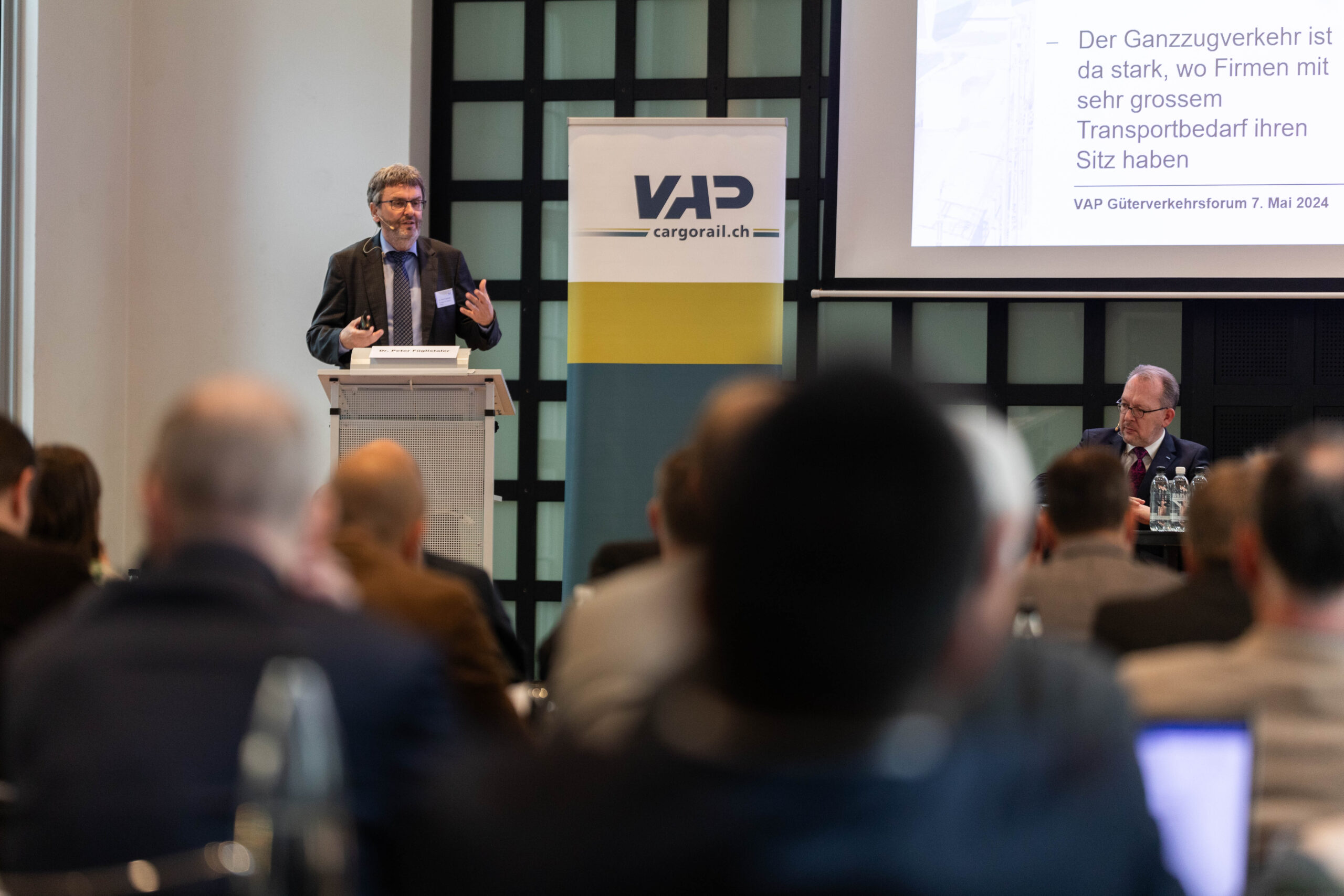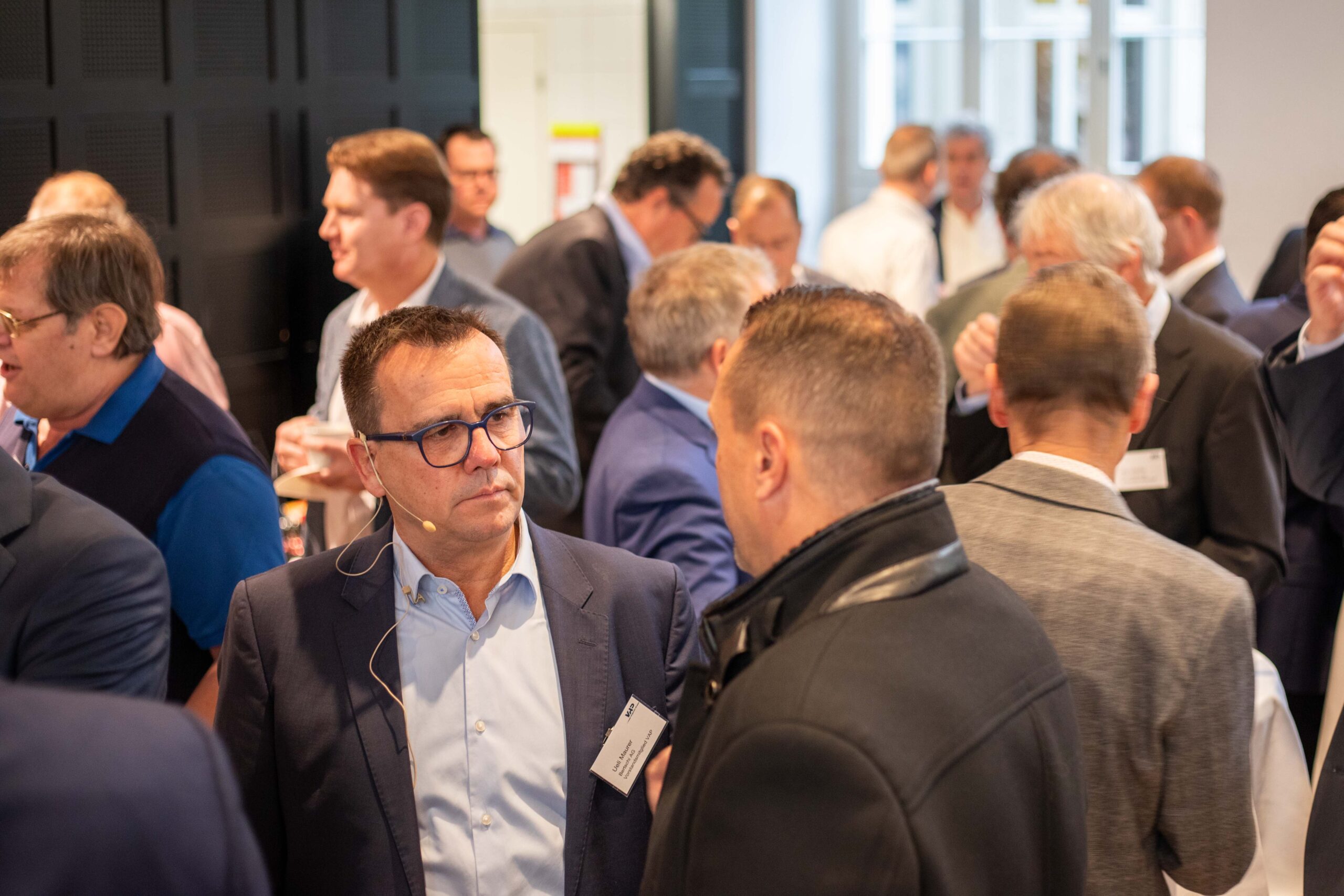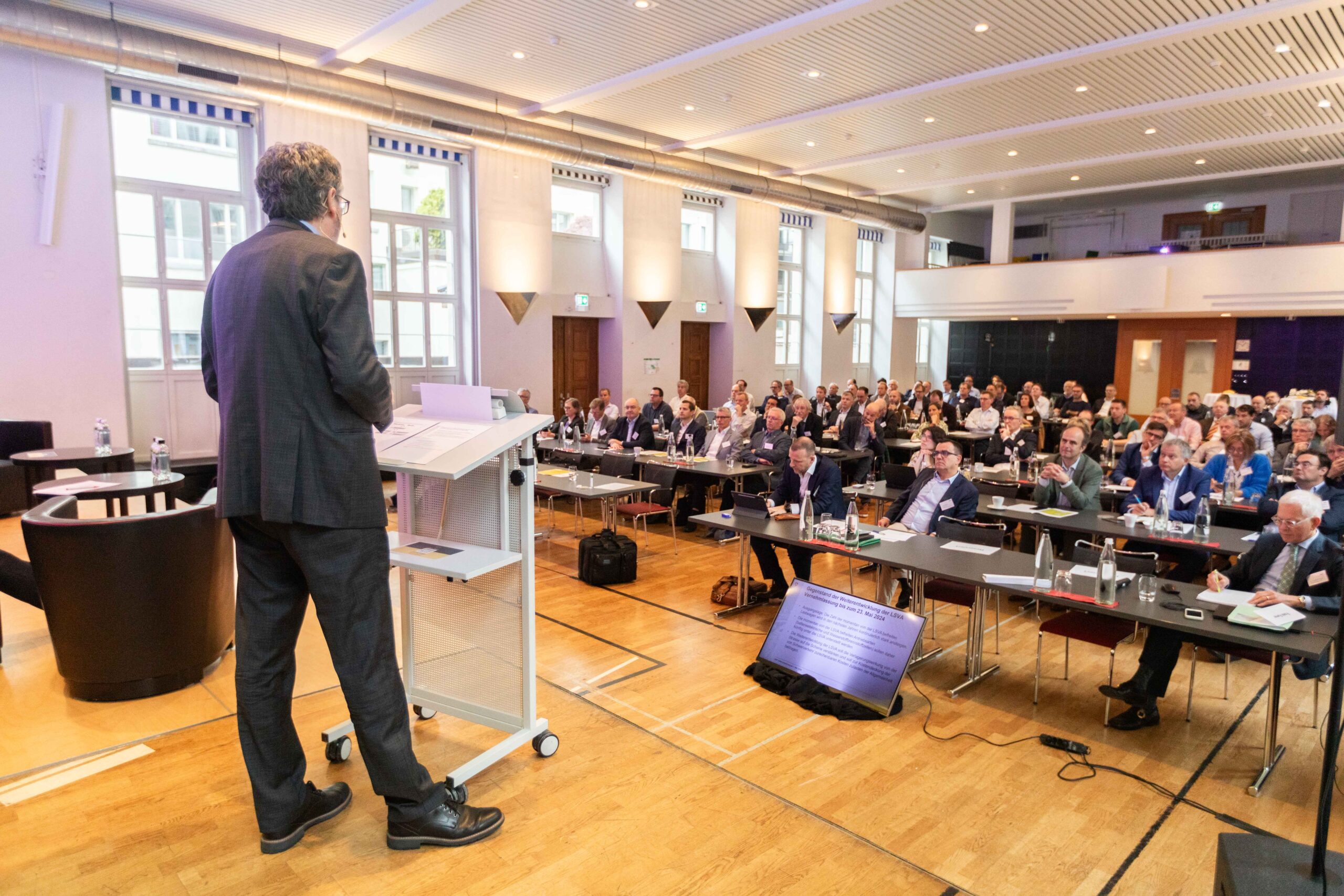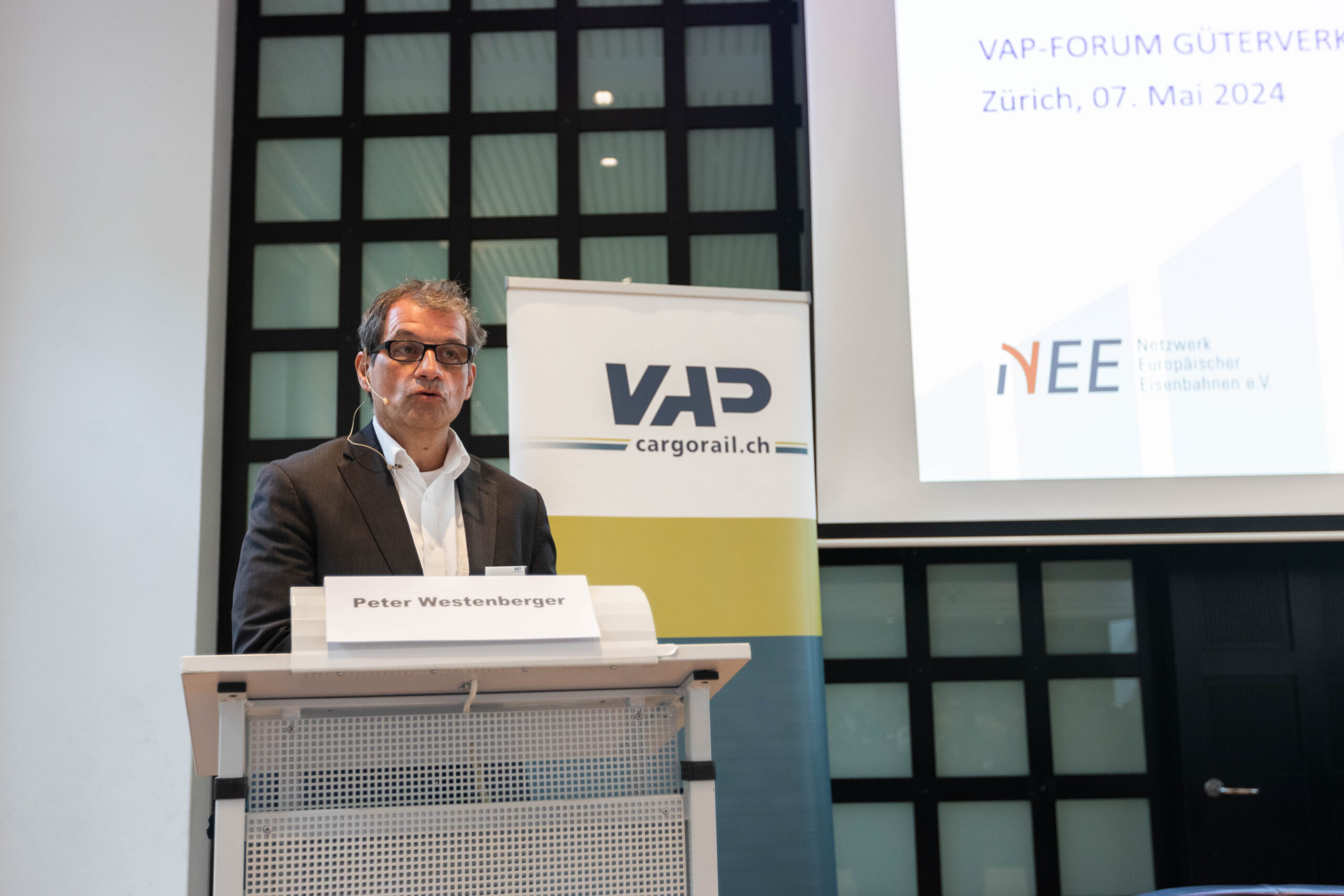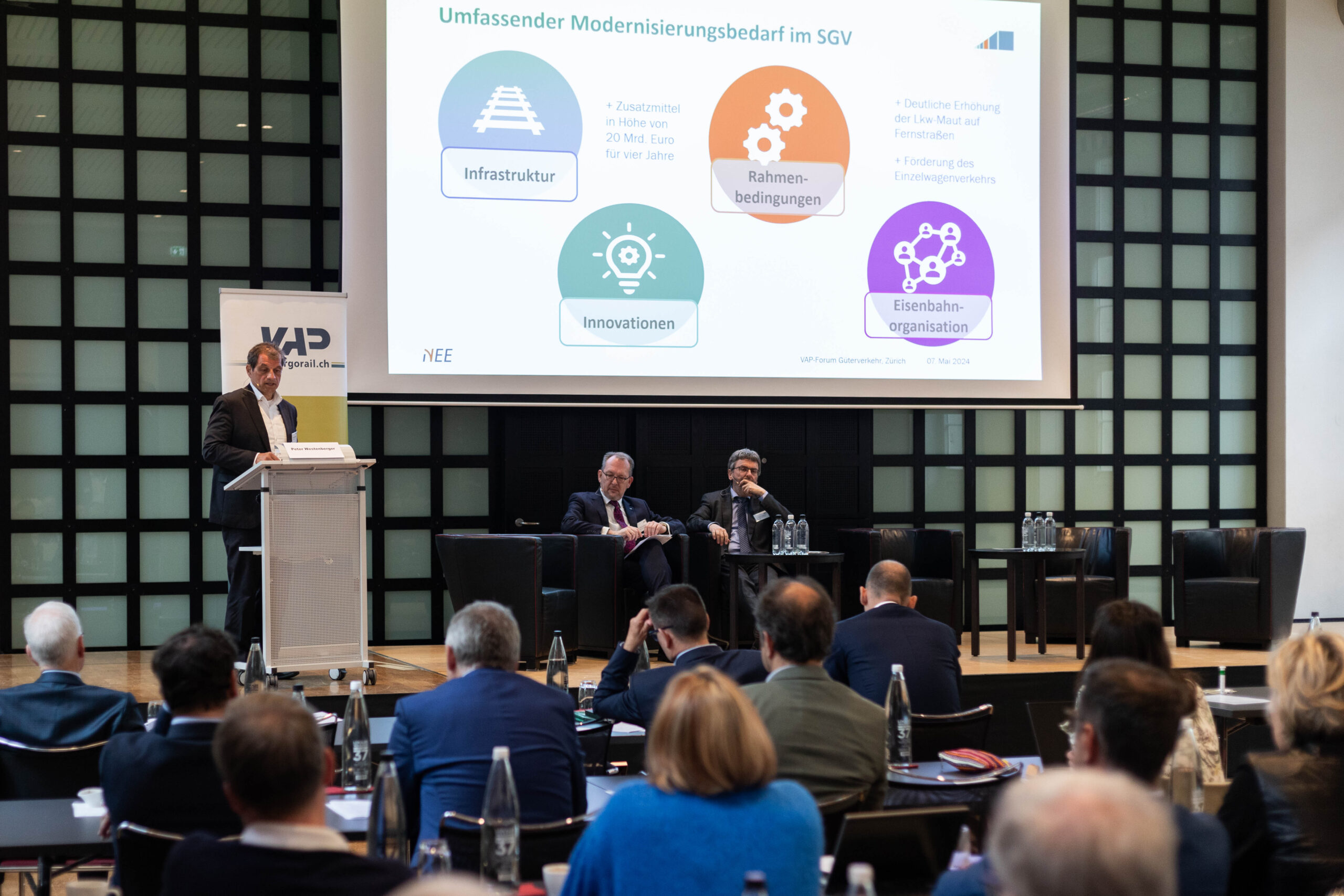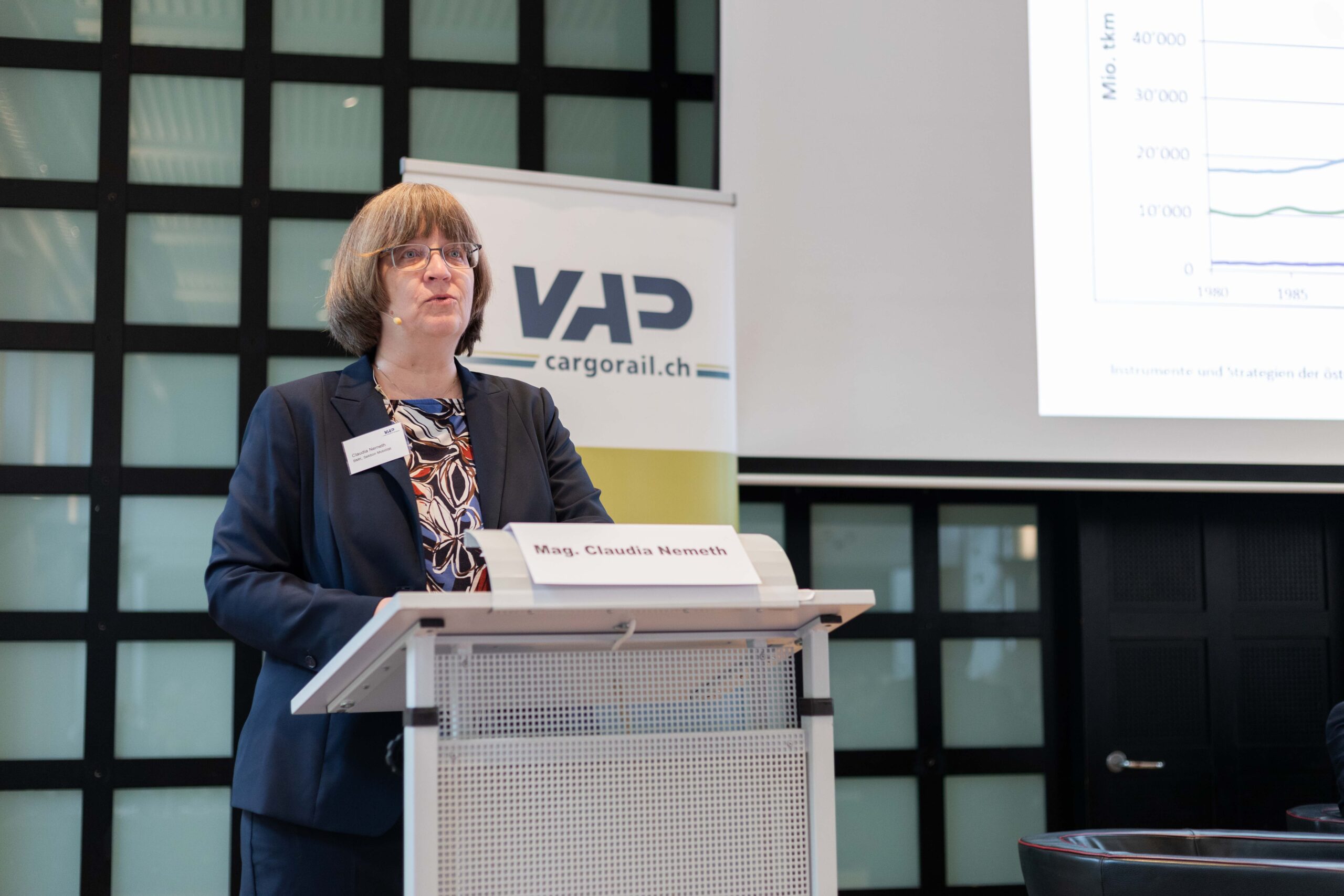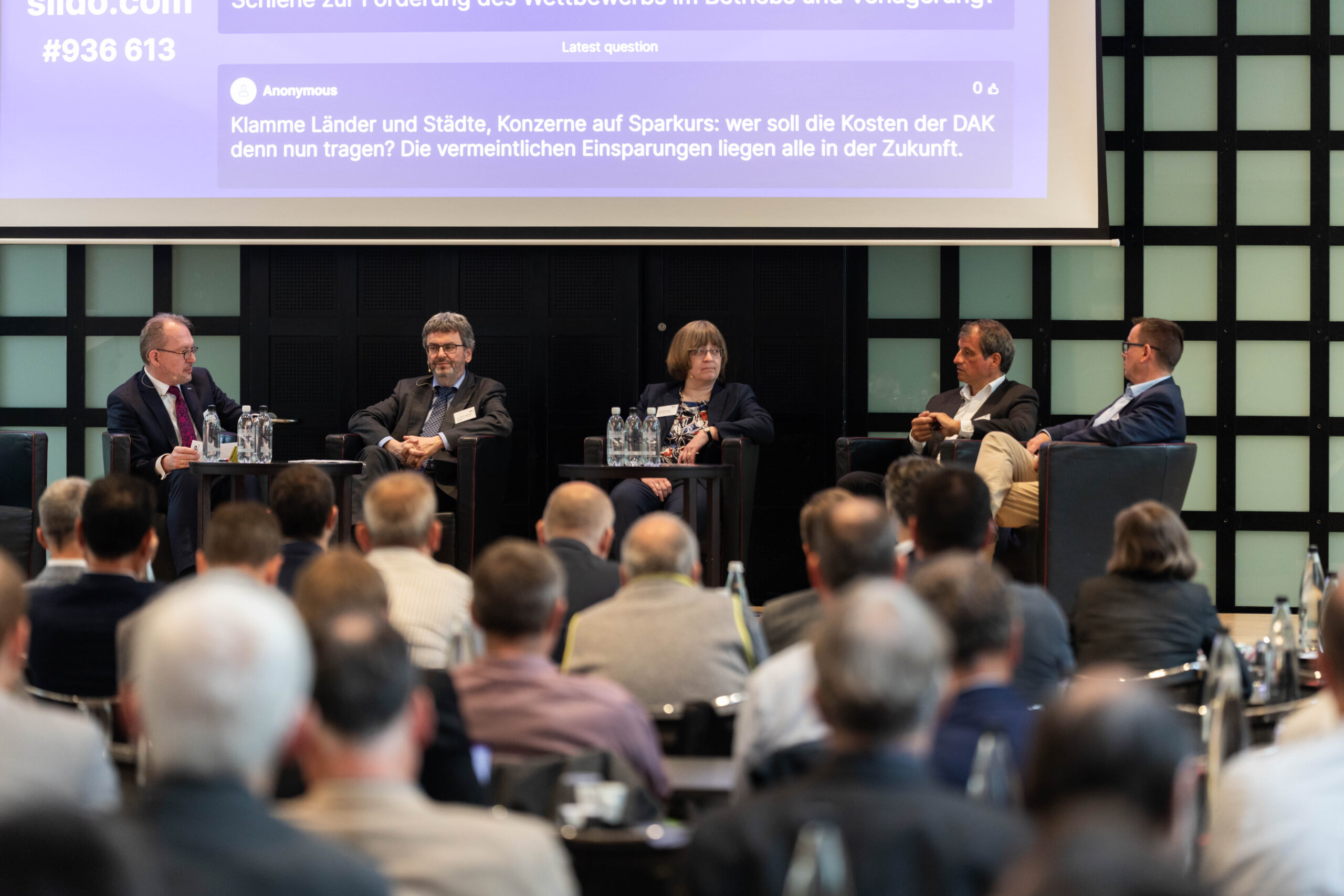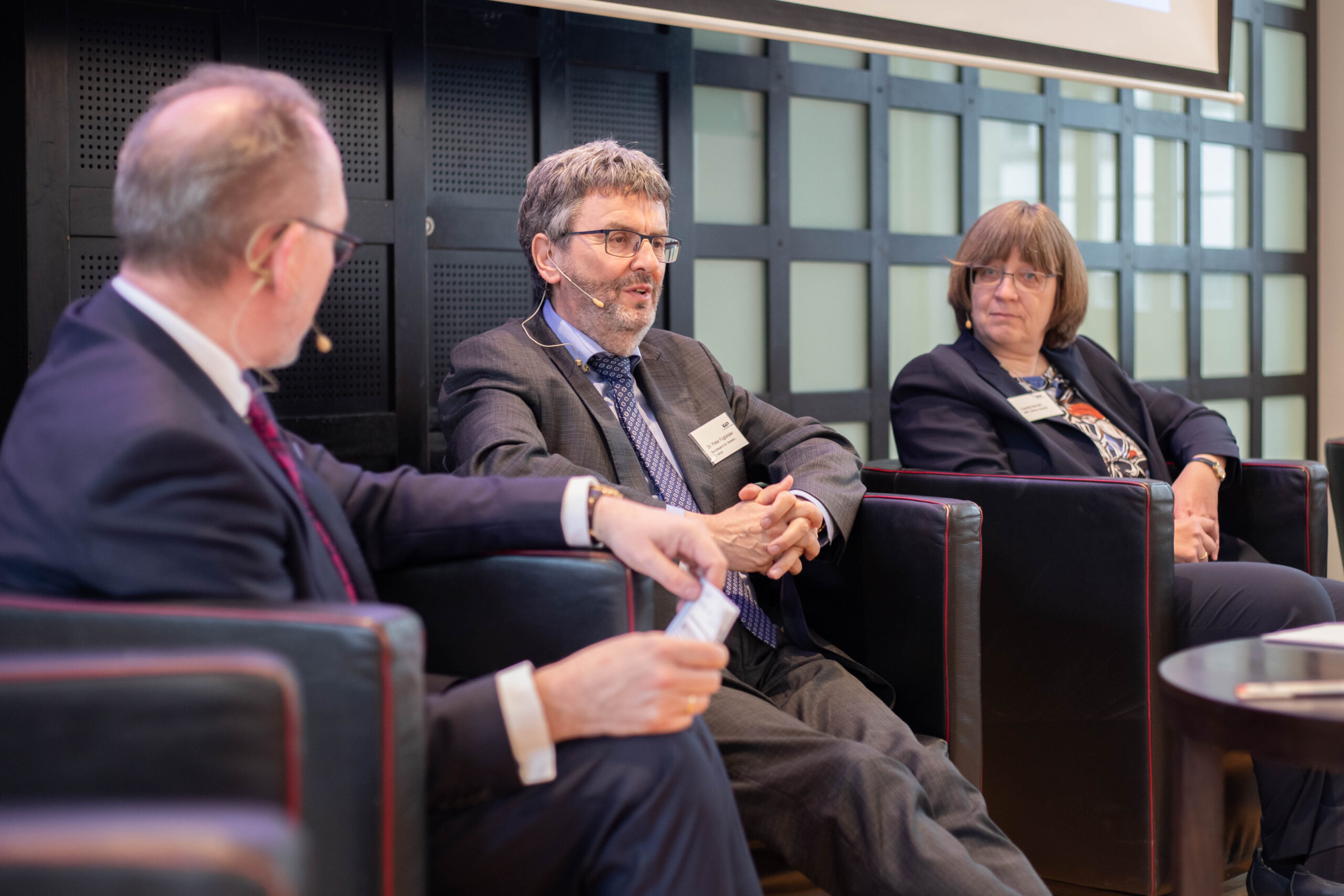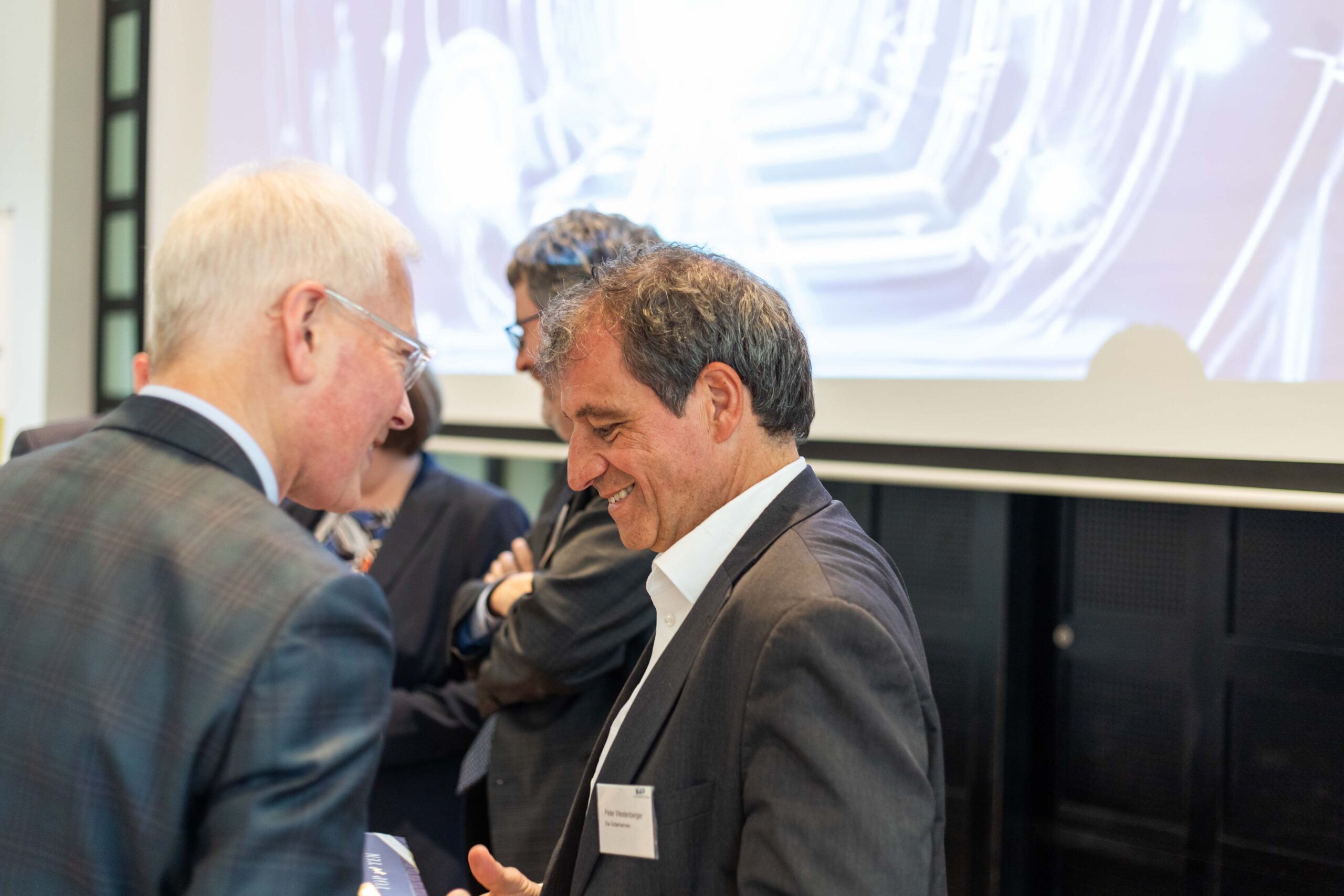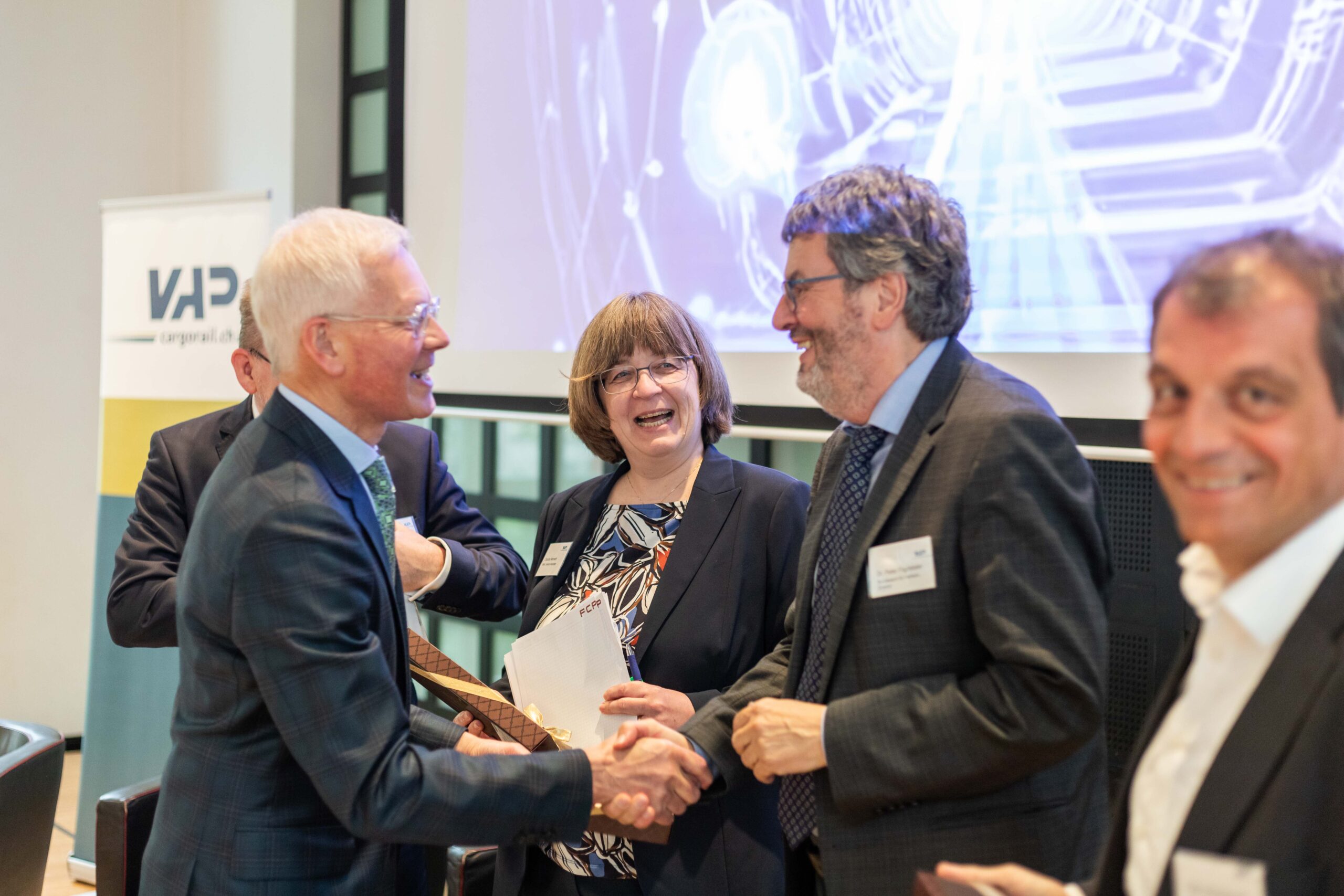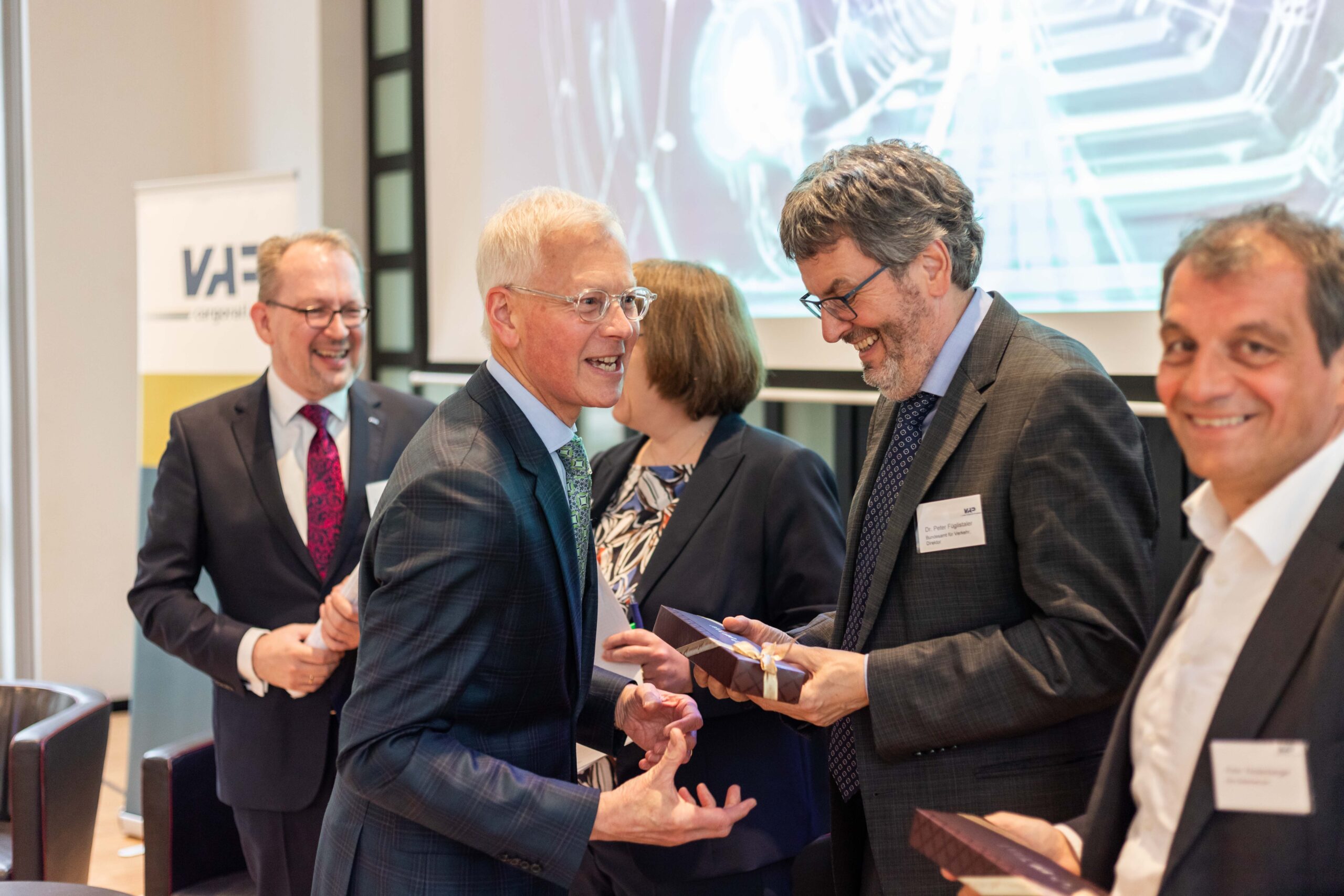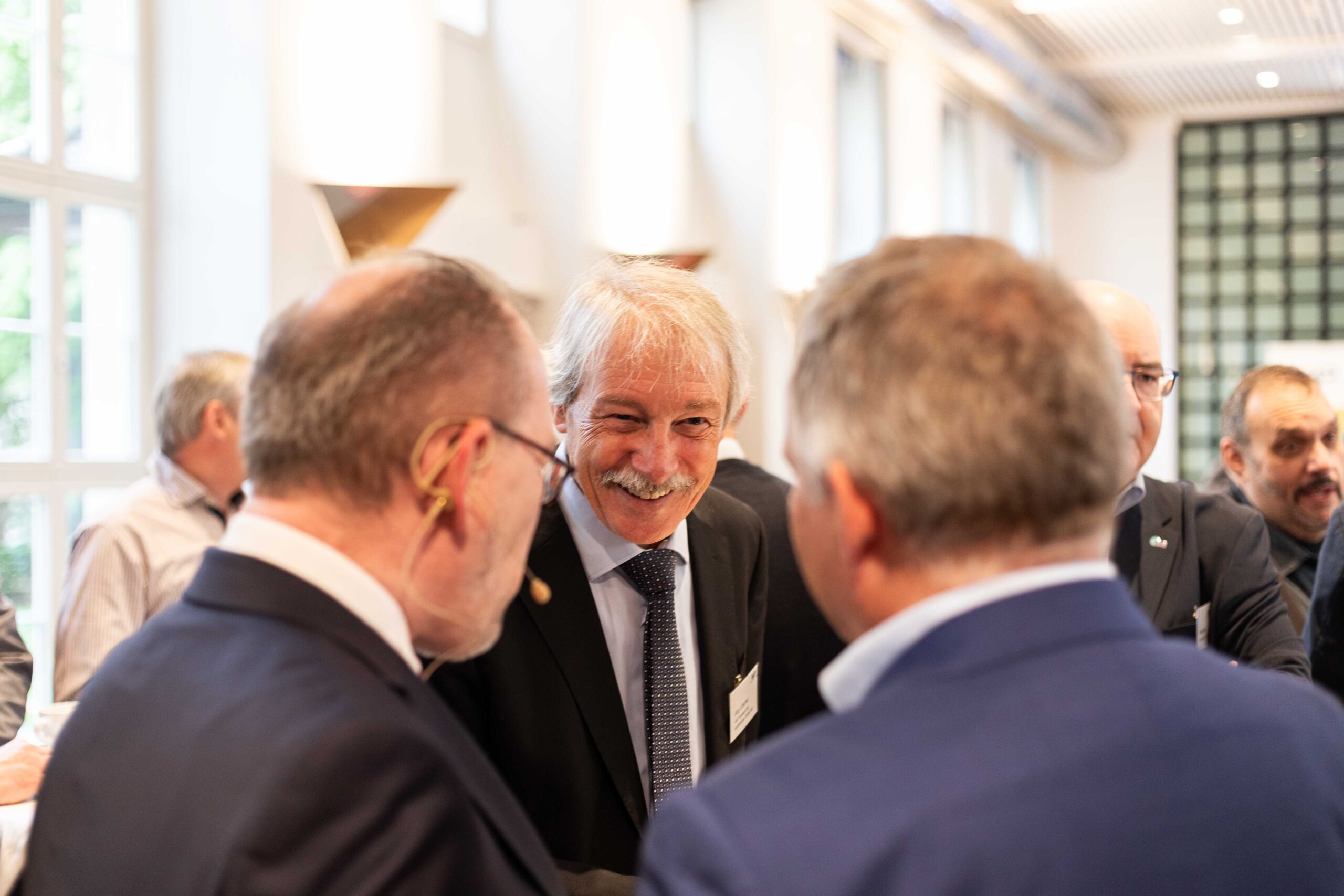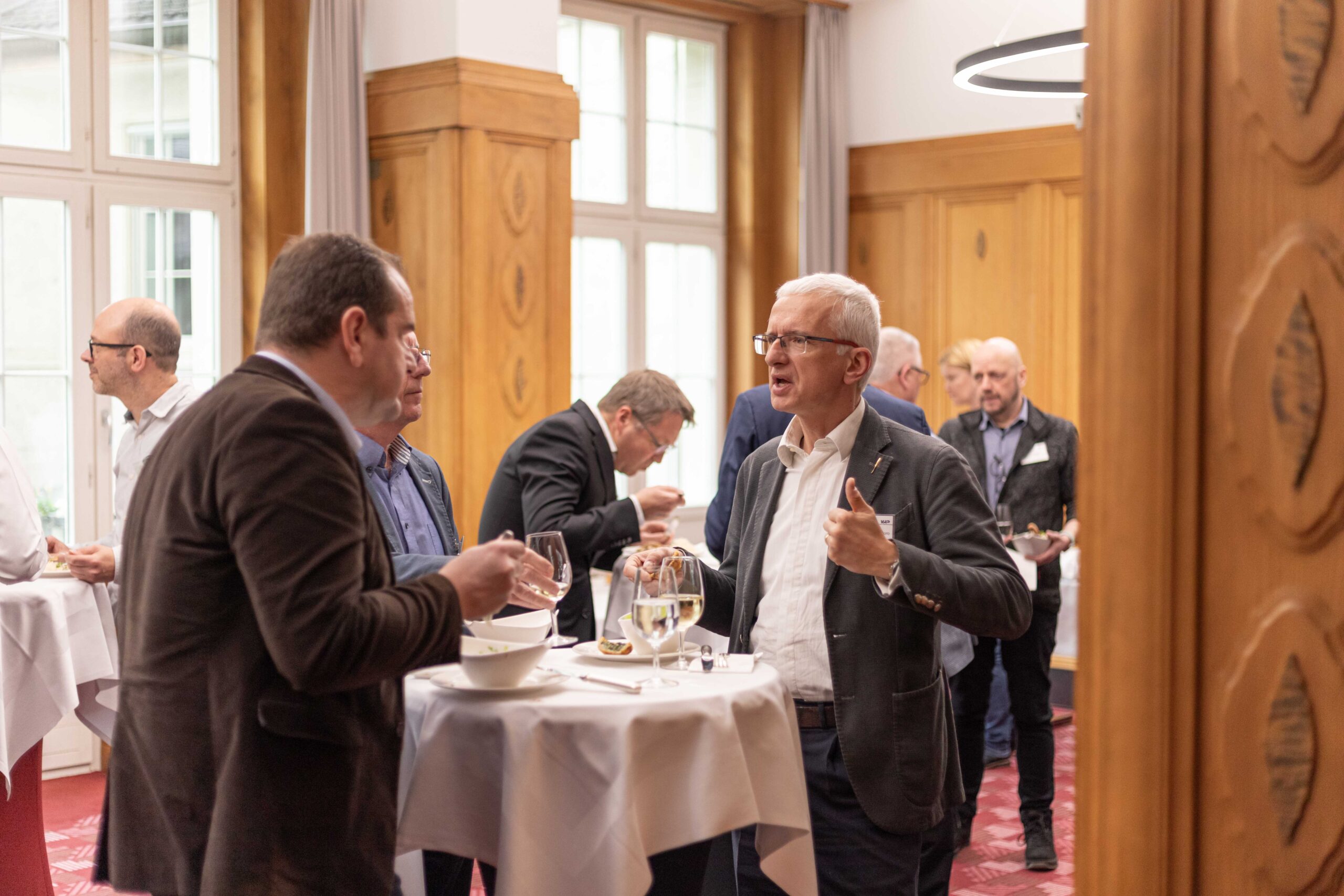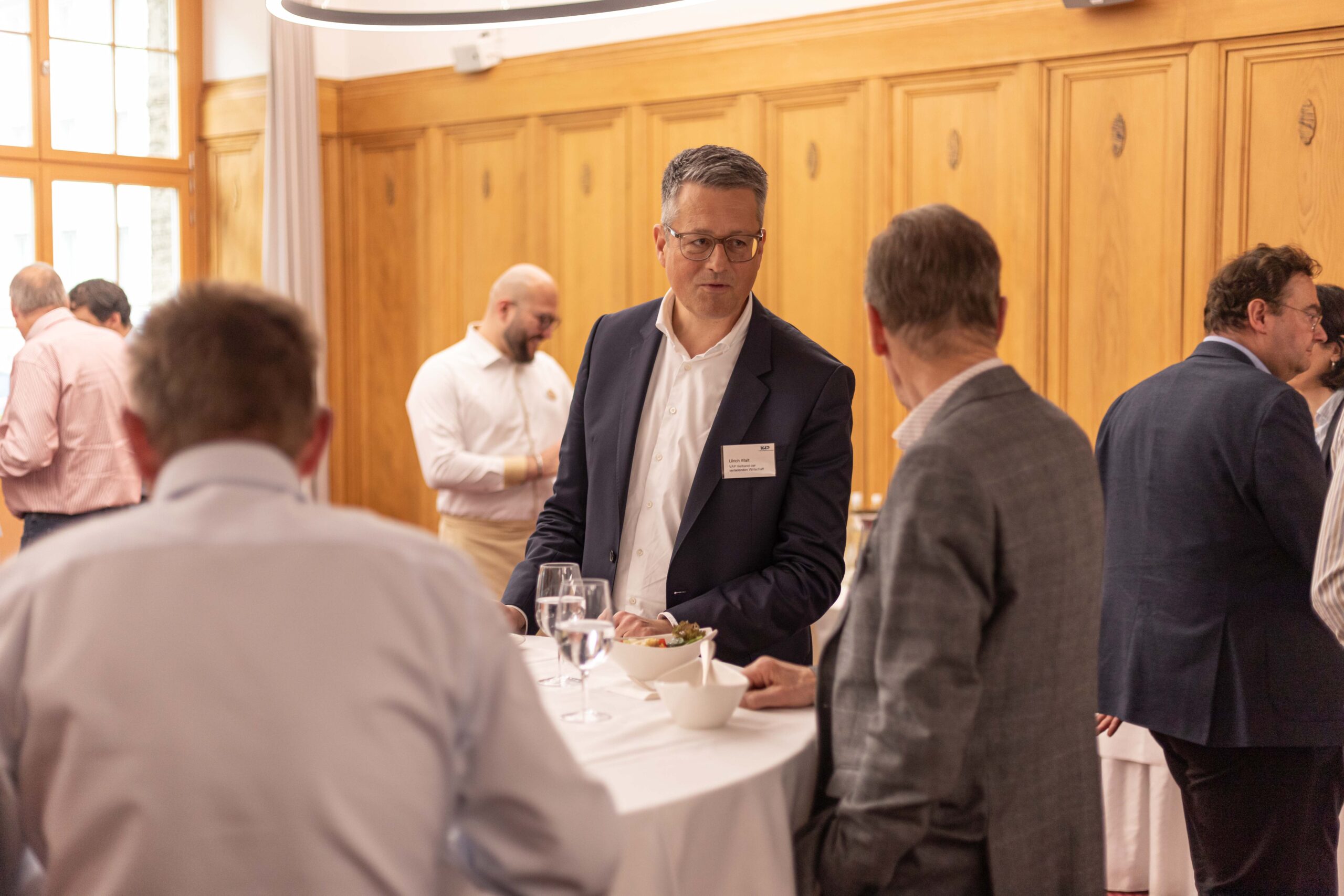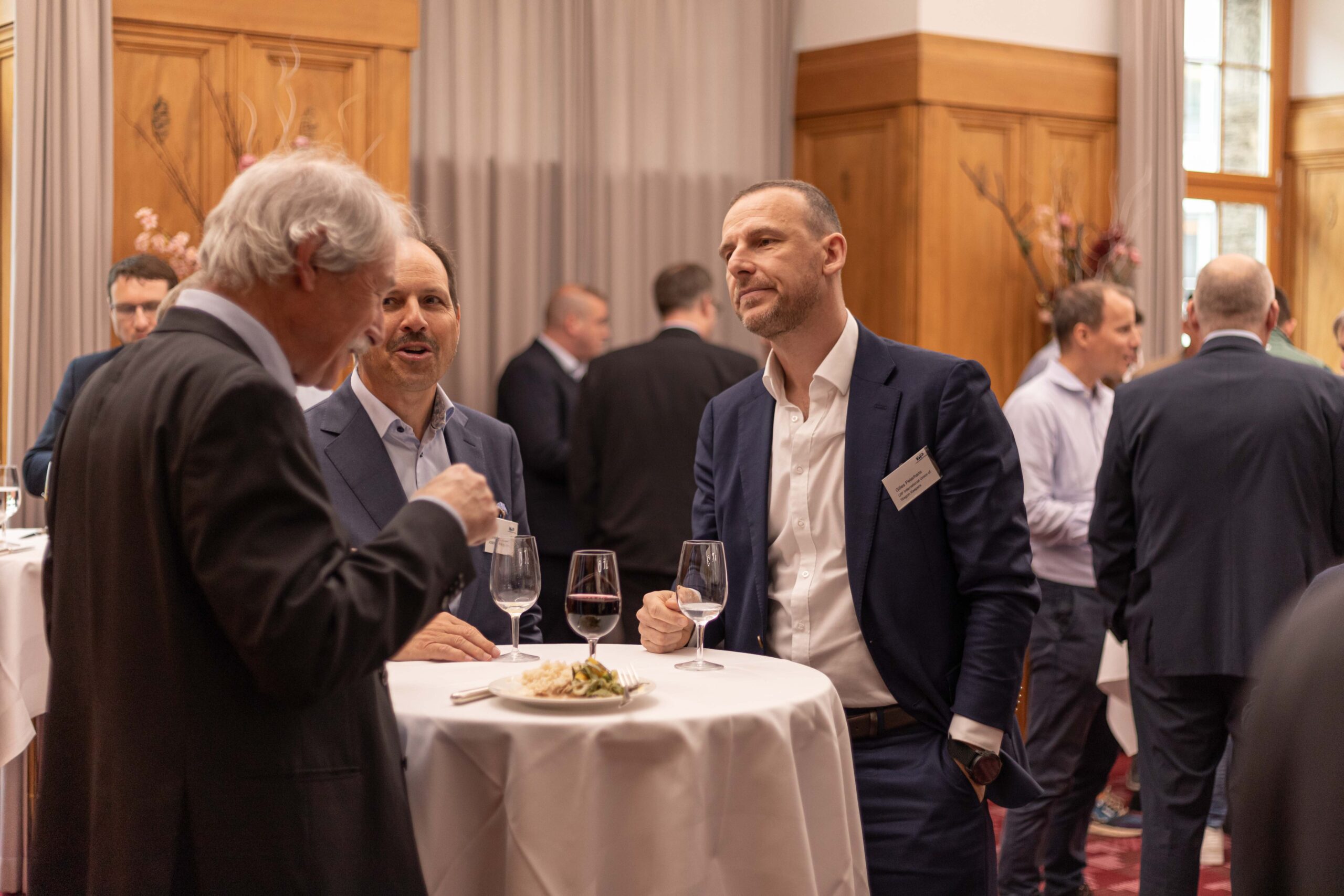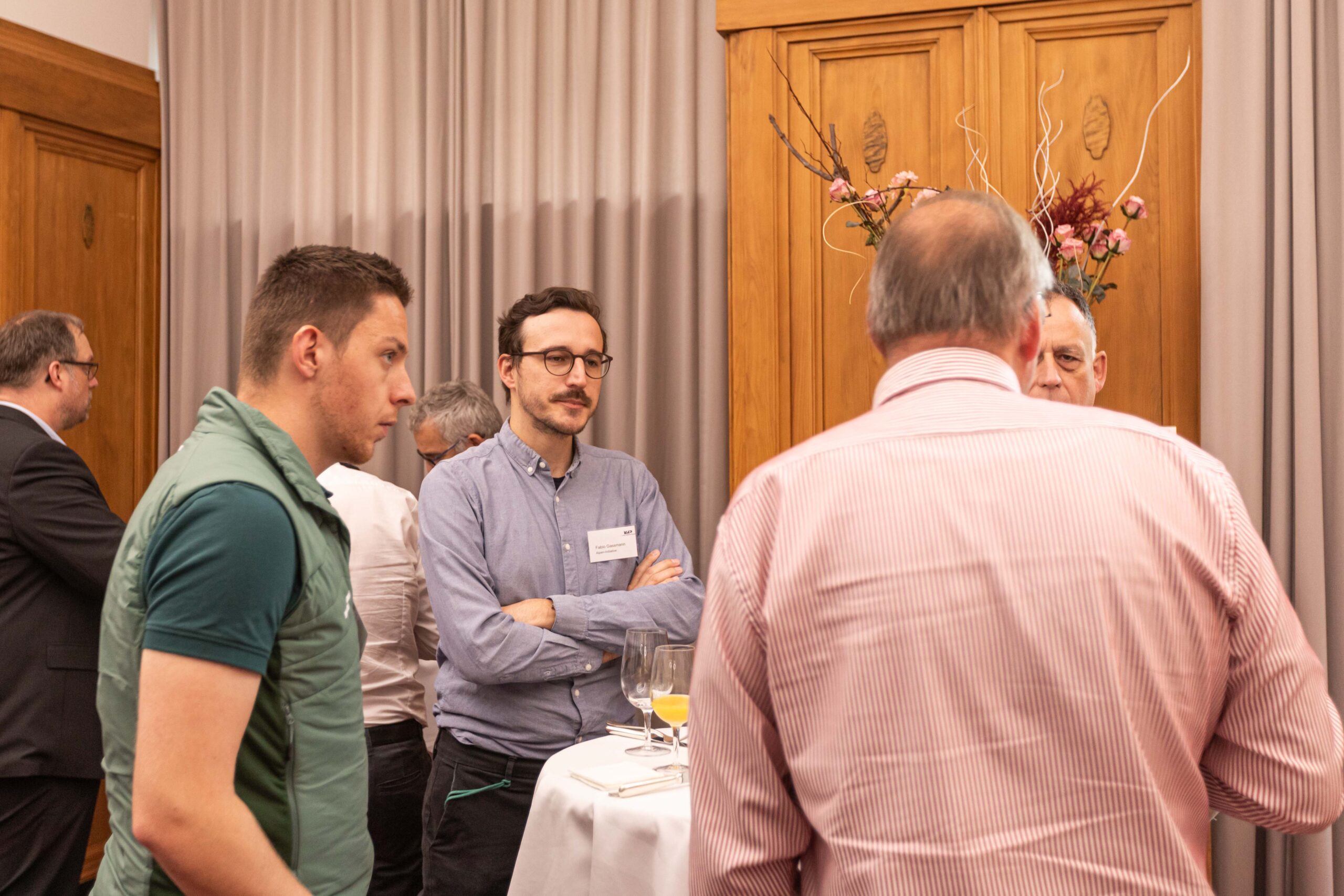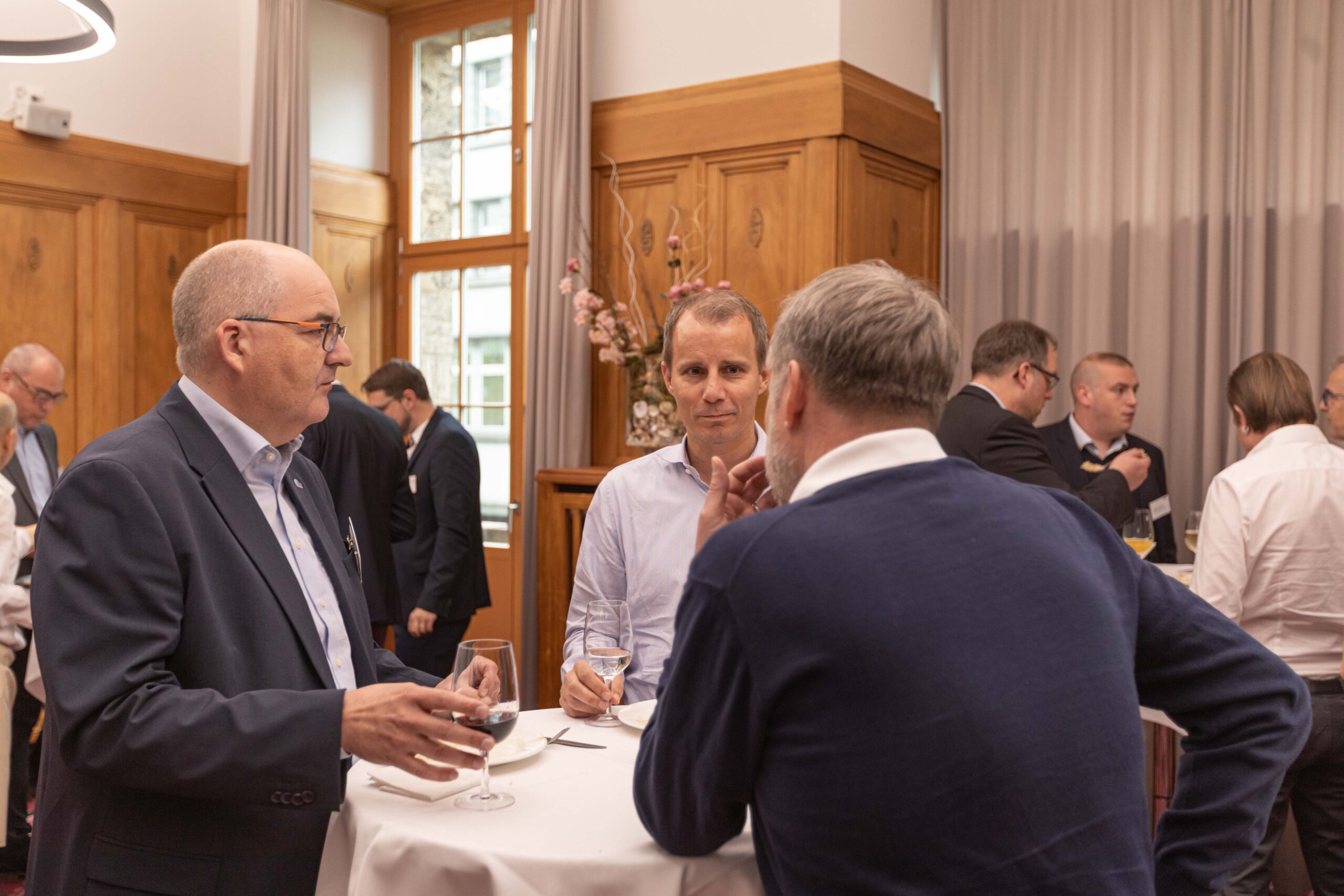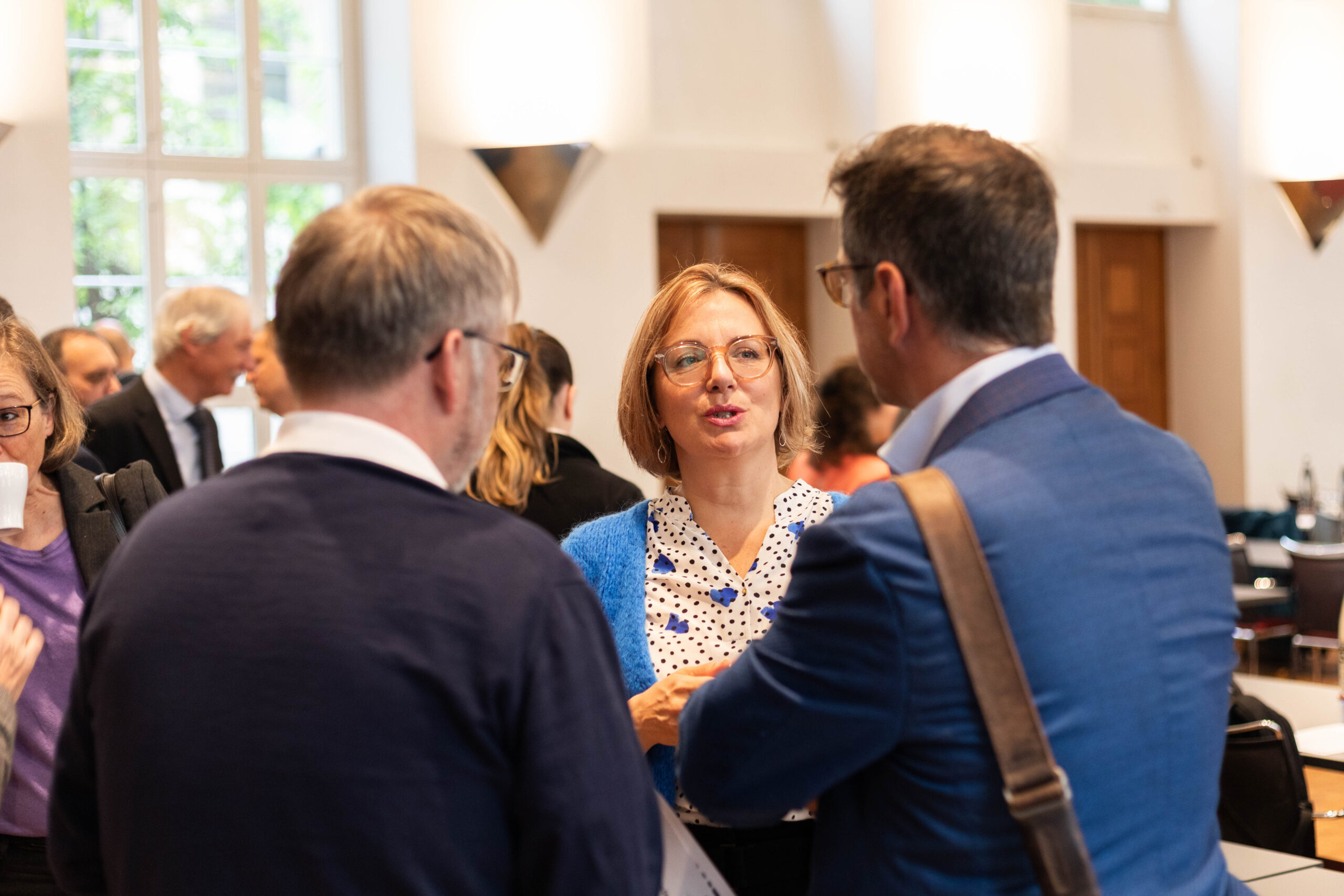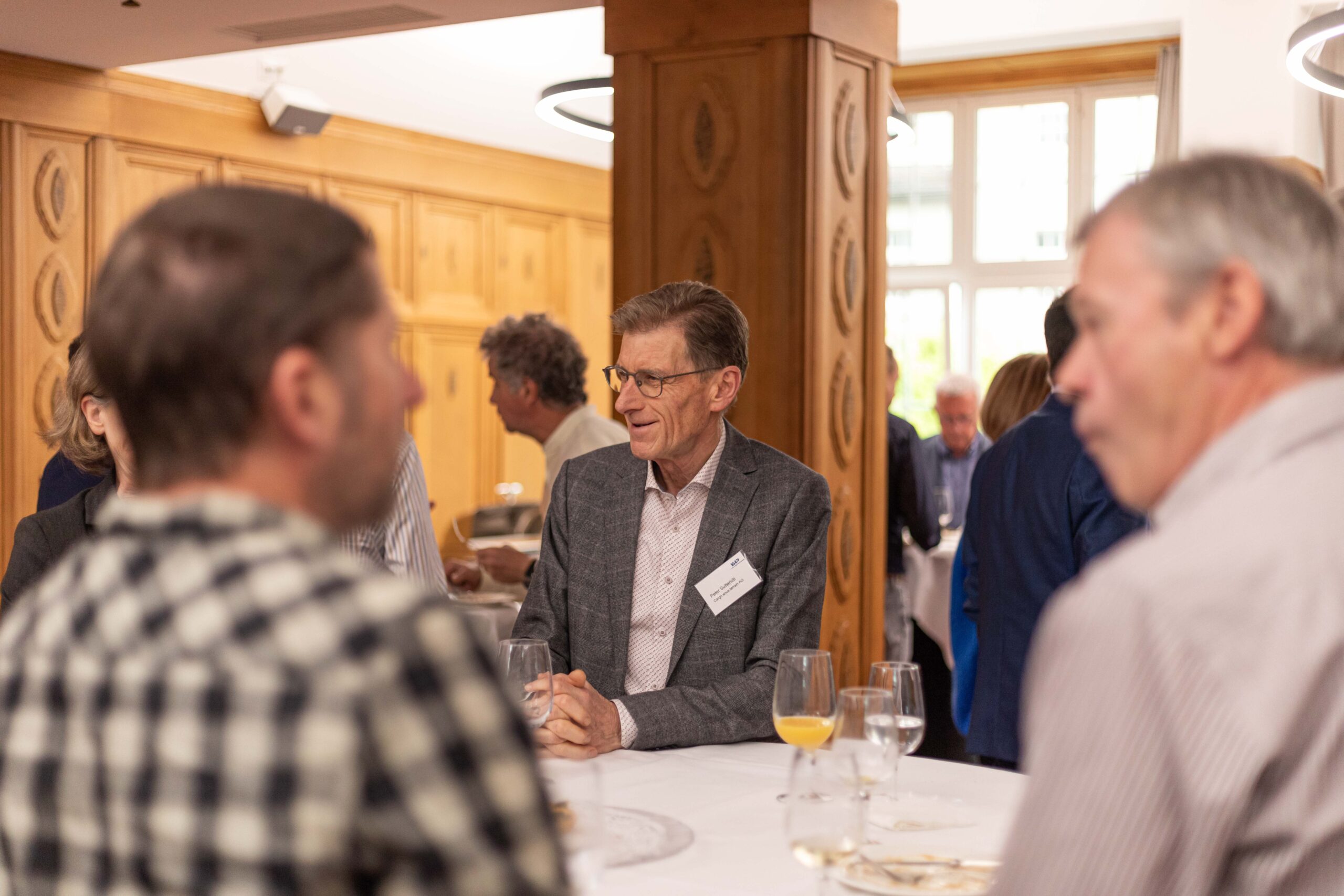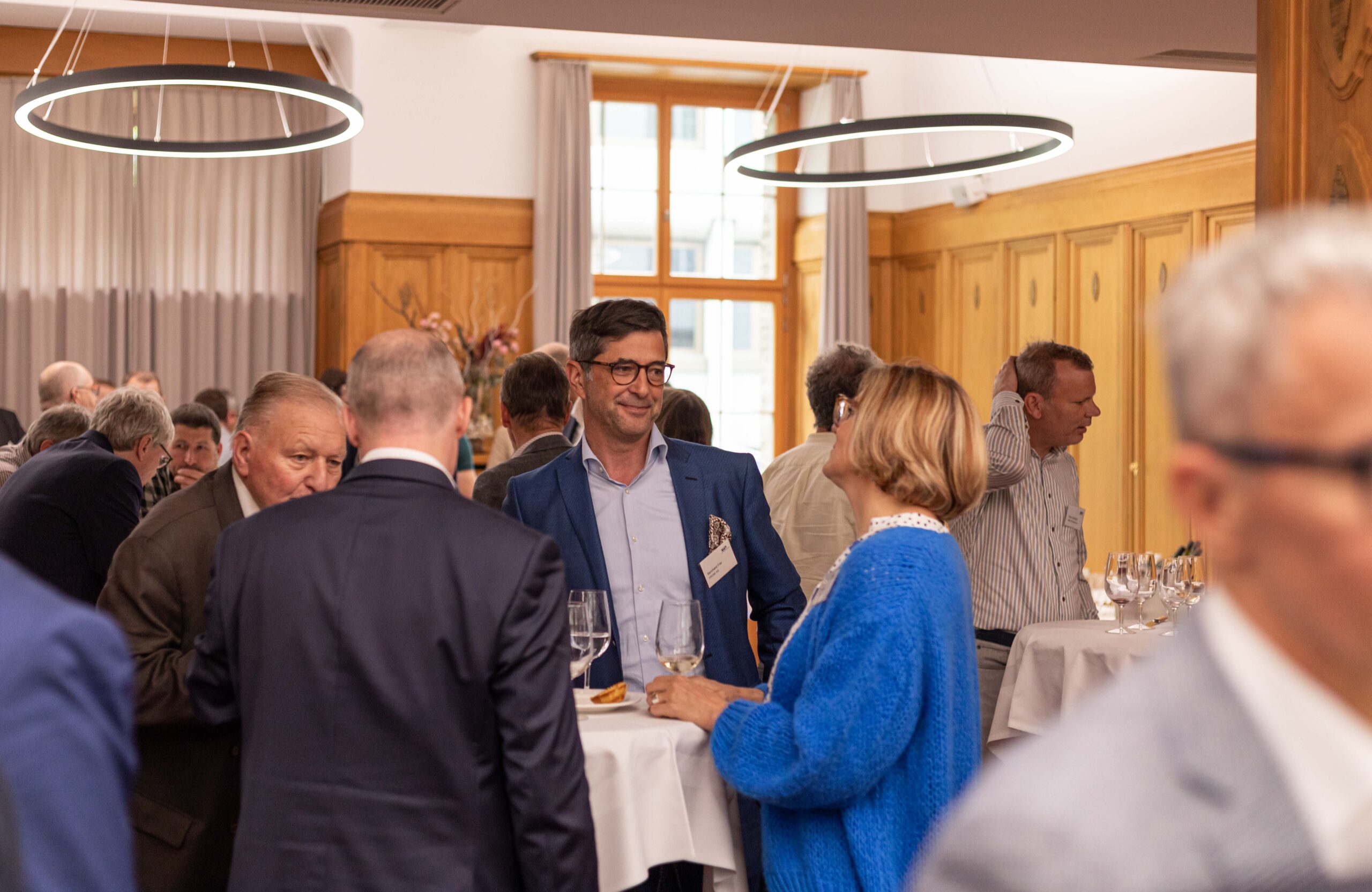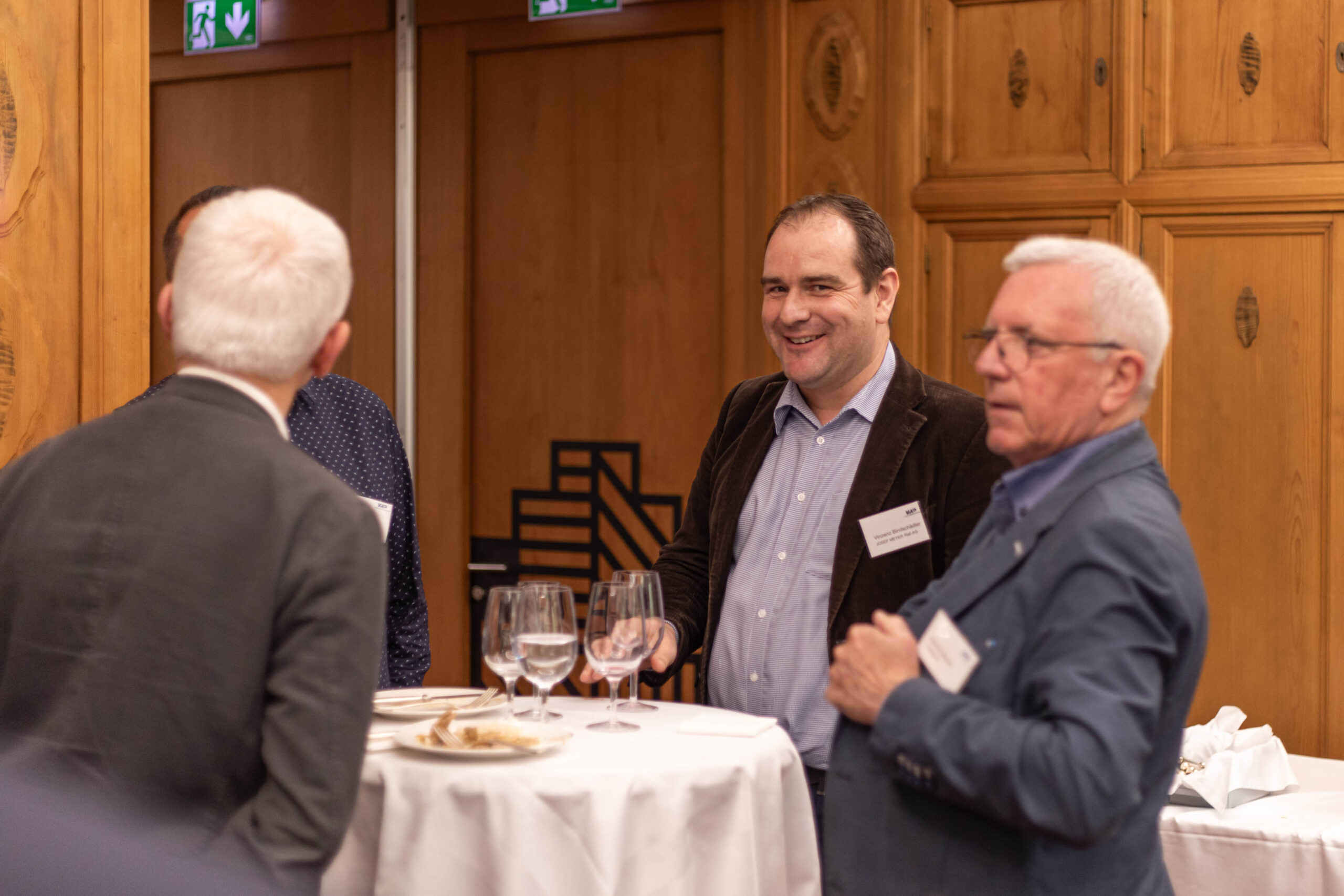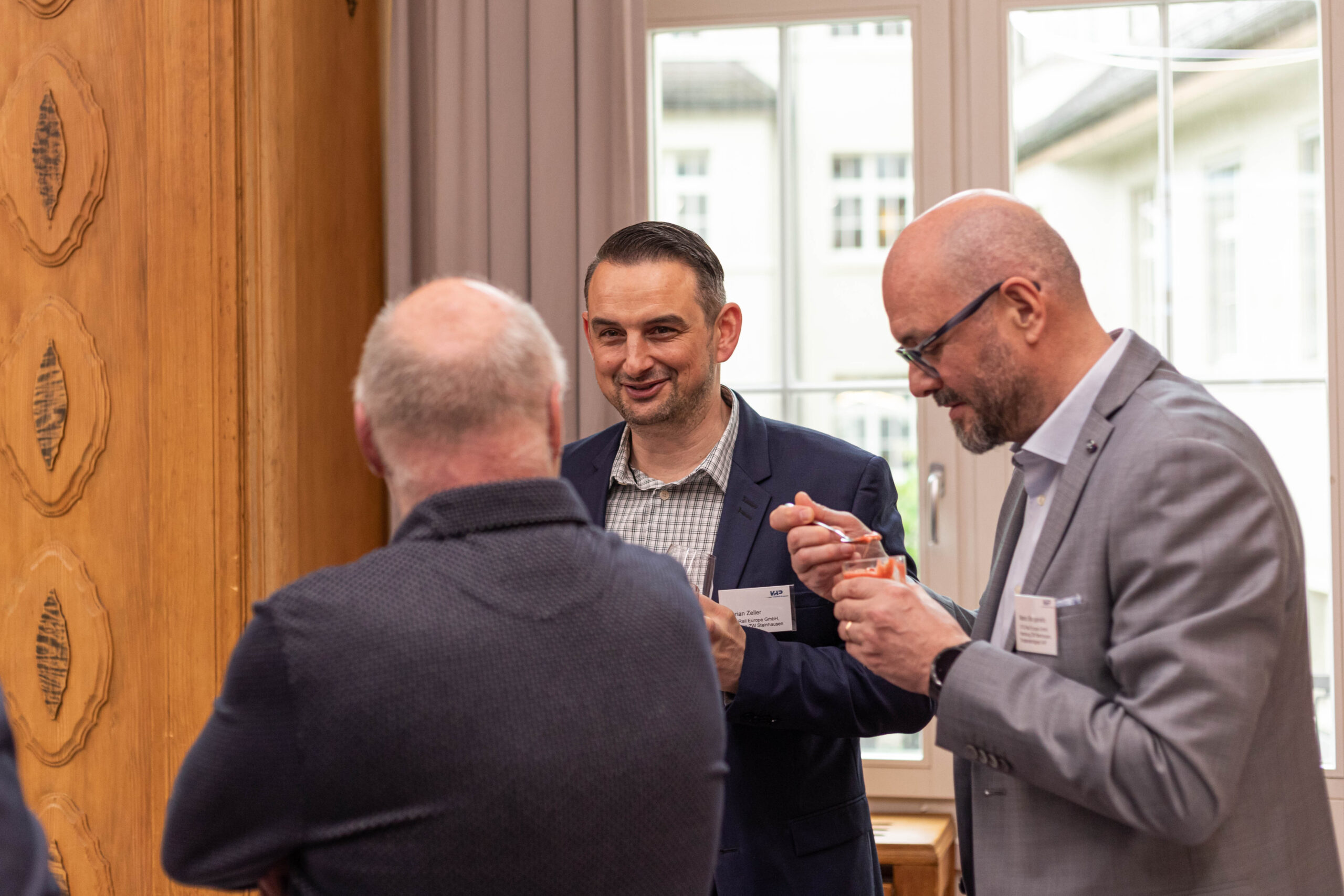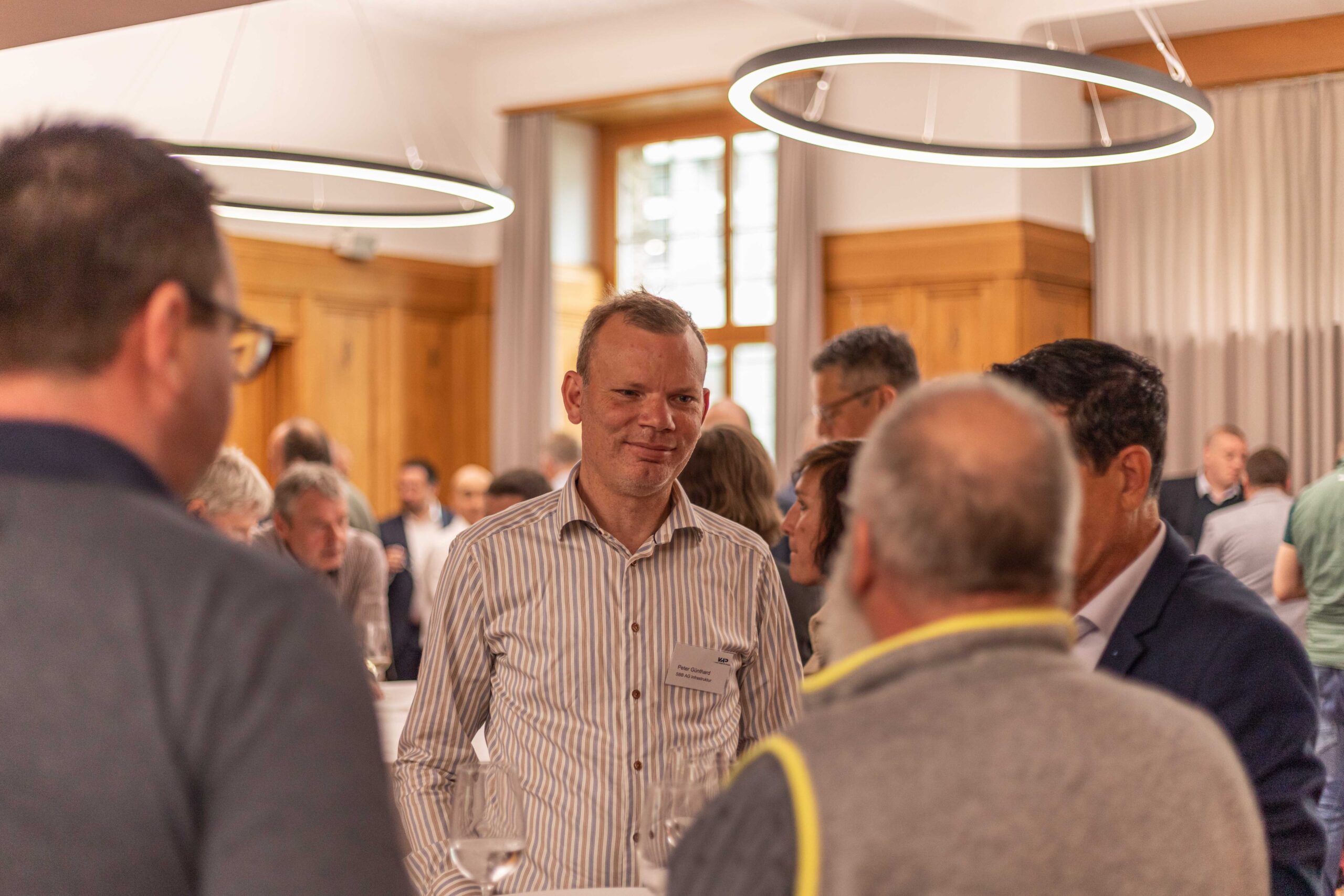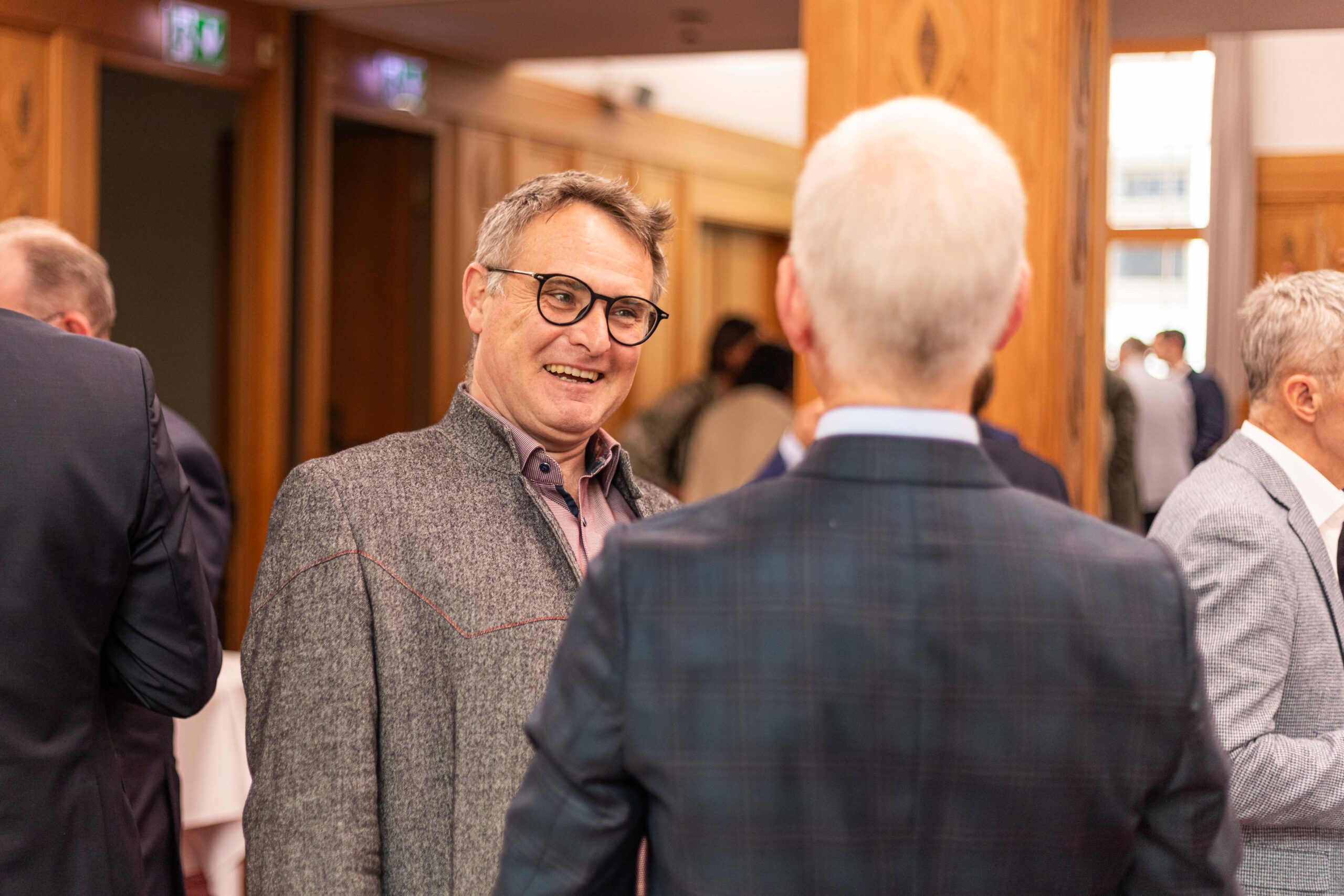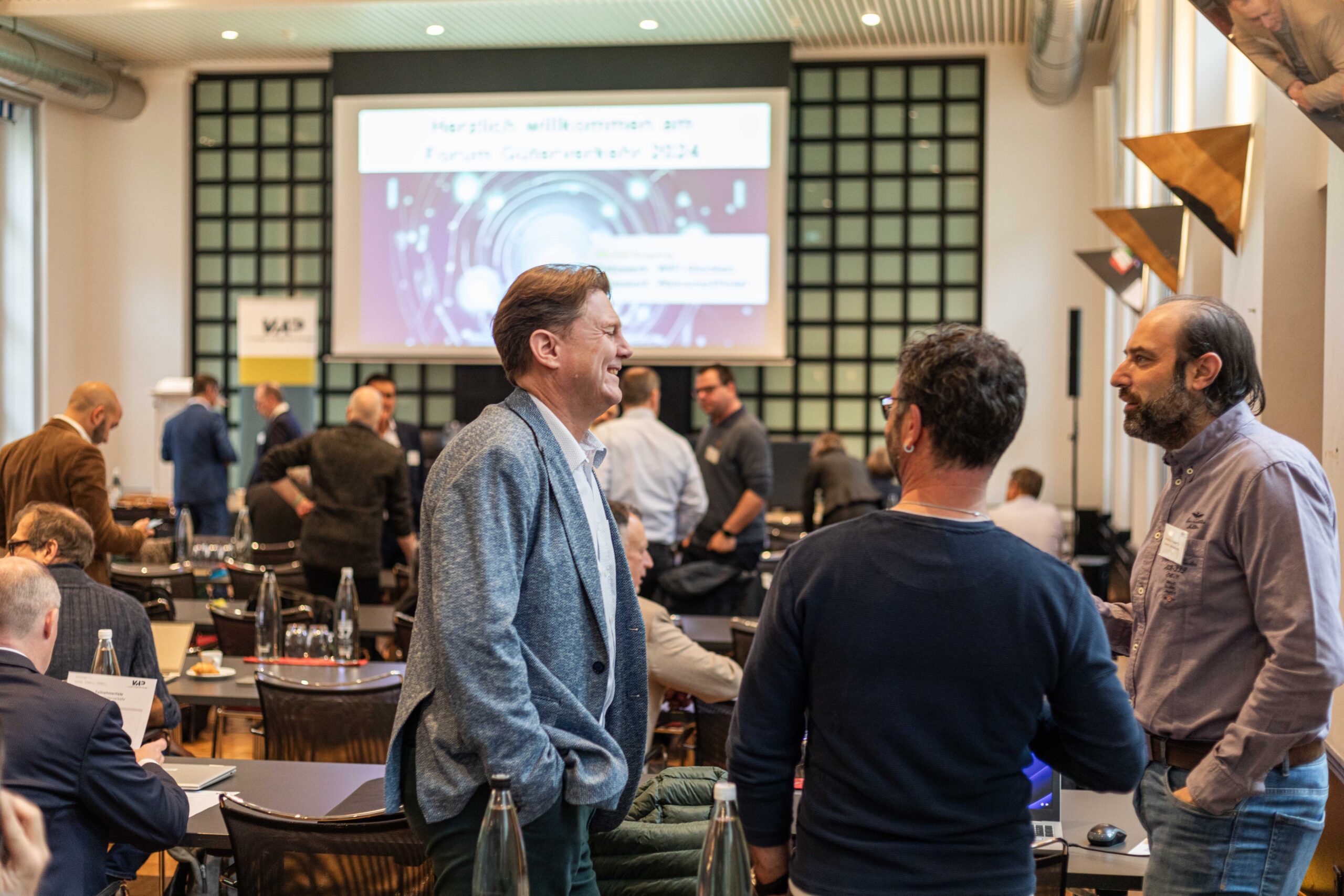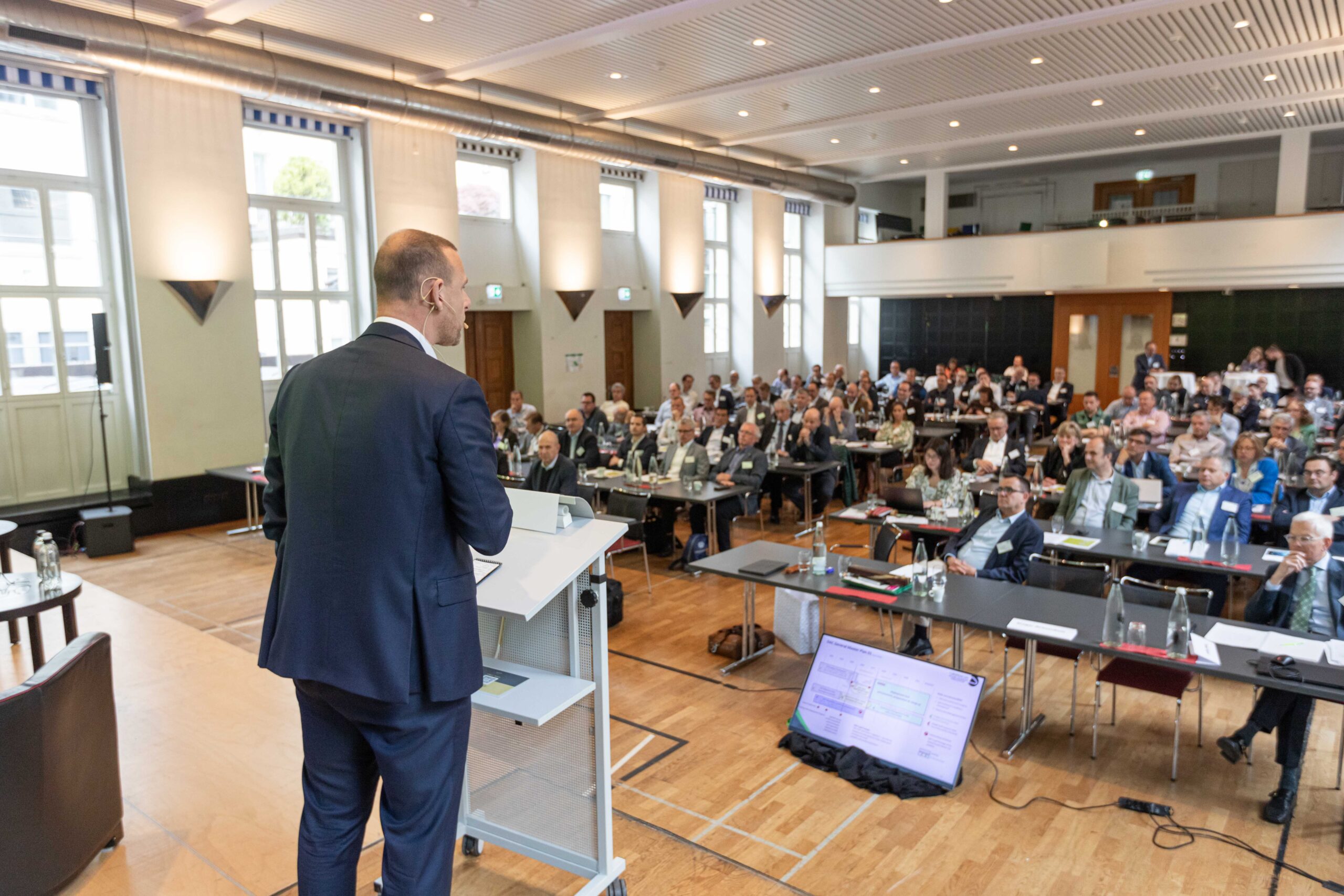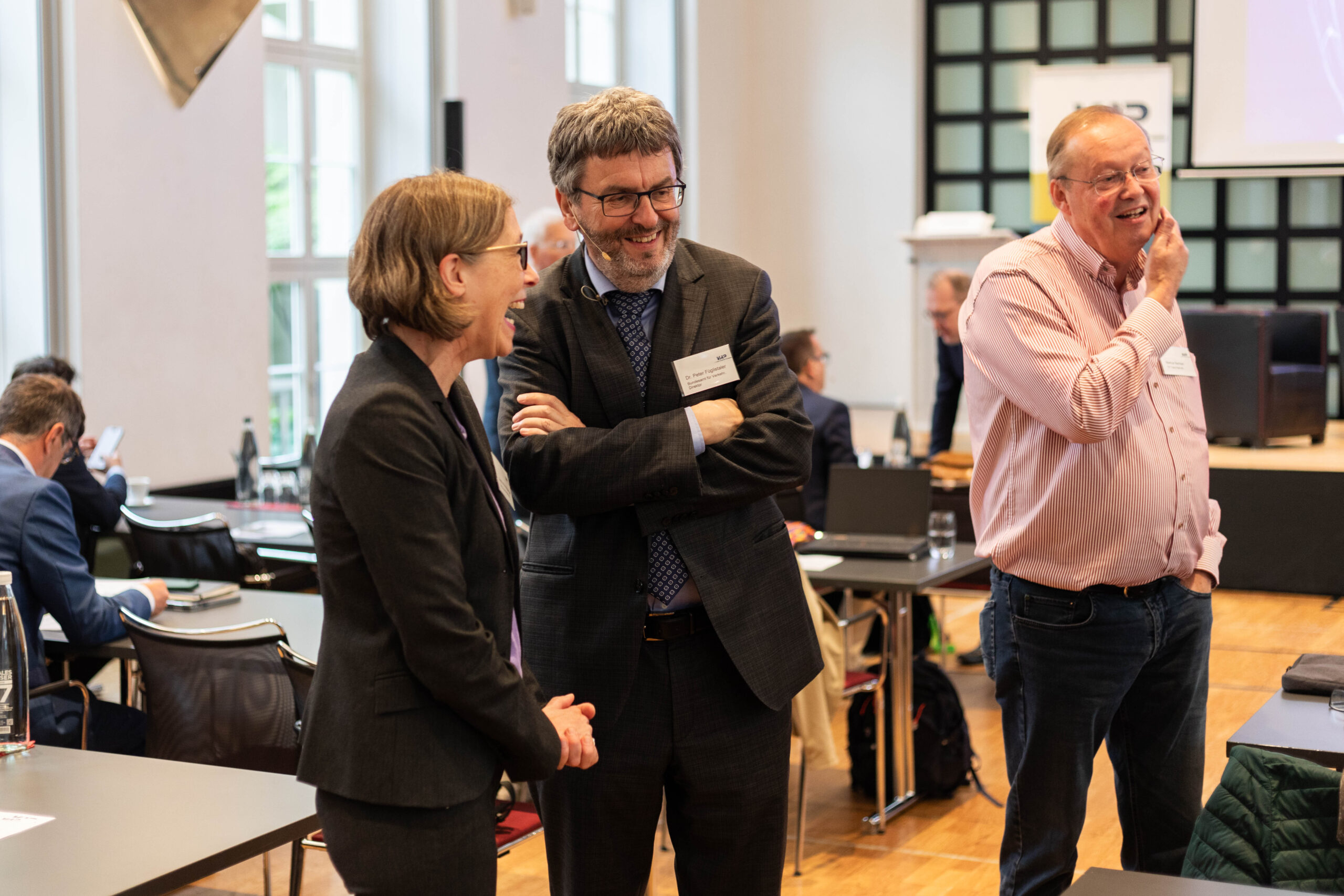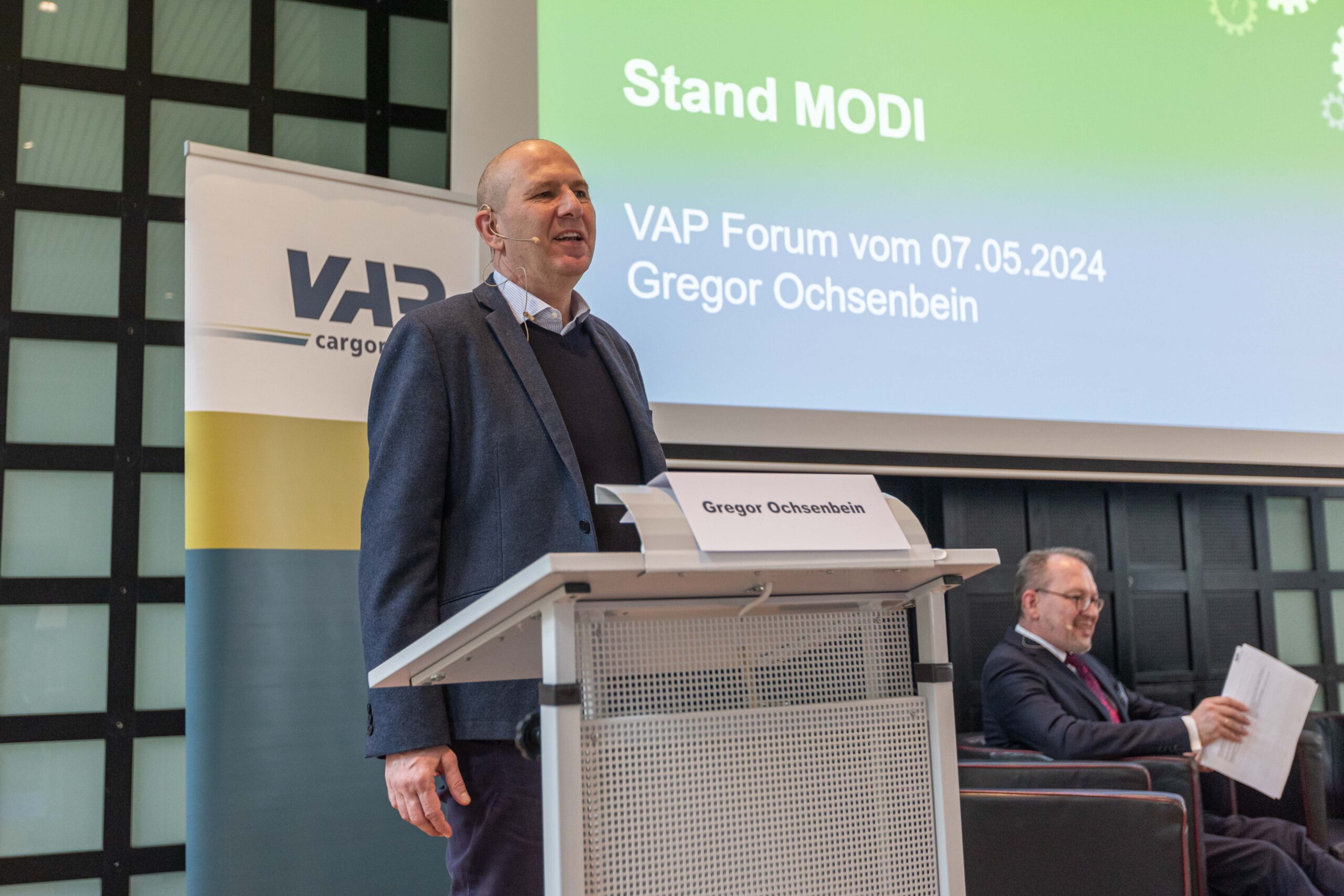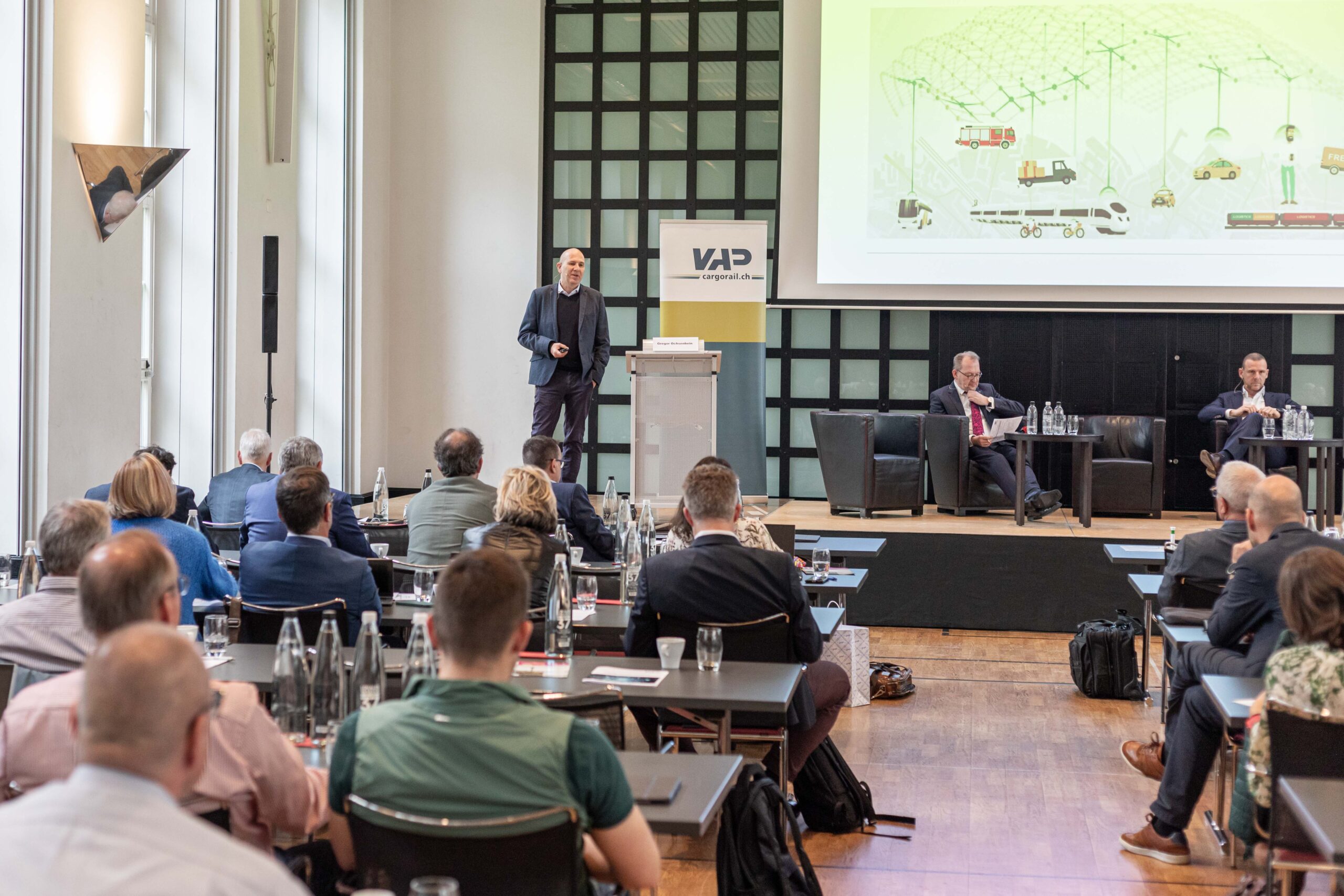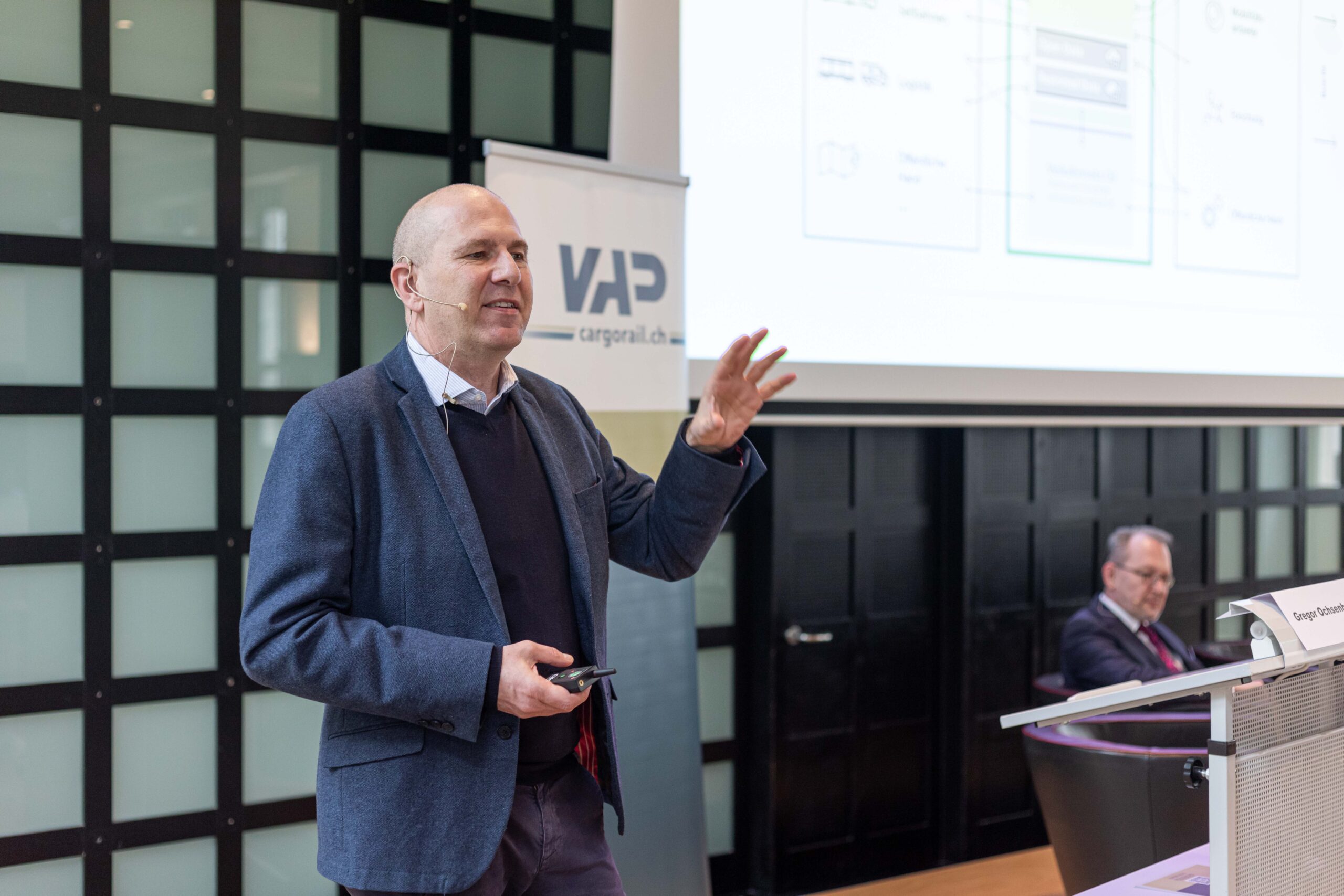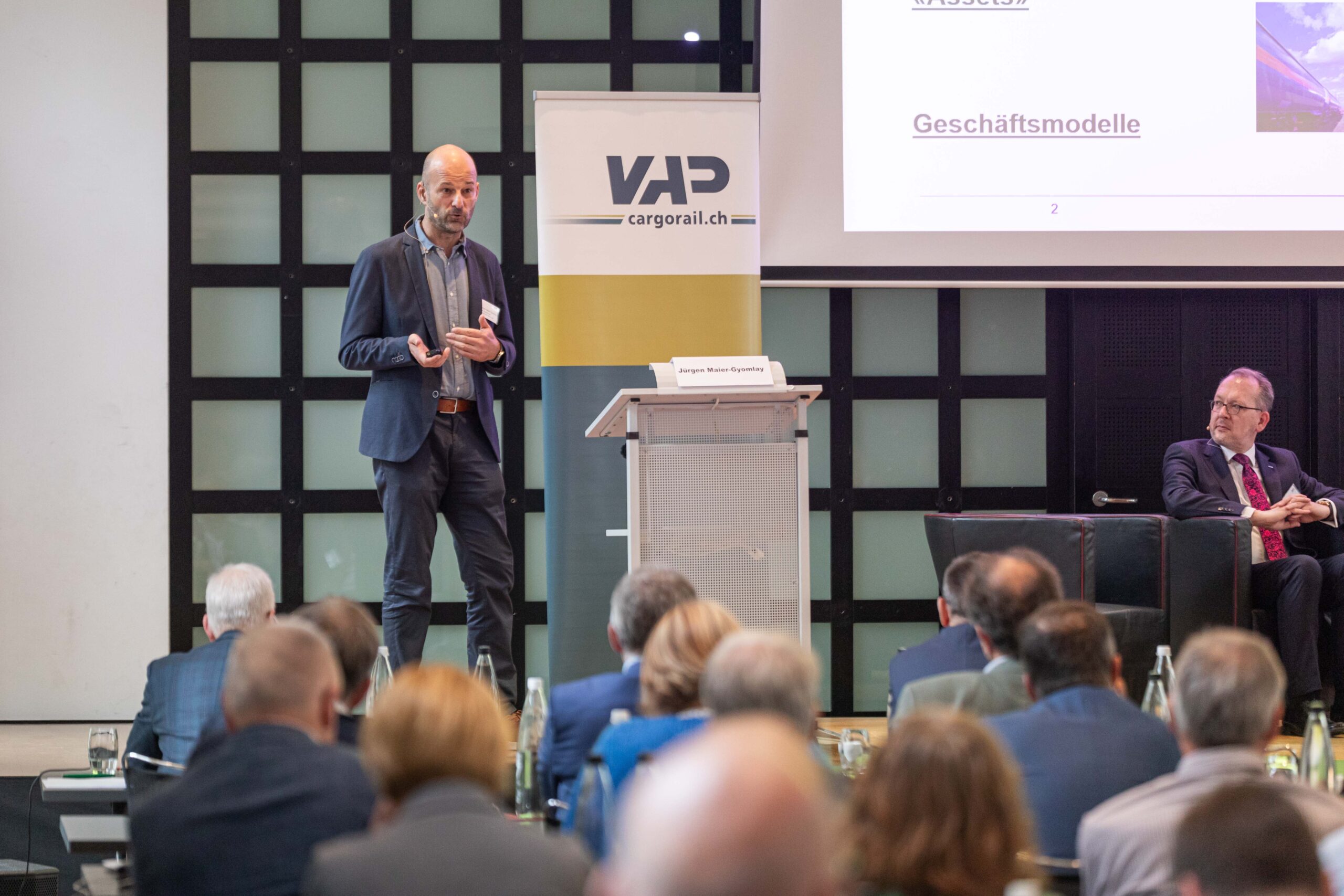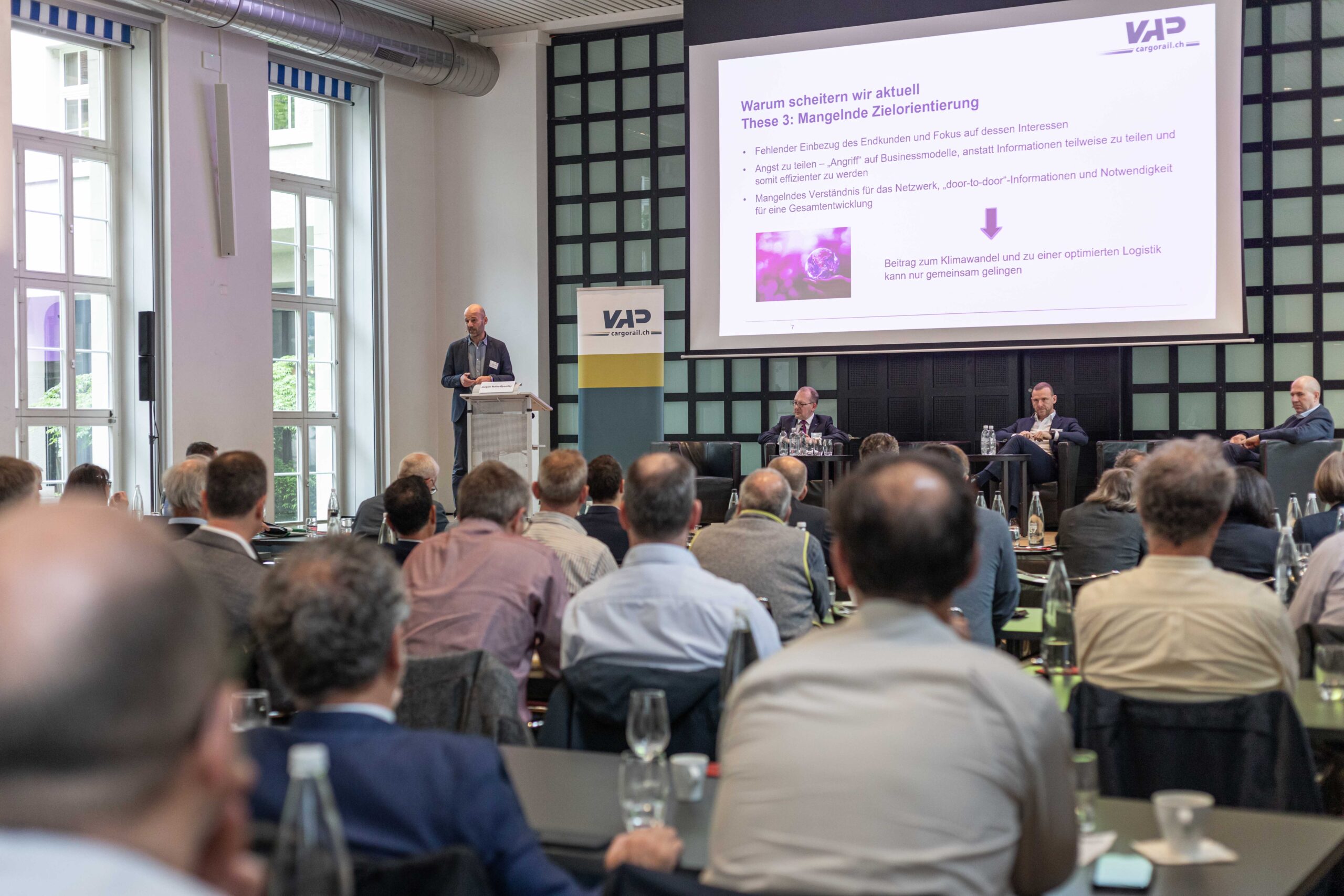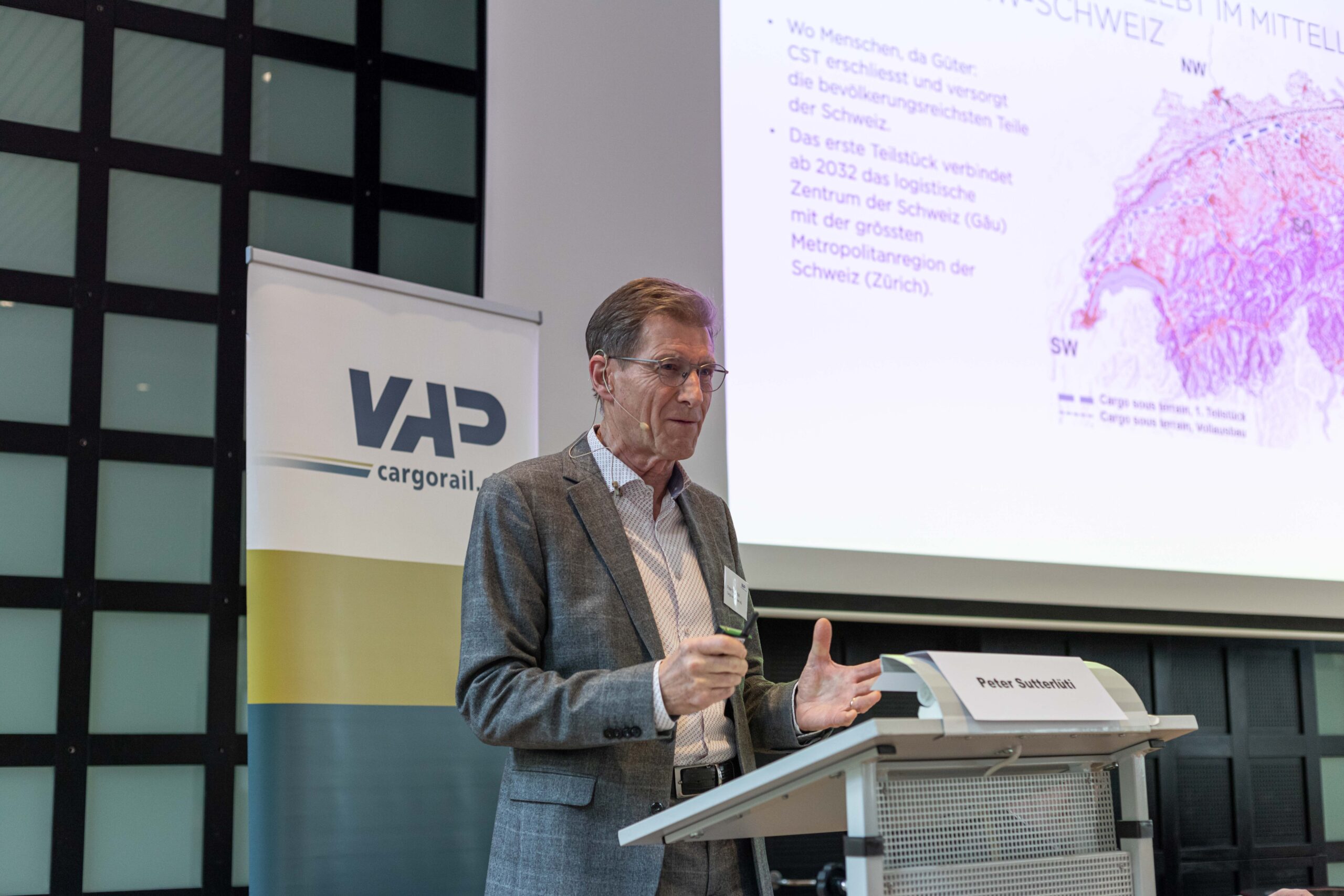FREIGHT TRANSPORT INDUSTRY
What moves the freight transport industry? Various factors have an impact on the freight transport industry. As the voice of the shipping industry, we are campaigning for a competitive rail freight system. To this end, we monitor, among other things, modal shift and lobby politicians for non-discriminatory rail.
The future of inland freight transport
Further development of freight transport: variants of the Federal Council do not go far enough
COMPETITION IN RAIL FREIGHT TRANSPORT
Interoperability
The optimisation of processes and interfaces and the connection with the 4th EU railway package.
Sustainability
The motion by Josef Dittli, member of the Council of States, calls for an overall concept on how rail freight transport and multimodal logistics solutions can contribute to reducing CO2 emissions.
INFORMATIVE
Future rail freight transport in the area / wagonload transport
- Cargo Forum Switzerland response on the «Weiterentwicklung der Rahmenbedingungen für den Schweizer Gütertransport»
- Media release, 15.2.2023: Weiterentwicklung des Güterverkehrs: Varianten des Bundesrates greifen zu kurz
- VAP consultation response on the «Weiterentwicklung der Rahmenbedingungen für den Schweizer Gütertransport»
- LITRA, ASTAG, IG Kombinierter Verkehr, VAP and VöV with the Freight Transport Commission jointly comment on the federal government’s consultation on the «Further development of the framework conditions for Swiss freight transport» (in german)
- Media release, 8.2.2023: Medienmitteilung zur Zukunft des Binnengüterverkehrs
- Interview in RailBusiness, 21.11.2022: Frank Furrer zur Fortführung des Wagenladungsverkehrs
- Media release, 2.11.2022: Unterstützung für einen starken Schienengüterverkehr in der Fläche
- 2.11.2022: Bundesrat gibt zwei Varianten in Vernehmlassung
- Erläuternder Bericht zur Vernehmlassungsvorlage, BAV
- Faktenblatt Digitalisierung
- Faktenblatt Schienengüterverkehr
- Position paper to KVF‑N, 22.6.2022: Future of rail freight transport in the countryside
Energy crisis
- Media release of 21.10.2022: Rail freight must be protected from energy price increases (in german)
- Demand of the European associations
- Regulation 2022/1854
- Freight railways: 28% – in 2023 feared share of electricity in total costs in rail freight transport (in german)
Rail Freight Transport Vision of the Advisory Group on the Development of Rail Freight Transport, 2022
Summary of a study commissioned by the shipping industry
- Study «From integrated to market-oriented railways» in German or in French
Modal shift report 2021
- Federal Council report on modal shift of November 2021 (in german)
- Blog articel: Modal shift: In transit on the right track
Transport of dangerous goods
Legal
Basic studies of the Confederation
- Transport Outlook 2040
- Transport Outlook 2050
- Energy perspectives 2050+
- Transfer report 2021
Underground freight transport
- Legal basis and new investors for “Cargo sous terrain”
- Consultation on the federal law: VAP response
- Consultation on the federal law: Response Cargo Forum Switzerland
- Explanatory report on the consultation draft
- Federal law on the underground transport of goods: consultation draft
Archive
Freight transport in the Covid 19 crisis
- Milderung der pandemiebedingten Auswirkungen auf den Schienengüterverkehr im Jahr 2021
- Finanzielle Unterstützung Schweizer Schienengüterverkehr in der Krise
- Medienmitteilung Unterstützung des Güterverkehrs in der Krise
- Vernehmlassungsantwort zum Bundesgesetz über die Unterstützung des öffentli-chen Verkehrs in der COVID-19-Krise
- Positionspapier Der Güterverkehr zeigt Stärke in der Krise
Relocation report 2019 – industry calls for additional measures
- Bericht des Bundesrats über die Verkehrsverlagerung vom November 2019
- Positionspapier der Branche
- Position der Branche (Präsentation)
- Position der Branche (PDF)
- Medienmitteilung der Branche
- BAV: Botschaft zum Bundesbeschluss über eine Erhöhung und Laufzeitverlängerung des Zahlungsrahmens für die Förderung des alpenquerenden Schienengüterverkehrs
- BAV: Bundesbeschluss über eine Erhöhung und Laufzeitverlängerung des Zahlungsrahmens für die Förderung des alpenquerenden Schienengüterverkehrs
- BAV: Faktenblatt Sinkende Lastwagenzahlen und hoher Marktanteil der Bahn
- BAV: Faktenblatt Verlagerungswirkung der NEAT
- BAV: FAQ Verlagerungsbericht 2019
- BAV: Verkehrsentwicklung im alpenquerenden Güterverkehr infolge Fertigstellung der NEAT
Sites
First and last mile
Over 850 sidings are used in Switzerland. Unfortunately, there is a steady decline. You can find out how the VAP is campaigning for the preservation of the sites and other useful information in the chapter Sites.
Network
The network is about access to the railways, the train paths. Optimal utilisation requires far-sighted construction planning, fair prices and good organisation.
You can find out how we are committed to this and other useful information under the following link.
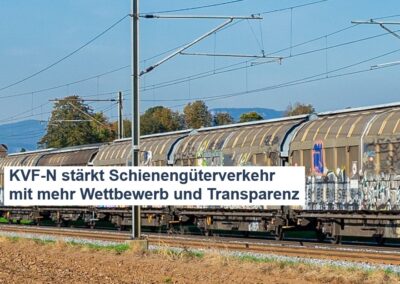
KVF‑N strengthens rail freight transport with more competition and transparency
The National Council’s Preliminary Consultation Committee (KVF‑N) is proposing that the Council approve the credits for the introduction of digital automatic coupling (DAK) and the temporary compensation for single wagonload transport (EWLV), including the ordering of freight transport, as part of its 24.017 business. It also makes some crucial clarifications to the legal text: Competition is to be promoted more intensively and cross-subsidisation between subsidised and self-subsidised services is to be prevented through the disclosure of key figures and financial flows in the annual reports of the rail freight companies. In addition, the KVF‑N wants to explicitly include inland waterway transport in the draft law in order to create more legal certainty.
On the other hand, the goal of increasing the share of rail freight transport added to the law is not very effective. This message should rather be directed at the market-dominating, state-owned SBB, which continues to drive traffic away from the railways with its current offer and pricing policy.This undermines the last of the customers’ trust in the efficiency and will of the state railway.In fact, the measures envisaged in the proposal are more effective than ambitious targets:Rail freight transport can gain market share through the planned digitalisation and the transformation from a 19th century system into the 21st century.
The increased promotion of competition between rail freight companies, in combination with the temporary compensation for EWLV, could soon lead to a broader range of services and growing market share for rail. In this respect, the more precise proposals of the KVF‑N are likely to be far more effective than non-binding modal shift targets, which are also contrary to the constitution.
Regrettably, the proposals for more transparency and competition in the construction and operation of transhipment facilities did not receive a majority.
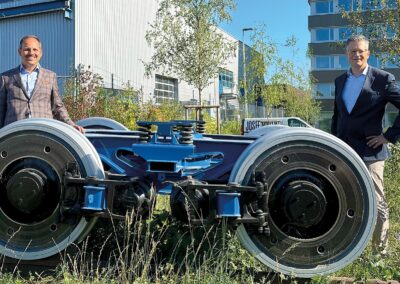
«I consider the asymmetry of benefits and implementation costs to be the biggest sticking point of the DAK»
The JOSEF MEYER Rail (JMR) Group specialises in the maintenance and repair of freight wagons and has locations in Switzerland and abroad. In an interview with the VAP, Dr Dominik Suter, owner and Chairman of the Board of Directors, and Ulrich Walt, Group CEO since September 2024, talk about the success factors of an industrial sector player, the asymmetry of innovations and the future of Swiss rail freight transport.
VAP: Mr Suter, how did the change in leadership come about and what do you expect from Ulrich Walt?
Dominik Suter: Vinzenz Bindschädler, our previous Managing Director, has decided to leave JMR at the end of September 2024. In Ulrich Walt, a long-standing industry expert is taking over the management of our Group. Together, we want to realise our vision of sustainably increasing the productivity of our railway customers and expand our group of companies in an international context.
VAP: You express your brand promise with the attributes ‘reliable’, ‘committed’ and ‘innovative’. Mr Walt, how do you intend to strengthen these attributes in the future? Where will you break new ground?
Ulrich Walt: I find these taglines helpful. Although they are somewhat generic, they make it clear what is important to our customers. The attribute ‘reliable’ in particular is crucial in the maintenance business because it has a lot to do with safety. With the attribute ‘committed’, we want to consolidate our reputation as one of the best workshops in Europe. For example, we are constantly shortening lead times and sending out mobile maintenance teams in Switzerland for minor repairs.
I will maintain our strategic course. As we are integrated into industrial processes, we cannot revolutionise our business model overnight. However, I would like to set new priorities. For example, we will focus even more strongly on our core competences of maintenance and ECM offerings. Internally, we are focussing more on management and responsibility. And finally, we also want to further optimise our systems and processes.
The term ‘innovative’ is generally equated with digitalisation. This is also the subject of lively discussion in rail freight transport, particularly in connection with digital automatic coupling (DAK). What is your opinion on this?
Dominik Suter: The promotion of rail transport in Europe requires not only the maintenance of the rail infrastructure and the DAK in the short term, but also innovations in rolling stock in the medium term. For example, years ago we developed low-noise and low-wear freight wagon bogies for significantly higher speeds together with industry partners. In a joint venture with PROSE, this has resulted in the more cost-effective ‘LEILA Light’ bogie based on a technology that is ready for approval. ‘LEILA Light’ offers impressive advantages in terms of noise, wear and tear on the rail infrastructure and speed. However, as long as the advantages in terms of noise, wear and tear on the rail infrastructure and speed do not reach the investor, there will be no investment in modern rolling stock.
Ulrich Walt: The situation is similar with DAK as the most frequently cited driver of digitalisation. When it comes to innovations for rail transport, the question always arises as to whether they should take place on the carriage or on the infrastructure. DAK is revolutionising the carriage. However, the benefits of this innovation and the costs of implementing it are distributed asymmetrically, i.e. they are incurred in different places. In such a case, it will be difficult to achieve a breakthrough. I consider this asymmetry to be the biggest sticking point of the DAK. The regulator needs to provide an impetus here. The DAK is well advanced in the political process, which is why it will prevail sooner or later.
JMR’s roots go back to the year 1888. Since then, your company has established itself as a reliable industry player. What is the secret of your success?
Dominik Suter: The secret of our success is our employees, who are ‘on fire’ for rail freight transport. Some employees have been with us for decades, sometimes even their entire professional lives. The lean structures with short decision-making channels and our customer-orientation also contribute to our success.
Ulrich Walt: I can only agree with that. We are small and agile, which is why we consistently focus on our customers. I would like to add another success factor: JMR has an engineering background. So we can do more than just maintenance, we can even rebuild entire sub-assemblies or bogies if required. Our engineering expertise keeps us in pole position.
Liability in rail freight transport is currently taking centre stage. Recommendations have also been made for the further development of the ECM Regulation. What do you think about this?
Ulrich Walt: In connection with the accident in the Gotthard Base Tunnel, the Joint Network Secretariat of the European Union Agency for Railways ERA and the Swiss Safety Investigation Board STSB issued recommendations. These have already been incorporated into our maintenance measures and our ECM services. However, I see a certain discrepancy in regulatory developments. On the one hand, the federal government wants to promote rail freight transport, for example with the total revision of the Freight Transport Act. At the same time, the competitiveness of rail freight transport would be reduced by increasing the liability obligations of the owners. Such distortions penalise private-sector market players such as JMR because they impose additional costs on us.
What strengths do you attribute to our association?
Ulrich Walt: The VAP is excellently networked with other logistics associations and players in the rail industry. It has extensive expertise that it can use to support its members. It can also be leveraged for political initiatives. I believe that the VAP has become impressively professionalised over the last three decades and is now an important voice for the rail freight industry.
What would you like to see for the VAP?
Ulrich Walt: Two things are important to me for the coming months and years. Firstly, I hope for a successful handover of operational management from Dr Frank Furrer to Dr Simon Wey. Fortunately, Mr Furrer will remain with the VAP, as he was elected to the Board of Directors at the last Annual General Meeting. This will enable the transfer of his enormous wealth of knowledge and experience and ensure continuity. Simon Wey is an experienced association man and an outstanding economist. This combination should enable him to continue the professionalisation of the association. Secondly, I wish the newly founded VAP subsidiary ‘Cargo Rail Consulting AG’ a successful start. Over the last few years, the demand for consultancy services in this area has become increasingly apparent. This subsidiary will certainly further strengthen the association.
Who would you recommend working with the VAP?
Dominik Suter: All shippers and wagon keepers and, in general, anyone who is interested in rail freight transport or is committed to it in Switzerland or Europe. The shippers benefit directly, the wagon hire companies indirectly from a fruitful exchange and up-to-date information. As a member, you are at the source of rail freight transport expertise, so to speak.
How do you see the future of rail freight transport in Switzerland?
Ulrich Walt: I have noticed two opposing trends. On the one hand, the ongoing de-industrialisation of Switzerland means that there are fewer and fewer ‘rail-friendly’ goods that can be transported by rail. On the other hand, the sustainability transformation of countless industries is putting rail at the centre of attention as a climate-friendly mode of transport and a valid alternative to road transport. It is true that rail freight transport is cumbersome because much of it is still in the hands of the state. Nevertheless, I consider the future of rail freight transport to be promising. The infrastructure, efficiency and sustainability benefits are there. Freight rail customers and legislators alike have recognised this.
Dominik Suter: Despite the climate debate and the sharp rise in the number of hours of congestion on the motorways, we are seeing a shift back from rail to road. Among other things, this is due to price increases, a lack of slots for freight transport and a lack of punctuality. There is an urgent need for action at a political level. The VAP can become a little louder here.
What has not yet been said?
Ulrich Walt: I am delighted to be working for the VAP as CEO of the JMR Group. In my new position, the work of the VAP affects me even more than it did with my previous employer. The only difference is that I look at things at JMR from an industrial perspective.
Thank you, Dr Dominik Suter and Ulrich Walt, for this stimulating interview.
|
Dr Dominik Suter is the owner of the JOSEF MEYER Rail Group and Chairman of the Board of Directors. He has more than 25 years of management experience as a CEO, board member and consultant, during which he has successfully developed numerous companies, including internationally active industrial companies in Switzerland, Germany and Austria, even in difficult situations. |
|
Ulrich Walt has been Managing Director of JOSEF MEYER RAIL AG in Rheinfelden since 1 September 2024. He has 20 years of experience in management positions in logistics in Switzerland and abroad. He has worked at Alloga and Holcim Switzerland, among others, and was most recently CEO of logistics and service specialist Fastlog. Ulrich Walt is also Vice Chairman of the Board of Directors and Chairman of the Executive Committee at VAP. |
|
JOSEF MEYER Rail (JMR) was founded in Lucerne in 1888. In 1943, the company opened a branch in Rheinfelden, Switzerland, for the production of freight wagons and welded assemblies. With the liberalisation of the railway sector in the 1990s, the company expanded its range of activities to include the maintenance of rail vehicles. Today, the JOSEF MEYER Rail Group is a leading expert in the maintenance and modernisation of freight wagons, complex repairs to passenger carriages and locomotives as well as the production of complex welded assemblies, small series and special vehicles. |
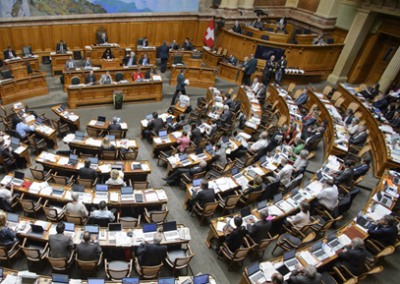
Autumn session 2024: transport policy on the agenda
In the autumn session from 9 to 27 September 2024, Parliament discussed various transport policy issues. Particular attention was paid to the revision of the Freight Transport Act (GüTG). This bill stands in stark contrast to SBB Cargo’s de facto solo effort.
That’s what it’s all about:
- Rail infrastructure 2025–2028
- Rösti and Burkart warn against drastic tariff increases
- Further financial injection for SBB
- Relocation targets for the expansion of the NEAT feeder lines
Maintain and further develop rail infrastructure from 2025 to 2028
On 23 September 2024, the National Council was the first chamber to discuss Federal Council proposal 24.045 ‘Financing the operation and maintenance of the railway infrastructure, system tasks in this area and investment contributions to private freight transport facilities in the years 2025–2028’. On 15 May 2024, the Federal Council requested a total payment framework of CHF 16.442 billion for the upcoming tasks, around CHF 2 billion more than in the previous period.
With this proposal, the Federal Council is setting the targets for the operation, maintenance and technical development of the railway infrastructure financed by the federal government for the years 2025 to 2028. For the third time, financing will come entirely from the railway infrastructure fund (BIF). The National Council approved the credit while rejecting a minority motion to increase the credit by 500 million.
At the same time, the Federal Council proposed extending the existing framework credit for investment contributions to private freight transport facilities by one year from 2021 to 2024. This is because the realisation of major projects has been delayed.It also envisages a four-year commitment credit of CHF 185 million for investment contributions to facilities for the handling of goods in combined transport (CT) and to sidings. This is to be used to finance the construction, expansion and renewal of the following components:
- CT transhipment facilities and sidings in Switzerland that comply with the concept for the transport of goods by rail in accordance with Article 3 GüTG
- CT transhipment facilities abroad that are necessary to achieve the modal shift objective in accordance with Article 3 GVVG
- Port facilities for the transhipment of CT goods
The National Council approved the Federal Council’s proposal by 194 votes to 1. The matter will now go to the Council of States.
Controversial developments in the debate on rail freight transport
On 24 September 2024, the Council of States was the first chamber to discuss the total revision of the GüTG. We reported on the latest developments in our blog post «Debate on Swiss rail freight transport threatens to derail».
With the revision, the legislator wants to enable more competition on the railways, strengthen single wagonload transport and prevent market-distorting discrimination. It wants to modernise the outdated system through automation and digitalisation, continue to provide financial support for the construction and renewal of private freight transport facilities and reimburse the HVF to freight payers as a new handling fee.
After a detailed discussion, the Council of States voted in favour of the bill by 35 votes to 3 with 3 abstentions.
This decision is in the context of the current mood of Swiss rail freight customers. SBB subsidiary SBB Cargo has been causing consternation among shippers for several weeks with disproportionate price increases – while offering the same or worse services. The consequences of this controversial behaviour are fatal. Many private-sector shippers are being forced to shift up to 10% of their freight transport volume back to the roads because transport by rail is no longer profitable. SBB Cargo, on the other hand, offers no willingness to discuss the development of alternatives.This behaviour contradicts the efforts of the GüTG revision and the consensus that was agreed between politicians, business and the state railway before the parliamentary consultation. In his speech, Councillor of States Thierry Burkart, FDP/AG, who is also President of ASTAG, emphasised that SBB’s pricing policy is not only geared towards what is perhaps necessary, but also towards what is possible in the market in order to avoid a shift back to road transport despite subsidies. In his speech, Federal Councillor Rösti also referred to three key elements in this context: loading flat rates, increased efficiency and prices, which should be optimised. These three areas are needed to ensure profitability in the end and to prevent any relocation. Based on his discussions with important shippers, he believes that the situation can be calmed to some extent and a solution found.
Further financial injection for the Swiss Federal Railways
On 11 and 19 September 2024, the Council of States and on 16 and 23 September 2024, the National Council again discussed the Federal Council’s proposed amendments to the Federal Act on Swiss Federal Railways (SBBG). After the last discussion, differences remained regarding Art. 20 on financing instruments. SBB should now be able to finance investments outside the area of the Infrastructure division entitled to compensation by means of interest-bearing and repayable loans from the Federal Treasury as long as it complies with the net debt requirements defined in the Federal Council’s strategic objectives. If SBB’s borrowing requirements for these investments exceed the net debt requirements set out in para. 1, they must be covered by capital contributions from the Confederation. The Federal Council shall apply to the Federal Assembly for the necessary capital injections as part of its budget.
The Council of States came to the conclusion that the financial support for SBB should be reduced. In the second round of deliberations on Wednesday, it voted in favour of a reduction to CHF 850 million without opposition and then released the spending brake. Marianne Maret (centre/VS), President of the Transport Committee, explained that SBB had recovered more quickly from the crisis, while the federal government’s financial situation was deteriorating. The National Council followed the Council of States and approved the reduced capital subsidy for SBB. It also ironed out the differences on loans by agreeing to a more flexible upper limit for vault loans.
The Councils’ decisions must be viewed in a broader context. In order to restore balance to the financial imbalance of the federal operation, a majority of the National Council agreed in the 2023 winter session to grant SBB a one-off capital injection in the amount of the long-distance transport losses of CHF 1.15 billion to reduce debt. Subsidiary SBB Cargo, which has already received extensive financial support in the wake of the Covid pandemic, will also benefit from this financial injection. It is about to conclude a service agreement to compensate for its network traffic, which it obviously cannot handle on its own. The private sector players, on the other hand, have neither received Covid funds nor do they have non-essential resources and investments to strengthen their investment capacity.
Balance sought between modal shift targets for the expansion of the NEAT feeder lines
The three motions 24.3389 «Advancing the expansion of the NRLA feeder lines on the left bank of the Rhine in the interests of modal shift», 24.3390 «Stabilising combined transport on the north-south axis by providing buffer tracks» and 24.3391 «For a greater modal shift to medium transport distances» came before the Council of States on 24 September 2024. The submitting Committee for Transport and Telecommunications wants to optimise the feeder lines to the NRLA.
The Council of States adopted the first two motions, but rejected the third. Their adoption presupposed a modal shift mandate for domestic traffic as well, which is not provided for in the constitution.
In principle, we welcome efficient routing on the north-south corridor in terms of security of supply, alternative capacities in the event of roadworks, punctuality and quality of rail freight transport. VAP President and member of the Council of States Josef Dittli already expressed this opinion at the anniversary meeting with former Federal Councillor Adolf Ogi in autumn 2021 (see blog post «25 years of the “Treaty of Lugano” – a look into the future»).
However, we criticise the one-sided focus of the motions on CT. Those responsible for the modal shift are thus missing the opportunity to promote other forms of multimodal transport beyond single wagonload transport. This is in clear contrast to the joint policy of the DACH states (Germany-Austria-Switzerland) to rapidly introduce digital automatic coupling (DAK). Furthermore, the motions contradict the revision of the GüTG (see above), as they pursue environmental and energy policy objectives not only in import, export and domestic transport, but also in transit.
We at the VAP demand that the Federal Council also clarify and present the potential with other multimodal modes of transport in the next modal shift report. Quality monitoring should also be introduced for conventional goods trains, as has been the case in CT for years. The distinction between combined and conventional transport must be abolished. The GüTG introduces financial support for import, export and domestic transport. In transit, however, only unaccompanied CT (UCT) should continue to receive financial support. We believe that this approach is not compatible with the objectives of the GüTG. This is because the constitutional mandate in the Güterverkehrsverlagerungsgesetz (GVVG) defines the modal shift in transit as a shift to rail, not to UCT. Only Art. 8 GVVG introduces the addition ‘primarily’ for the promotion of UCT, to the detriment of other multimodal logistics solutions with a rail component (see box).
|
Art. GVVG Promotion of rail freight transport (version in accordance with No. I of the Federal Act of 16 June 2023, in force since 1 Jan. 2024) 1 In order to achieve the modal shift objective, the Confederation may adopt support measures. These measures primarily promote unaccompanied combined transport. These measures must not have any discriminatory effects on Swiss and foreign transport companies in freight transport.amit das Verlagerungsziel erreicht wird, kann der Bund Fördermassnahmen beschliessen. Dabei wird in erster Linie der unbegleitete kombinierte Verkehr gefördert. Diese Massnahmen dürfen keine diskriminierenden Auswirkungen auf die schweizerischen und ausländischen Transportunternehmen im Güterverkehr haben. 2 In unaccompanied combined transport, the average level of compensation per consignment transported must decrease from year to year. 3 Accompanied combined transport (Rolling Highway) may be subsidised until the end of 2028. 4 The Confederation may contribute to the operator’s liquidation costs in the year following the cessation of Rolling Highway operations. |
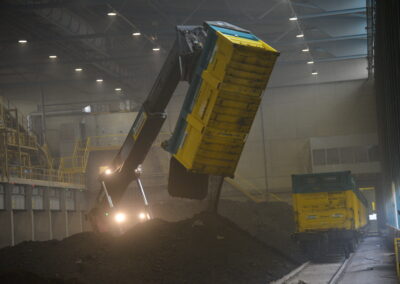
Total revision of the GüTG: The mood in the industry threatens to tip over
The Committee for Transport and Telecommunications of the Council of States (KVF‑S) has concluded its deliberations on the total revision of the Goods Transport Act (GüTG). Like the Federal Council, it wants to improve the framework conditions in favour of multimodal logistics chains. However, SBB Cargo’s current behaviour, with massive price increases and a reduction in services, contradicts these efforts and puts shippers in a dangerous dilemma.
This is the issue:
- What has happened so far
- A clear yes to multimodality and competition
- Controversial behaviour of SBB Cargo
- The Confederation has a duty
- Together out of the dilemma
What has happened so far
We have already reported in detail on the KVF-S’s initial proposals on the Federal Council’s dispatch on the Freight Transport Act (total revision of the Federal Act on Freight Transport by Rail and Shipping Companies) in our blog post ‘Now or never: groundbreaking debate on Swiss rail freight transport’. As communicated on 21 June 2024, the preliminary consultation committee wants to strengthen competition in freight transport in a targeted manner, regulate RailCom’s responsibility for enforcing a non-discriminatory offer in single wagonload transport (EWLV) and specify the content of the guidelines for rail freight transport as the basis for the EWLV service agreement.
A clear yes to multimodality and competition
The Council of States Committee has now completed its detailed deliberations. In its latest media release dated 20 August 2024, it calls on the legislator to stipulate in the regulations that loading contributions are passed on to shippers and recipients and that internal company services are made transparent and monitored.Finally, a majority of the committee suggests that an extension of the EWLV subsidy should be decided by Parliament and not by the Federal Council. In this way, the KVF‑S would like to ensure that the financial competence and the decision on a possible extension of support are at the same level
Controversial behaviour of SBB Cargo
Shippers’ tempers are currently running high over the behaviour of the SBB subsidiary SBB Cargo, which clearly runs counter to the efforts of the KVF‑S and the Federal Council’s previous statements. The monopoly provider demands a surcharge of 20% to 60% for its services – quite naturally and without cost transparency or the possibility of reducing costs from the system together with the rail freight operators. Even if the GüTG is amended as proposed and the Council of States approves the proposals of the KVF‑S, there is an acute danger that shippers will shift their transport operations to the road on a large scale. As such a strategic reorientation does not happen overnight, they will adapt their logistics concepts over the next two years. In this case, both the bill itself and the federal funding required for it would be obsolete – as would a parliamentary debate on the matter in the 2024 autumn session.
The federal government has a duty
In order to avoid unjustified market discrimination and a shift to the road, shippers could also orientate their logistics concepts towards alternative rail services offered by innovative and courageous rail freight companies and shift their transport volumes from a state monopoly to market-based competition. This would be in line with the aim of the KVF‑S, which calls for more competition through service agreements and revised guidelines on EWLV. It is therefore not insignificantly the responsibility of the federal government to initiate appropriate measures in the ordering process as soon as possible, to invite private freight railways to submit offers and to support them in their development.
Together out of the dilemma
The industry must find a way out of the current dilemma before the debate escalates. It is now up to the industry players and the federal government to work together to enable more competition and fundamentally modernise the EWLV. To do this, they must work hand in hand to change the organisation of the EWLV system, open it up more to third-party providers and develop it further on an equal footing. The private sector has already come up with some attractive solutions. If Parliament says yes to the promotion of EWLV and thus strengthens intramodal competition, shippers and rail freight companies could refrain from defiant reactions. Instead, they could – together with the SBB – seize the opportunity to finally break away from the monopolistic EWLV and develop a self-economic, broad-based network offer.
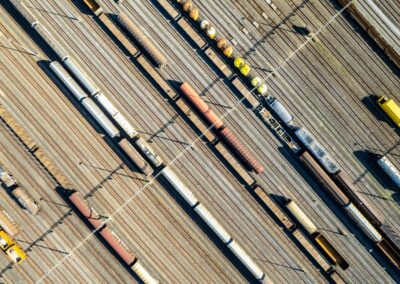
Now or never: groundbreaking debate on Swiss rail freight transport
In the spring, the Council of States’ Committee for Transport and Telecommunications (KVF‑S) took up the total revision of the Goods Transport Act (GüTG) and triggered ground-breaking discussions on Swiss domestic goods transport in Parliament. Together with other stakeholders, we at the VAP will help shape this debate. Our aim is to find a workable compromise and to emphasise the interests of our members.
That’s what it’s all about:
- Good news for parliament
- First proposals from the KVF‑S
- Lively dialogue between the stakeholders concerned
- Challenges for the economy and European logistics as a whole
- Pain threshold reached
- This is the way forward
Good news for parliament
On 9 February 2024, the Swiss Federal Council published its dispatch on the Freight Transport Act (total revision of the Federal Act on the Transport of Goods by Rail and Shipping Companies). In our view, particular attention should be paid to the following financial aspects
- Operating charges: In order to maintain single wagonload transport (EWLV) at the current nationwide level during the conversion phase, the Federal Council plans to subsidise it financially on a degressive basis for a limited period of eight years. At the end of this period, the aim is to achieve self-sufficiency. It is requesting CHF 260 million for the first four years.
More on this in the freight transport factsheet. - Incentives for shippers: The plan is to introduce unlimited transhipment and loading contributions and to compensate for the uncovered costs of the ordered freight transport services for a total of CHF 60 million per year.
Initial proposals of the KVF‑S
The KVF‑S, as the preliminary advisory committee of the First Council, adopted the total revision of the GüTG this spring after consulting the industry, including the VAP. The discussions in parliament over the coming weeks and months will be groundbreaking for the future of rail freight transport across the country. In its detailed deliberations, the committee examined numerous points. The majority of the committee is of the opinion that the total revision of the GüTG is suitable for ensuring and improving sustainable interaction between the various modes of transport for Swiss transport policy. It suggests making the following changes to the content:
- Explicit strengthening of competition in freight transport
- Clear regulation of RailCom’s responsibility for reviewing and enforcing the non-discriminatory non-discriminatory provision of EWLV services
- Specification of the content of the guidelines for rail freight transport (basis for the service agreement in the EWLV)
- Transfer of authority to extend certain provisions (in particular compensation) from the Federal Council to Parliament
The committee is expected to finalise the detailed discussion with additional information from the administration at its next meeting. The matter will then go to the plenary session of the Council of States.
Lively dialogue between the stakeholders concerned
Over the past few weeks, we have held discussions – with the support of our members – with the stakeholders of the Wagonload Transport Interest Group (IG WLV), the Federal Office of Transport (FOT) and the SBB Cargo subsidiary of Swiss Federal Railways (SBB). Alexander Muhm, CEO of SBB Cargo, presented the rough concept for a transformation towards self-sufficiency to the VAP’s Executive Committee. Muhm’s presentation triggered an intensive discussion between the parties involved and further talks on the possibilities and risks.
Challenges for the economy and European logistics as a whole
A look at the statistics shows that the transfer figures in Switzerland and Europe are stagnating or even shrinking slightly. There are many reasons for this. In Germany, there is great uncertainty about potential investment programmes and the timing of a noticeable economic upturn. Italy and France are struggling with modest growth figures and high levels of debt. This, combined with consumer sentiment, is having a direct impact on companies and their financial situation.
In logistics, in addition to the closure of the Suez Canal or natural disasters, there are other enormous challenges such as major construction sites (e.g. on the German rail network) and corresponding diversion traffic or higher track prices. All of this is fuelling operating costs and putting pressure on the competitiveness of the railways. The state of overall European logistics is important insofar as the majority of goods used in Switzerland originate from abroad and influence the EWLV in and through Switzerland.
Pain threshold reached
Since our foundation, we have been committed to attractive, competitive and customer-oriented rail freight transport and thus to the best possible modal shift to rail. We are committed to this goal either as a partner to numerous freight transport stakeholders or with our own ideas and projects. In transport policy, we advocate sufficient capacity on all infrastructures, favourable logistics locations and sensible framework conditions.
In view of global competition and the current framework conditions for the Swiss economy, the shipping industry as our membership does not have to or cannot afford massively higher costs on the railway. Our members can no longer cushion the impact of mistakes such as the lack of (investment) strategy in the area of rolling stock over the last 20 years, the ongoing dismantling of infrastructure facilities (dismantling of tracks, construction of investment properties) or insufficient integration into overall concepts from the perspective of users and customers. The consequences of such mistakes, such as massive price increases (beyond inflation), are fatal for the economy and society. The competitiveness of rail compared to road is dwindling and the optimisation of the modal split is being thrown into disarray. In addition, increasing cost sharing for the operational use of service points can send the wrong signals.
For our members, the pain threshold has long since been reached. We are prepared to provide significant support for the further development and transformation of rail freight transport. Provided that those responsible ensure complete transparency regarding costs and their breakdown and take measures within a fair, compatible and harmonised framework.
The way forward
We are taking the findings from the numerous discussions with the KVF‑S and other stakeholders as an opportunity to initiate numerous activities within our membership and organise further coordination meetings. Anyone who would like to talk to us about logistics as the backbone of the Swiss economy is cordially invited to join the dialogue.
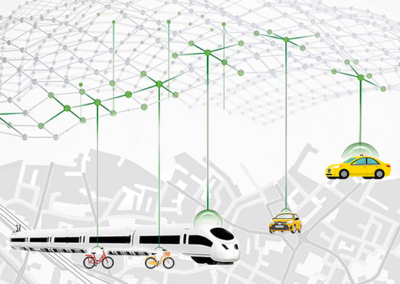
Data ecosystems: Industry round table with Federal Councillor Rösti
On 24 June 2024, Federal Councillor Albert Rösti brought together representatives from the public sector and the logistics industry at a round table to discuss the importance of a national data infrastructure for the exchange of information. We at the VAP have been driving the networking of data within our industry for some time now. We will continue to play this pioneering role in the future.
That’s what it’s all about:
- What has happened so far
- Kick-off for a broad-based dialogue
- Putting customer benefits at the centre
- In small but sustainable steps
- Laying the foundations for sustainable rail freight transport
What has happened so far
The topic of data ecosystems has been on our transport policy agenda for some time. For years, we have been campaigning for the establishment of a meaningful platform and for the networking of relevant data within the entire logistics chain and its stakeholders. We have reported on the benefits of data integration and the latest developments in various blog posts. (see “Data ecosystems: Sharing data to double its added value”, “Ready for the next level of digitalisation” and “Wagonload transport can become competitive”).
The discussions surrounding the Federal Act on the Mobility Data Infrastructure (MODIG) and the National Data Network Infrastructure Mobility (NADIM) initially only involved decision-makers and those affected by passenger transport. Fortunately, those responsible took up the concerns of freight transport and the needs of shippers at our suggestion. This enabled us to support the public administration with arguments and use cases and subsequently involve our industry in the exchange of opinions.
Kick-off for the broad-based dialogue
On 24 June 2024, Federal Councillor Albert Rösti, Head of the Federal Department of the Environment, Transport, Energy and Communications (DETEC), welcomed representatives of the public administration and the logistics industry to the round table. Heads of office and representatives from DETEC, parliament, numerous associations and companies from various areas of rail transport and the entire logistics sector were invited.
Mr Rösti wanted to find out what our industry thinks about a data infrastructure for exchanging information and what role the federal government should play. By inviting us to the discussion, he gave our members and partner associations the opportunity to play a key role in the further development of data networking. Those present agreed that a platform for the exchange of data for a mobility data infrastructure (MODI) is needed in order to simplify multimodal logistics solutions and flexible partnerships in networks such as single wagonload transport. Some expressed constructive criticism, but this did not fundamentally call into question the idea as a whole.
The chair of the meeting presented five use cases from different perspectives for a first phase of the MODI as a basis for discussion. One case presented the possibilities of better capacity utilisation on the railways and transparency of basic information and explained the extent to which these would benefit shippers and how the barriers to entry could be lowered.
Putting customer benefits at the centre
In our view, these considerations also include those aspects that have an impact on the range of freight transport services. Data ecosystems help to align multimodal logistics chains with the needs of customers and create added value for them. This requires innovative approaches at an organisational level and cooperation between market players. This is the only way to make freight transport more sustainable, more competitive and more customer-orientated.
Information on freight transport flows (domestic transport, foreign trade transport, transit) should be available to all parties involved in a timely and comprehensive manner, regardless of the mode of transport. This would enable those responsible at federal, cantonal and municipal level to utilise infrastructure components such as network capacities or transhipment areas more flexibly, coordinate them better, plan them in a more targeted manner and, if necessary, re-dimension them. As much of the necessary data is held by the federal government or is collected on its behalf, we believe that the public administration must play a central role in endeavours such as MODI and NADIM. In addition, with the introduction of the DAK, the associated, newly developed data sources can be meaningfully and additionally transferred to this data infrastructure.
In small but sustainable steps
In the coming weeks, DETEC will prepare a draft for the Federal Council and Parliament and involve the sector once again in order to reflect on the draft. The following elements are important to us for a harmonised further course of action:
- Remain pragmatic in order to provide practice-orientated data at a strategic and operational level with the greatest possible benefit for the stakeholders
- Utilise existing tools from Switzerland and abroad as well as well-prepared data (sources)
- Business and the logistics sector should play a key role in shaping this process; possible tasks for conceptual and operational phases will be discussed in the coming months
We at the VAP will play our part in ensuring that our members benefit from significant added value from the outset and that the needs of our industry are covered. With this ambitious goal in mind, we are already taking the first steps by promptly transferring the internal database of private connectors into a modern and internationally recognised tool and updating its content at the same time. To this end, we are in close contact with our colleagues in Germany and Austria in order to make further progress.
Foundation for sustainable rail freight transport
We are convinced that the public sector and the private sector must work together in equal measure to create a data ecosystem for rail (freight) transport and the entire logistics industry. This will make it possible to plan more effectively and operate more efficiently and to utilise investments in an even more targeted manner. It also forms the foundation for new business models, service improvements and partnerships between providers and customers.
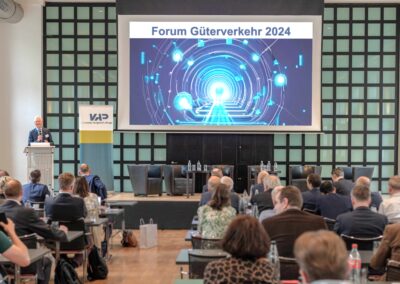
Wagonload transport can become competitive
Forum Freight Transport, 7 May 2024. Nationwide wagonload transport has a very high market share in domestic transport throughout Europe. In export and import transport, on the other hand, it is declining despite long distances. This is due to market compartmentalisation and outdated production structures. Exclusively state railways, exclusively on their home market is the motto. Wagonload transport is seen as system transport. Cooperation in networks, as is common and successfully applied on the roads, is not envisaged on the railway.
However, it is possible to transform wagonload transport into an automated, digitally networked and internationally open railway system. The states are offering the railway sector political and financial support for this.
That’s the point:
- Leading minds from the European transport and logistics industry in Zurich at the Freight Transport Forum
- Morning with an overview of the current legal framework
- Afternoon topic: Transformation of rail freight transport
- Focus on shaping a sustainable freight transport landscape
On 7 May 2024, leading figures from the European transport and logistics industry gathered at the Freight Transport Forum in Zurich to discuss the future of rail freight transport.
In his welcoming address, Frank Furrer, Secretary General of the VAP Association of the Logistics Industry, looked back on the previous forums from 2018 to 2024, at which an ongoing discussion was held on the development of freight transport. The focus was on topics such as multimodality, safety, innovation and digitalisation. He particularly emphasised the role of transport policy as a driver of change. In 2024, the focus will now be on new framework conditions for sustainable freight transport, in particular the transformation of rail freight transport. Frank Furrer emphasised the importance of favourable framework conditions for competition in order to enable multimodality, innovation and environmental protection. He cited the partnership between politics and business, cooperation between rail freight operators, logistics providers and shippers as well as the principle of subsidiarity as fundamental principles. The current bill to modernise rail freight transport was discussed in parliament. The VAP supports measures such as the introduction of digital automatic coupling (DAK) and bridging funding for single wagonload transport (EWLV) under certain conditions.
Dr Peter Füglistaler, Director of the Federal Office of Transport (FOT), gave an overview of the current legal framework and challenges in Swiss freight transport. For him, the temporary financial support for wagonload transport is a last attempt to save inland freight transport by rail. The DAK is the necessary means to achieve this, and with a subsidy of 30% to the owners, it is a good offer. Peter Westenberger, Managing Director of Die Güterbahnen in Deutschland, presented the digital railway and the VDV charter from a German perspective. He called for financial support for wagonload transport exclusively via the service routes, i.e. the reactivation or increase in volume at as many service points as possible. It is very difficult for competitors, as the data situation is extremely opaque. Claudia Nemeth from the Federal Ministry for Climate Protection, Environment, Energy, Mobility, Innovation and Technology (BMK) in Austria explained the instruments and strategies of Austrian transport policy with regard to rail freight transport and compared the per capita investments in Switzerland, Germany and Austria. Austria is committed to actively monitoring the measures of the Freight Transport Masterplan 2030 and recently presented the first monitoring report in this regard. One of these measures is the establishment of a modal shift coach at the end of 2023, who advises companies and municipalities on the modal shift to rail. Together with German Transport Minister Wissmann and Federal Councillor Rösti, Austrian Minister Leonore Gewessler supports the rapid introduction of the DAK. Ueli Maurer, Head of Intermodal Network at Bertschi AG, provided valuable feedback from a business perspective. Waiting for the DAK is impossible in view of the progress made on the road; it must be implemented immediately. The current construction sites, which are still completely inadequately coordinated internationally, as well as energy and track prices are currently fundamentally threatening the marketability of rail freight transport. He also called on infrastructure managers to pass on the savings from complete closures to rail freight transport as compensation for their additional costs.
In the panel discussion that followed, Westenberger spoke about the current chaotic construction site situation and the associated additional costs and called for an improvement in the quality of rail freight transport. Nemeth agreed, but was optimistic about the future of rail freight transport and compared the current challenges to a small child learning to walk: there are setbacks, but it gets better. Füglistaler emphasised that there is no alternative to the corridor renovations and stressed the need for investment in infrastructure. Dr Jens Engelmann, who moderated the panel discussion, raised the issue of the effectiveness of funding measures and discussed the various approaches to supporting rail freight transport. Füglistaler and Nemeth defended the role of the state railways for single wagonload transport. Engelmann concluded the discussion by saying that rail makes an important contribution to sustainability and must continue to be promoted, but that challenges such as capacity bottlenecks and the costs of technological innovations must also be overcome.
After a short break, the event focussed on the transformation of rail freight transport in the future. Gilles Peterhans, Secretary General of the International Union of Wagon Keepers (UIP), shed light on the current status of digital automatic coupling (DAK). He emphasised the difference between technical retrofitting and the associated transformation of archaic rail freight transport. The latter is to be seriously reorganised to make it competitive and transformed into a completely new rail system. Gregor Ochsenbein, Deputy Head of the Data for an Efficient Mobility System programme at the FOT and Jürgen Maier-Gyomlay, Head of the Logistics Working Group / IG WLV at the VAP, highlighted the importance of data ecosystems for efficient logistics. Peter Sutterlüti, CEO of Cargo sous terrain AG, presented the Cargo Sous Terrain (CST) concept. The purely privately financed logistics solution is available exclusively for general cargo. The interplay of underground main leg and overground fine distribution has the potential to significantly complement rail and road transport. Stefan Kirch, Co-Founder and Member of the Management Board at NEVOMO, presented the potential of maglev technology for a more effective and higher-capacity freight transport solution. In particular, autonomous driving of freight wagons in large-scale sidings with a large number of loading and unloading stations as well as consolidation points for dispatch and receipt offer exceptional potential for savings.
The event culminated in another panel discussion, which focussed on the future of logistics in 2035. In addition to the voluntary nature of data disclosure, the challenges of digital transformation, particularly in terms of costs and collaboration with various stakeholders, were also discussed. In conclusion, it was emphasised that we should be open to innovative solutions and not let problems hold us back. Frank Furrer summarised the event with a statement that was as confident as it was challenging: Anything is possible, as long as all industry players join forces and close ranks to move forward pragmatically and with a willingness to compromise.
It was a day full of exciting encounters, informative presentations, stimulating discussions and a clear focus on shaping a sustainable freight transport landscape. The participants left the conference with new insights and impulses for the further development of the industry.
We are already looking forward to the Freight Transport Forum 2025!
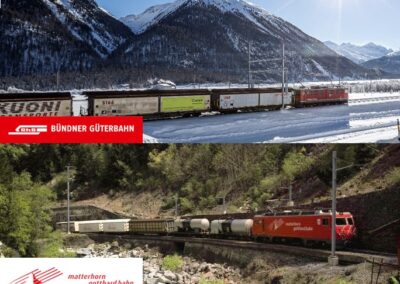
The future belongs to combined transport
What future do freight railways have in Switzerland? The VAP discusses these and other questions in a double interview with Peter Knaus, Head of Graubünden Freight Railway at the Rhaetian Railway (RhB), and Peter Luginbühl, Head of Operations at the Matterhorn-Gotthard Railway (MGBahn). In the debate, the experts talk about in-house operation and outsourcing, economic viability, innovation, competition and making rail freight transport more flexible.
Mr Luginbühl, rail freight logistics is outsourced on the Matterhorn-Gotthard Railway. Why is that?
Peter Luginbühl: As a company that operates primarily in the tourism sector, our main focus is on passenger mobility. Freight transport accounts for around 2% of the overall result in the public service sector. In 2011, the decision was made to concentrate on rail transport for freight transport. We have placed the upstream and downstream interfaces with the customer under the responsibility of Alpin Cargo AG as the overall logistics service provider. This allows us both to concentrate on our core competences: We are responsible for transport by rail, Alpin Cargo for the interface to the customer, i.e. also for the last mile. In Zermatt, for example, fine distribution is carried out using electric vehicles and horse-drawn carriages.

Peter Luginbühl, Head of Operations Matterhorn-Gotthard Railway
To what extent is this outsourcing an advantage?
Peter Luginbühl: This operator model has proved its worth for our starting position with a limited size and a fairly manageable contribution of freight transport to the overall result. It is also ideal from the freight customers’ point of view.
Would you outsource again?
Peter Luginbühl: Yes. Our operator model works very well. Nevertheless, we question it every five years and carry out a site assessment. We are only about a quarter of the size of the RhB’s Graubünden freight railway. So it doesn’t make sense to run it ourselves.
Mr Knaus, you operate rail freight transport yourself. What does this in-house operation look like?
Peter Knaus: We have orders from the canton of Graubünden to provide the public service, among other things. In the past, transport companies were literally forced onto the railway. Things are different today. We use the railway for what makes economic sense. This creates a win-win situation for us and our customers. For short distances or the last mile, we work together with road haulage companies. We regularly exchange information with these business partners at our annual transport platform and through personal contact.
What disadvantages do you see with your model?
Peter Knaus: An enormous amount of effort for our own rolling stock. Here’s an example: our entire fleet of around 320 carriages is equipped with vacuum brakes. Now, for strategic reasons, RhB has decided to switch all carriages to air brakes by 2040. According to our 2023–2030 strategy, we will modernise half of the fleet and renew the other half, as this is the more economical option.
What key criteria do you use to select the mode of transport?
Peter Luginbühl: We are convinced that although rail is ideal for all goods, it is not equally suitable for all of them. We currently transport around 40 to 50% of goods between Visp and Zermatt by rail. Rail’s strengths over road lie in its large capacities, high availability and reliability. We can guarantee the exact arrival time in Zermatt 99% of the time. With every mode of transport, you have to weigh up which is the best economic and ecological modal split.
Peter Knaus: Lorries are also becoming increasingly ecological. This in turn means that the roads will continue to be well frequented. The canton is happy for every lorry that gets off the road so that there is less congestion in private transport.

Peter Knaus, Head of Freight Transport at Bündner Güterbahn
Which products are more suitable for rail transport, and which still have potential?
Peter Knaus: Long-distance goods that depend on punctuality and reliability, such as foodstuffs. Likewise letter and parcel post and general cargo that needs to be delivered on time. Scheduled freight, which we transport from 4.00 am. Rubbish and recycling material must be transported within 24 hours. Building materials such as cement or salt are also very suitable for rail freight transport. We also transport an extremely large amount of round timber, around 95%, to Tirano. We are predestined for this, as customs clearance is also more economical than with a lorry. We transport most goods in combined transport, except for logs and general cargo. Combined transport has great potential for the future. I see potential for pellet transport in our area.
Peter Luginbühl: We have a very similar product focus to RhB. But we don’t transport wood. We also transport large quantities of heating oil. We also transport a lot of luggage for the tourist destination of Zermatt. Over the last few decades, consignments have become smaller, not least due to the mail order business.
Reliability and punctuality: what do you think?
Peter Luginbühl: As a small railway, we can guarantee stability and punctuality extremely well. 95% or more of our customers are extremely satisfied with our reliability. The situation is very different in the European or Swiss-wide freight railway system. Punctuality is a huge problem here. The industry still needs to improve a lot and become a more reliable partner.
Peter Knaus: I agree with that. We are extremely punctual, especially when it comes to food transport or scheduled freight. When we work with the big players, it becomes more challenging to meet the desired deadlines. For the WEF transport project, for example, we were reliant on suppliers from the standard gauge. If they don’t arrive on time in Landquart, we can’t deliver the containers to Davos on time either. This poses a major problem for our customers, as time slots allocated at the WEF have to be adhered to.
What developments do you recognise in production?
Peter Luginbühl: At the moment we still have mixed production, whereby we mainly work with block trains. We are increasingly moving away from attaching freight wagons to passenger trains. For one thing, the new multiple-unit trains and the capacities of our track systems no longer meet these requirements. We are also losing the logistics space for transhipment. We will increasingly concentrate on block goods trains.
Peter Knaus: We run 52 freight-only trains a day on the main network. The new trains with automatic coupling are only designed to move themselves. The sheer number of goods trains means that we retain a certain degree of flexibility. We have fixed annual timetables for scheduled freight, everything is planned through. We only run mixed services towards Arosa and Bernina, as there are not enough train paths for pure goods trains.
Speaking of train paths: What challenges do you face here?
Peter Knaus: During the day, regional passenger transport sets the pace for us. We have to adapt to this. We also have to adapt to prestige trains such as the Glacier and Bernina Express. Our most flexible time slots are from 4.00 am to 6.30 am. From 9.00 p.m. there is mainly construction work going on, so we can only operate to a very limited extent. The RhB and the canton support us well in the track issue and involve the various interest groups.
Peter Luginbühl: I see four challenges with the railway lines. Firstly, economic efficiency. Our desired train paths are often occupied by tourist trains, which are more economical. Secondly, economic viability. We have enormous investments and major financing issues. We make an important contribution to the security of supply in our region. Thirdly, flexibility through speed. We cannot react as quickly to changes in supply as a transport company can. Fourthly, innovative strength. We still produce in the same way as we did 30 years ago. I am curious to see whether we will actually be able to transform through digitalisation.
What best practice cases are there that you and others can learn from?
Peter Luginbühl: I see fine distribution over the last mile as a successful model. Our partner does it in such a way that more and more customers come, precisely because he is so flexible. And finally, I consider the disposal of rubbish to be an exciting business model from an ecological and economic point of view.
Peter Knaus: In my opinion, a good example is the conversion of beverage transport. The Valser company has been transporting its beverages from Vals via Ilanz to Untervaz for over 40 years. The early morning transhipment at the ramp in Ilanz caused a lot of noise emissions. This gave rise to the idea of using swap bodies for transshipment. Together with the parent company Coca-Cola and the canton, we procured suitable swap bodies. These have proved very successful. In the foreseeable future, we will even be transporting them using electric lorries with trailers. In dialogue with the canton and the police, we have obtained a special permit for trailers for the Schnaus-Ilanz route. . The only sticking point at the moment is the HVF reimbursement in combined road-rail transport. This refund is still linked to the LSVA. In future, it must be linked to combined transport. The legal framework still needs to change.
Which innovations will prove their worth in rail freight transport in the coming years?
Peter Knaus: I consider power packs, i.e. batteries that are mounted on the freight wagons, to be a sustainable solution. These can be used as an energy supplier for refrigerated containers, but also for construction work in the tunnels. We have even equipped sliding wall wagons with modern Powerpacks. We have also made great progress in the area of freight wagon tracking. We now know where the freight wagons are, how fast they are travelling, what their battery levels are, what the temperatures are in the refrigerated containers, etc. We can utilise this data in a digital scheduling system. We have also already thought about an Uber system for general cargo. That would be very innovative, but the sticking point here is the production costs and suitable partners.
Peter Luginbühl: Rail freight transport will still be around in 30 to 50 years’ time. To achieve this, we need to move away from the current rigid systems. Starting with the wagon superstructures, through rigid logistics processes in freight handling or wagon management, to wagon flexibility. There is potential everywhere to meet future requirements with innovations.
What does it take for such innovations to be realised?
Peter Knaus: I am a member of the FOT expert committee for technical innovations. The federal government is very open here and supports innovations that bring long-term benefits. The canton of Graubünden is also very open to innovations and supports them to the best of its ability if they bring economic and ecological benefits.
Peter Luginbühl: In regional passenger transport, it took pressure from a private economic player like Google to get things moving. That would probably be good for us too. It would be exciting if a market third party were to build up pressure.
What do you think about Europe-wide integrated data platforms?
Peter Knaus: An exciting starting point for the players in freight transport, and not just on the railways. The development of this is challenging, and I’m not sure whether everyone would make their data available. Currently, our customers can use tracking to see where the loading equipment is currently located. This allows a mineral oil transport customer, for example, to organise their and our scheduling more efficiently. I would welcome greater consistency with our customers, especially when it comes to timber loading.
Peter Luginbühl: We would have to equip the wagons with tracking devices. Only then could we take further steps towards data exchange, including across modes of transport. We at MGBahn are less concerned about this because we have a local focus.
Where do you see the greatest levers for advancing rail freight transport?
Peter Luginbühl: In making the rail freight system more flexible. We will never be as flexible as road transport. But we must be able to react more quickly to customer needs and play to the strengths of the railways. The potential for rail transport is huge. The pressure to shift transport to rail will come of its own accord.
Peter Knaus: You certainly have to differentiate between metre gauge and standard gauge. We have a manageable network with metre-gauge tracks. Compared to the SBB, we can react very quickly. A planned changeover of two weeks is quick compared to SBB – and slow compared to a road transport company. The latter switches within days. The more money we have, the faster we can invest in traction units and freight wagons or modernise the fleet and the more flexibly we can react to the wishes of our customers.
To what extent would more competition among the rail freight companies change the dynamics of the rail freight market?
Peter Luginbühl: More competition, more dynamism. However, the entry threshold for new players in our market is very high. If you want to operate a freight railway, you need a compliant traction unit and expensive rolling stock. That’s a different matter from buying a lorry for a few hundred thousand francs. Examples such as Railcare or Swiss Post show that competition leads to innovation and price pressure.
Peter Knaus: Competition is good and encourages development. Those responsible at Railcare have a very good transport logistics concept, they combine road and rail with their own fleet. Competitor companies on the railway are also dependent on free train paths. They cannot simply set off when they are fully loaded. In terms of price, small rail freight operators have the advantage that they have to factor in lower overheads.
What do you think of the VAP and what would you recommend to our association?
Peter Knaus: I have always had good contact with Secretary General Frank Furrer. I was in charge of the transport logistics project at the regional parcel centre in Untervaz. I worked very closely with the VAP. He was an independent and very valuable project member. I find the dialogue with Frank Furrer, Jürg Lütscher and other VAP representatives, who bring in a shipper’s perspective, constructive and exciting.
Peter Luginbühl: I didn’t know that this association existed until recently. My recommendation would be for you to make your association better known among freight transport companies. I think it’s great what the VAP is doing.
What hasn’t been said yet?
Peter Luginbühl: This discussion has given me valuable ideas, thank you for that.
Peter Knaus: Thank you for inviting us to this interview and giving us the opportunity to present ourselves.
|
About Peter Knaus and the Graubünden freight railway Peter Knaus is Head of Freight Transport at the Graubünden Freight Railway of the Rhaetian Railway (RhB). He also represents the narrow-gauge railways on the Freight Transport Commission (KGV) of the Swiss Association of Public Transport (VöV) and is a member of the Rail Freight Transport Advisory Group of the Federal Office of Transport (BAV). Under the umbrella of RhB, the Graubünden Freight Railway offers a wide range of transport solutions for companies and private individuals in Graubünden. With its diverse fleet of wagons – including container wagons, sliding wall wagons and tank wagons – it transports goods of all kinds. The service points cover the whole of Graubünden and include important industrial centres, logistics centres and agricultural businesses. As a result, the Graubünden freight railway guarantees a comprehensive supply of goods throughout the region and is an indispensable part of the regional logistics infrastructure. |
|
About Peter Luginbühl and the Matterhorn-Gotthard Railway Peter Luginbühl has been Head of Operations at the Matterhorn-Gotthard Railway since 2017. The qualified controller previously worked for several years as Head of Corporate Development HR at SBB. The Matterhorn-Gotthard Railway operates its freight transport with Alpin Cargo AG, a subsidiary of the Planzer Group. It offers a wide range of services for local businesses. These include goods handling, warehouse logistics and transport by both rail and road. The supply of mineral oil is another important service. Alpin Cargo not only serves companies on the last mile, but also private individuals. They can use its services for removals, the storage of household goods and home deliveries with assembly and e‑transport. |
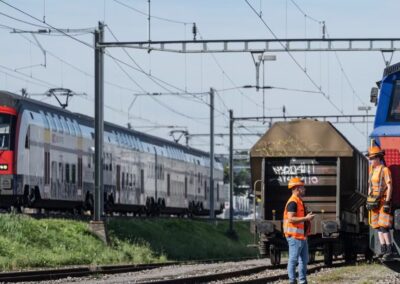
Joy at SBB, concern at SBB Cargo
SBB is in excellent financial health. This was communicated on 11 March 2024 with the 2023 annual accounts. Only subsidiary SBB Cargo is still considered a problem child and is to receive financial support. We at the VAP think so: This must not be tantamount to permanent subsidisation of single wagonload traffic (EWLV). And the proposed financial injection of CHF 1.25 billion is invalid in view of the 2023 annual accounts.
That’s the point:
- 2023 results: black and record-breaking
- Eternal problem child remains in deficit
- Record results and billions in aid – how does that fit together?
- Corporate responsibility required
2023 results: black and record-breaking
1.3 million travellers, CHF 269 million profit, 9.9 % additional revenue from passenger transport, 92.5 % punctuality despite 20,000 construction sites, debt down to CHF 11.3 billion, all investments financed from cash flow: SBB’s 2023 financial year is bursting with good news and superlatives. For the first time in the post-Covid era, SBB is back in the black. This pleasing performance is primarily due to a record number of passengers and substantial profits from SBB Real Estate. It is therefore not surprising that those responsible are looking to the future with confidence.
Eternal problem child remains loss-making
The financial situation in the freight transport division of the re-nationalised SBB Cargo looks much less rosy. Although the 2023 result of SBB Cargo Switzerland improved by CHF 148 million compared to the previous year to minus CHF 40 million, this is mainly due to impairments from 2022. Transport performance fell by 7.5 % compared to the previous year. According to SBB, the main drivers were price pressure, the structural deficit in the EWLV and the economic slowdown.
The only thing that remains unclear is how high this so-called structural deficit should actually be quantified. In the political debate, SBB speaks of CHF 80 to 100 million, while the 2023 Annual Report states CHF 40 million. Has SBB Cargo generated a profit of CHF 40 to 60 million in block train transport?
Record results and billions in aid – how does that fit together?
Peter Füglistaler, Director of the Federal Office of Transport (FOT), gives a plausible answer to this question in his comment on LinkedIn: «I don’t know». The fact that SBB is doing well financially is indeed commendable. After all, shippers want strong partners in the transport business. Nevertheless, we at the VAP are sticking to our position: SBB Cargo’s financial difficulties should not be confused with the necessary modernisation and restructuring of EWLV. In January 2024, the Federal Council rightly requested measures for the modernisation of the nationwide EWLV in its «Message on the Freight Transport Act» (see blog post «Setting the right track for inland freight transport by rail»). Instead of a reorganisation contribution to the EWLV, we are calling for targeted, degressive and temporary bridging funding for a sustainable transformation of the EWLV towards self-sufficiency. Only in this way can the EWLV modernise and grow.
Entrepreneurial responsibility required
Parliament is currently discussing the «Dispatch on the amendment of the Federal Act on Swiss Federal Railways (sustainable financing of SBB)». According to this, the federal government is to cover SBB’s pandemic-related deficits in long-distance transport. VAP President and Councillor of States Josef Dittli commented: «Why should the federal government, which has just announced linear cuts and plans to make cuts, use taxpayers’ money to support a state-owned company that is achieving record results? This is where I make an urgent appeal to the corporate responsibility of those involved.»
